-
'First to suffer' — Russia singles out Poland, Baltics in threat to NATO
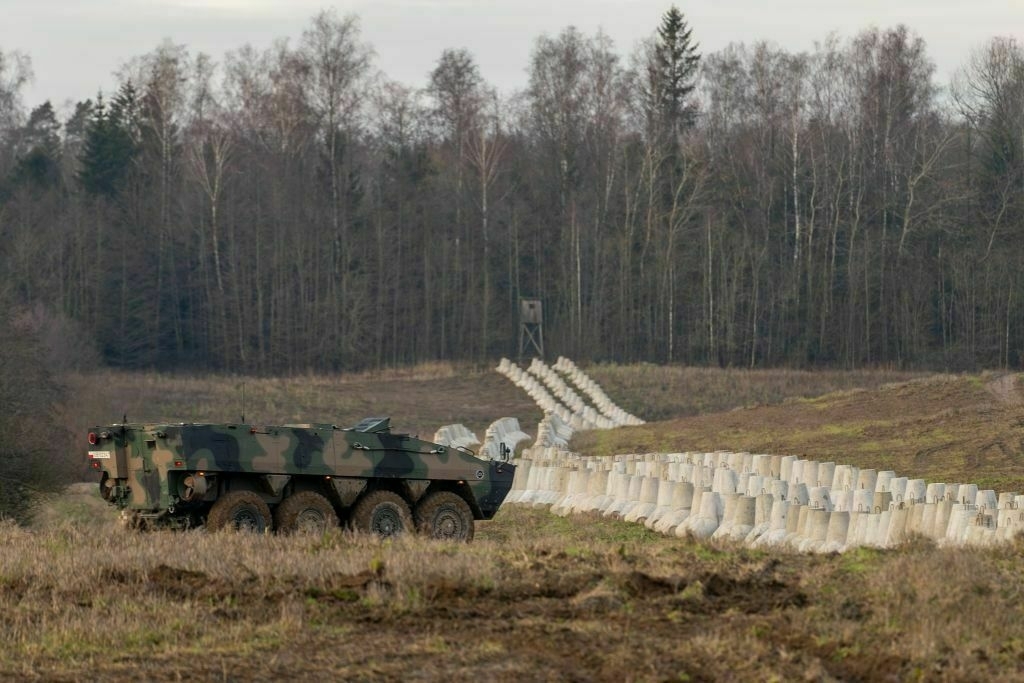
Poland and the Baltic states would be the “first to suffer” in a direct conflict between NATO and the Russian Federation, Russia’s Foreign Intelligence Service (SVR) Director Sergey Naryshkin said on April 15.
The nations along NATO’s eastern flank have sounded the alarm on escalating threats from Russia since Moscow launched its full-scale invasion of Ukraine in February 2022.
Any NATO aggression against Russia or Belarus would have damaging consequences for Poland and the Baltic countries of Latvia, Lithuania, and Estonia, Naryshkin told the Russian state news outlet TASS.
“They should understand, but do not yet understand, that in the event of aggression by the North Atlantic Alliance against (Russia and Belarus), damage will be done, of course, to the entire NATO bloc, but to a greater extent, the first to suffer will be the bearers of such ideas among the political circles of Poland and the Baltic countries,” Naryshkin said.
These countries have shown “high aggressiveness” towards Russia, he said, accusing Poland and the Baltics of “constantly rattling their weapons.” Naryshkin singled out Poland for its plans to install anti-personnel mines along the border with Belarus and Russia’s heavily militarized Kaliningrad exclave, as well as Warsaw’s request for the U.S. to deploy nuclear weapons in Poland.
Estonia, Latvia, Lithuania, and Poland on March 18 announced their withdrawal from the Ottawa Convention, an international treaty banning the use, production, and stockpiling of anti-personnel mines, citing “fundamentally deteriorated” security in the region.
The defense ministers of the four countries said military threats from Russia and Belarus had “significantly increased.”
Naryshkin called this posture “sad” and implied that NATO was to blame for Russia’s all-out war against Ukraine — an oft-repeated Kremlin propaganda narrative used to justify the unprovoked invasion of a sovereign country.
"(Poland and the Baltic countries) just can’t understand that it was the build-up of military activity on the borders of Russia and Belarus that became one of the factors, one of the reasons for the current large, acute, and very dangerous crisis on the European continent," Naryshkin claimed.
This narrative has found traction with some members of U.S. President Donald Trump’s administration, including Trump himself. As Russian officials escalate rhetoric against NATO member states, the White House is reportedly planning drastic funding cuts to the Alliance.
Some members of Trump’s circle, including billionaire Elon Musk, have called for the U.S. to exit NATO althogether. The U.S. is also likely planning to withdraw some 10,000 troops from member states in Eastern Europe.
President Volodymyr Zelensky warned on April 13 that if Russia is not stopped in Ukraine, its next step may be to seize NATO territory and trigger a global conflict. Western leaders and intelligence agencies have warned of a potential large-scale war in Europe within the next five years due to Russia’s increased aggression.
Ukraine war latest: Ukrainian forces target Russian missile brigade behind deadly Sumy attack; Witkoff unveils ‘5 territories’ deal for RussiaKey developments on April 15: * Ukrainian forces target Russian missile brigade behind deadly Sumy attack * Witkoff says ‘5 territories’ key to proposed Russia-Ukraine deal after meeting Putin * North Korean artillery now dominates Russia’s ammunition supply in war against Ukraine, investigation…The Kyiv IndependentThe Kyiv Independent news desk
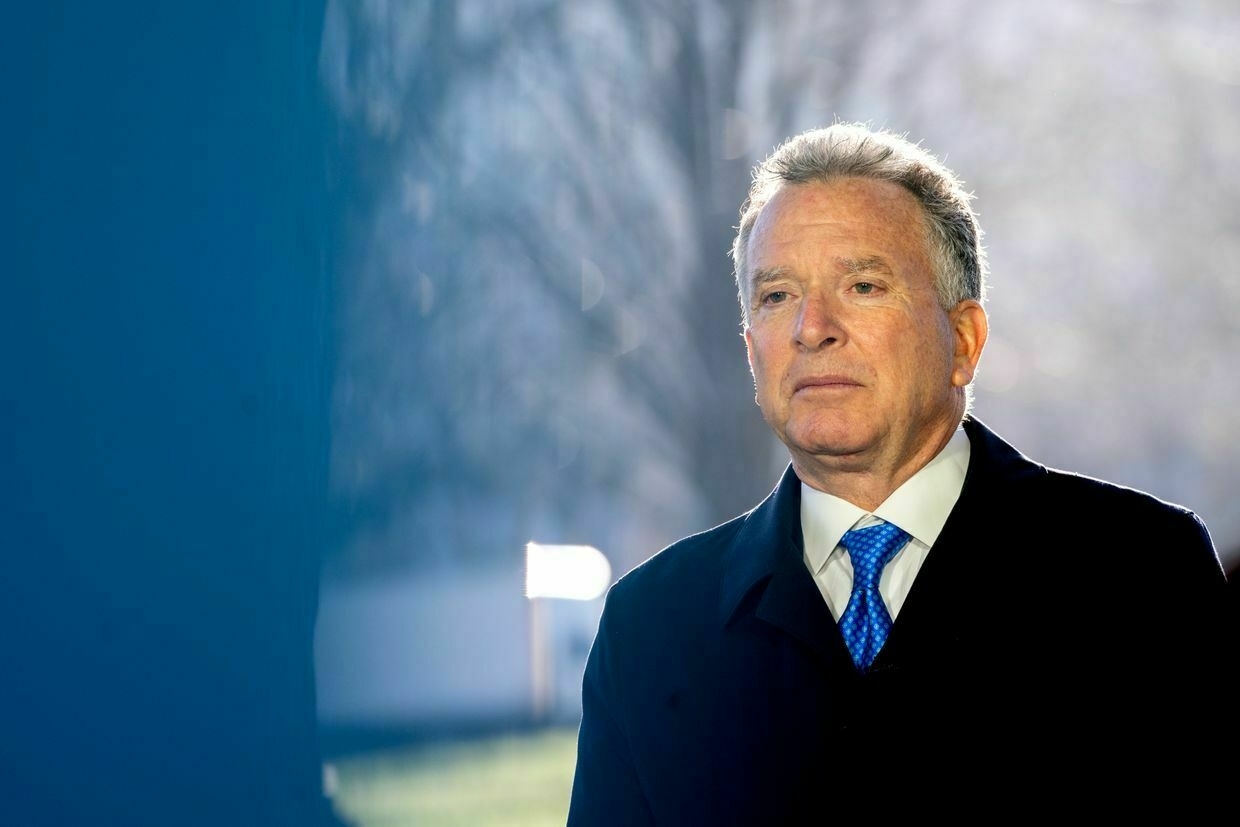
-
Orbán’s EU Standoff, Trump’s Peace Efforts, and Ukraine’s Weapon Surge! | News Pulse
-
Russia’s deadliest attacks on civilians since the start of the full-scale invasion
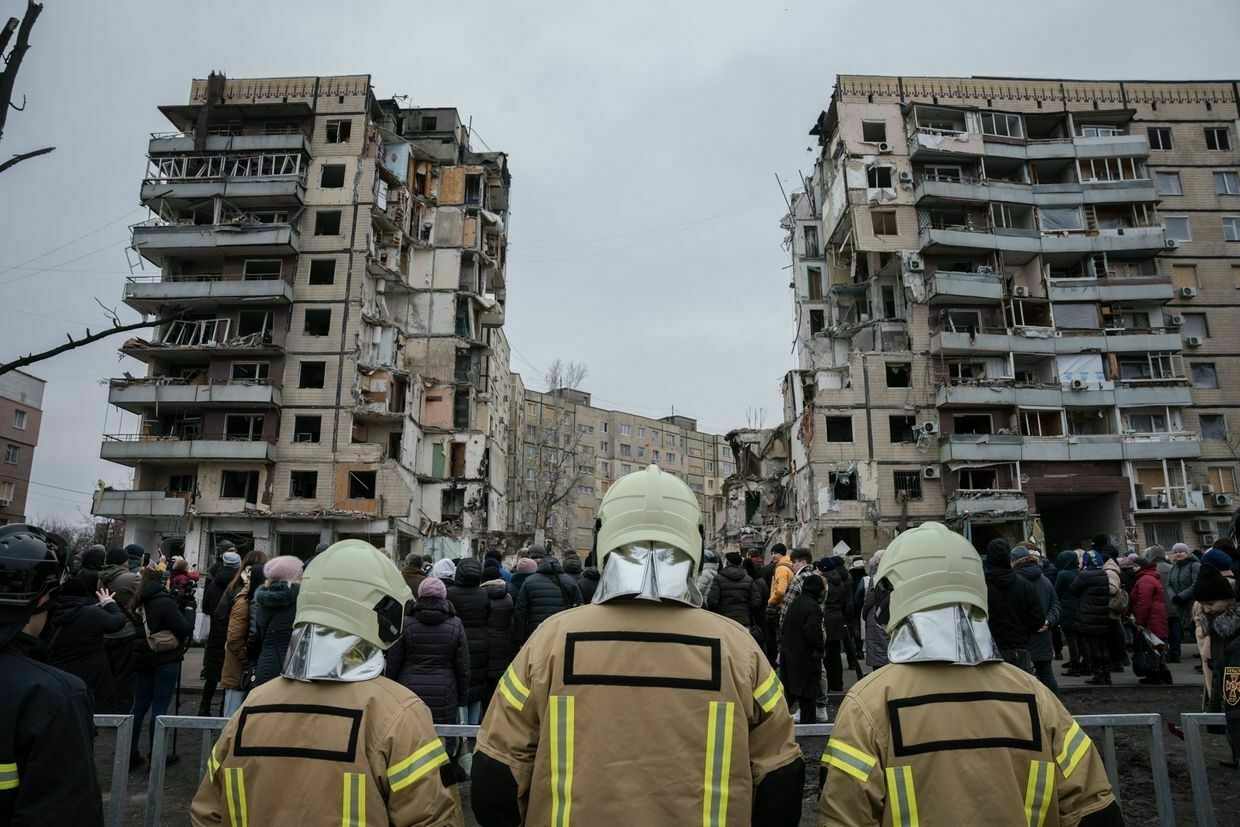
After Russia launched a missile strike at the city of Sumy on Palm Sunday — killing 35 civilians, including children, and injuring over 100 others — U.S. President Donald Trump wrote off the attack as a “mistake.”
“I think it was terrible, and I was told they made a mistake, but I think it’s a horrible thing, Trump said when asked about the Sumy attack.
But Russia’s missile strike on Sumy is just one in a series of deadly attacks on civilian areas since the start of its full-scale invasion against Ukraine. Moscow’s attacks have repeatedly targeted residential buildings, railway stations, city centers, hospitals, evacuation convoys, and people’s gatherings — including a wake service — inflicting high civilian casualties with each one.
“(Launching) a missile with cluster munitions is something Russians do to kill as many civilians as possible,” said Presidential Office Head Andriy Yermak, referring to one of the missiles used in the Sumy attack, which contained fragments that exploded mid-air to inflict maximum damage to the surrounding area.
Russia’s latest deadly attack also comes amid ceasefire negotiations and peace talks brokered by the U.S. While Kyiv agreed to a full 30-day ceasefire on March 11, Moscow has so far refused to do so. Sumy residents told the Kyiv Independent on April 14 that attacks on the city have only gotten worse in recent months.
While the Kremlin routinely claims to hit military targets while striking civilian areas, in only one case with mass casualties did international observers find Ukrainian forces partially responsible for endangering civilians after taking firing positions in the Stara Krasnianka nursing home in Luhansk Oblast in 2022.
Due to heavily mined fields around the nursing home, the Ukrainian military said it was unable to evacuate the 86 people among the nursing home’s patients and staff. On March 11, 2022, Russians attacked the building with heavy weapons, killing at least 56 civilians.
But international law dictates that even the presence of soldiers doesn’t justify military action if there is a high risk of civilian casualties, Dmytro Koval, lawyer and director of the Ukrainian human rights organization Truth Hounds told the Kyiv Independent earlier as part of an investigation into Russia’s destruction of the Kakhovka dam in Kherson Oblast that took the lives of an estimated hundreds of civilians.
Below is a list of Russia’s deadliest attacks on civilians on record since the start of the full-scale invasion. The list reveals a pattern of targeted attacks at civilian centers, with little or no evidence to suggest the strikes were failed attempts at hitting Ukrainian military targets.
Kharkiv administration buildingWith Russia’s advance in March 2022, shortly after the start of the full-scale invasion, Moscow launched several attacks with mass civilian casualties in regional centers along Ukraine’s northern borders with Russia and Belarus.
Around 8 a.m. on March 1, Russia hit the Kharkiv Regional State Administration building on the city’s main square with two “Kalibr” cruise missiles.
The first strike on the square was captured on video, showing several civilian cars disappearing in an explosion.
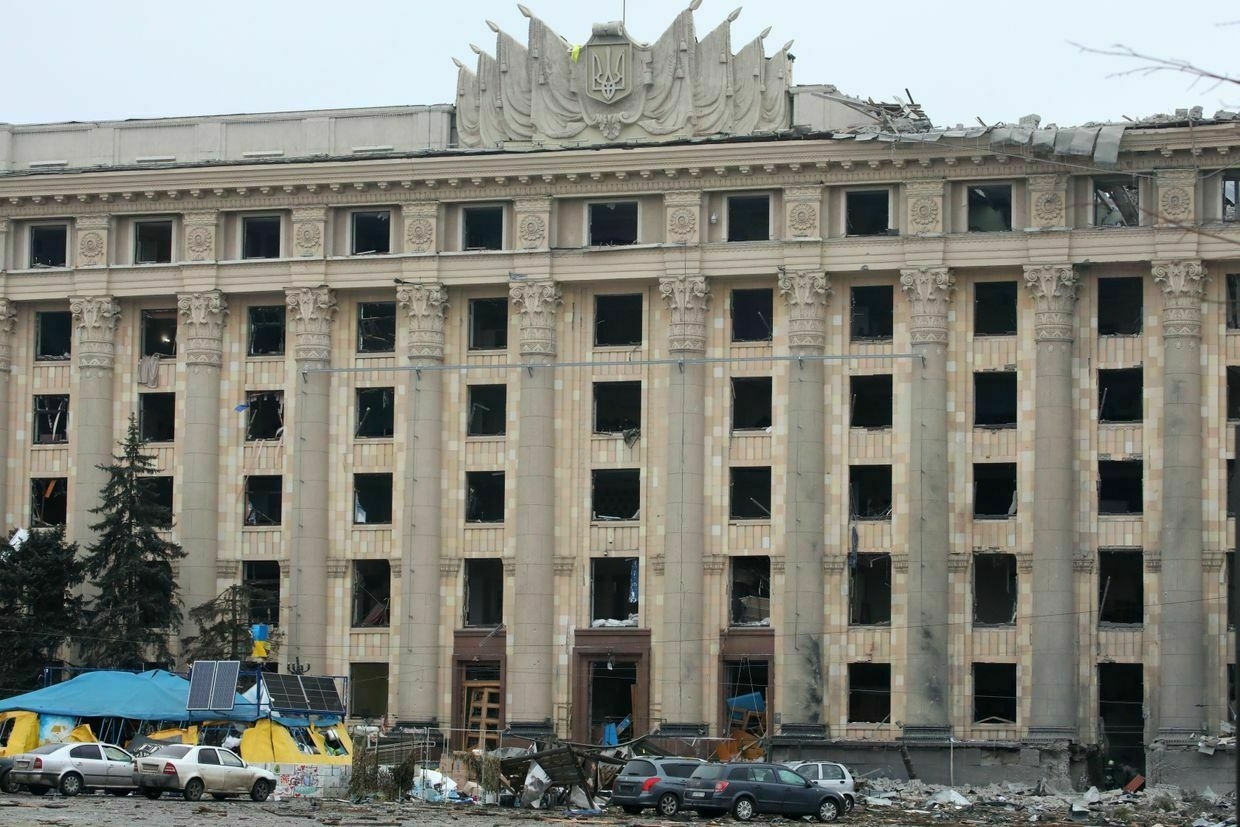
The Kharkiv Regional State Administration building after the missile strike on March 1, 2022. (Vyacheslav Madiyevskyy/ Ukrinform/Future Publishing via Getty Images) The second missile destroyed the right wing of the building less than 10 minutes later, when rescuers arrived on the scene — in what would become a model for numerous subsequent ‘double-tap’ attacks, designed to hit the first responders arriving on the scene of an attack soon after the first strike.
Kharkiv Oblast Governor Oleh Syniehubov later shared in 2023 that the final death toll in the Kharkiv administration building attack was 44 people.
Residential area in ChernihivOn March 3, 2022, Russia bombed a square in a residential area of the city of Chernihiv, a regional center that lies between Russia and Ukraine’s capital Kyiv, killing 47 people.
“This was a merciless, indiscriminate attack on people as they went about their daily business in their homes, streets and shops,” said Joanne Mariner, Amnesty International’s crisis response director.
After an investigation, Amnesty International was not able to identify a legitimate military target in the vicinity of the strike. The majority of victims were queuing for food when the missiles struck, the investigation found.
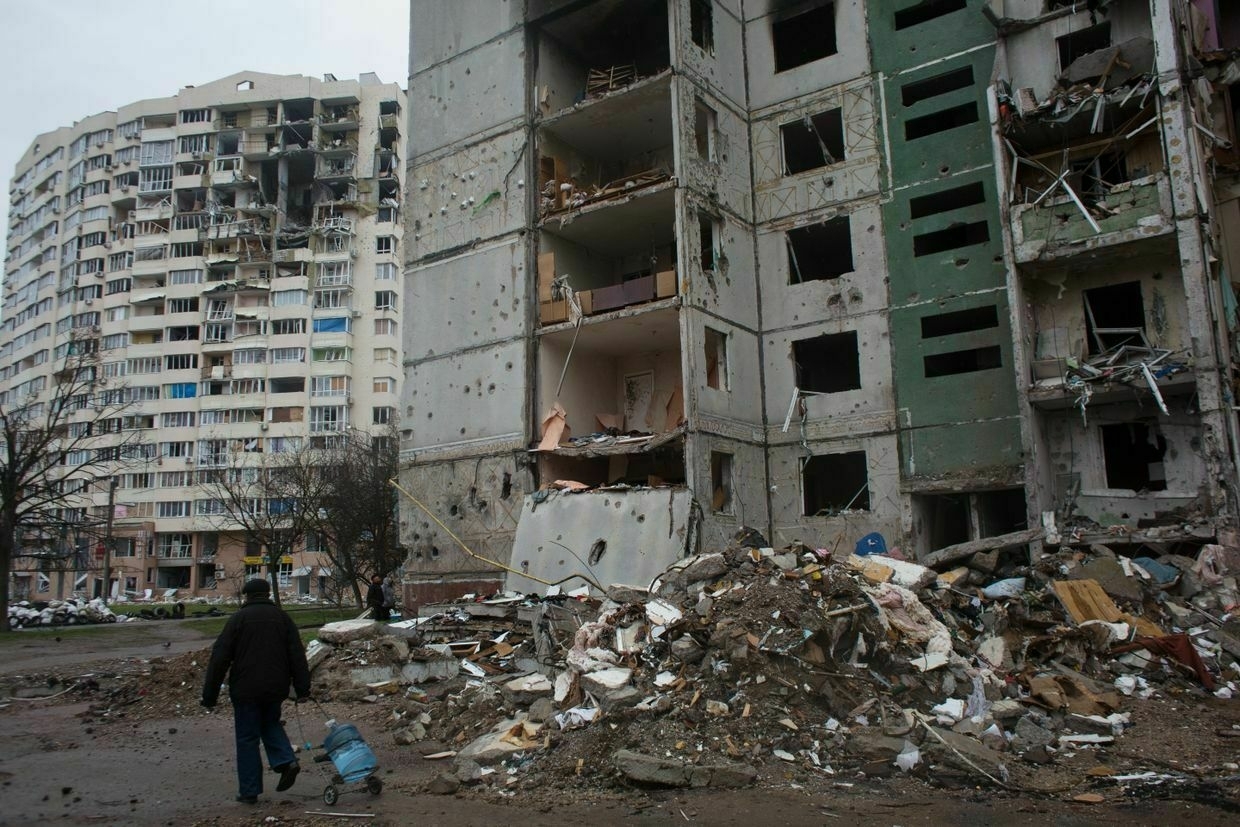
A resident walks through a neighborhood destroyed by shelling in Chernihiv, Ukraine, on Apr. 9, 2022. (Anastasia Vlasova/Getty Images) Homes in SumyOvernight on March 7, 2022, Russian forces launched three bombs on homes in Sumy, a northern regional center that borders Russia’s Kursk Oblast, Bryansk, and Belgorod oblasts.
The strikes took the lives of 22 people, including three children, according to local officials. One of them was Artem Pryimenko, Ukraine’s 15-year-old Sambo champion, killed with his two younger brothers and their entire family on the eve of their planned evacuation from the city.
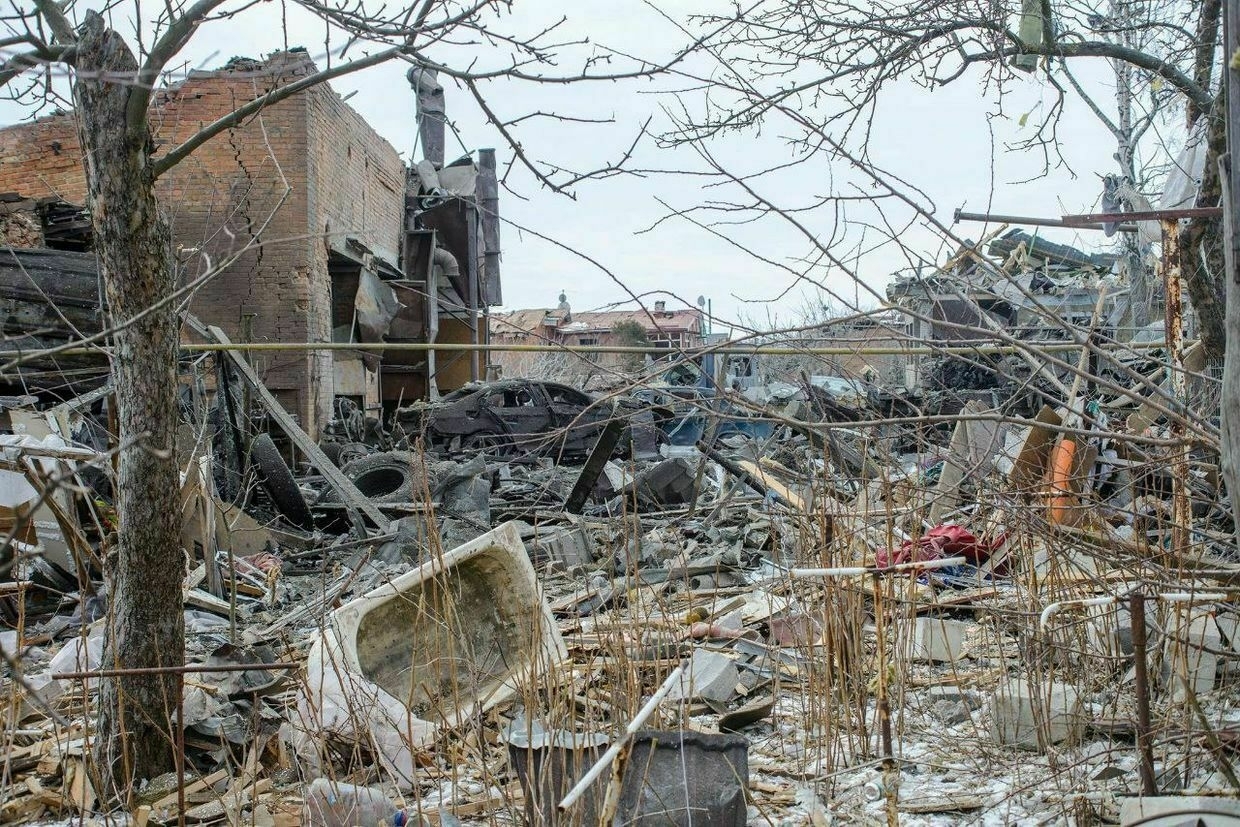
The aftermath of Russian forces dropping three bombs on homes in Sumy, Ukraine, overnight on March 7, 2022. (Telegram / Sumy Regional State Administration) Kramatorsk railway stationThe city of Kramatorsk is a critical logistics hub in Ukraine’s eastern Donetsk Oblast — one of the regions Russia has attempted to fully capture since the start of the full-scale invasion and where the war’s heaviest battles have been fought.
On Apr. 8, 2022, when over a thousand Kramatorsk residents, mainly women and children, were queuing for an evacuation train, Russia launched two Tochka-U ballistic missiles at the Kramatorsk railway station.
It is the deadliest single attack on civilians in Ukraine on record since the start of the full-scale invasion, killing 63 people, including nine children. Russia initially claimed it had hit a military target, but then denied its responsibility after international reports of killed civilians.
“There was so much blood, dead people everywhere,” 19-year-old Anastasiia Shestopal, who lost her leg in the attack, told the Kyiv Independent.
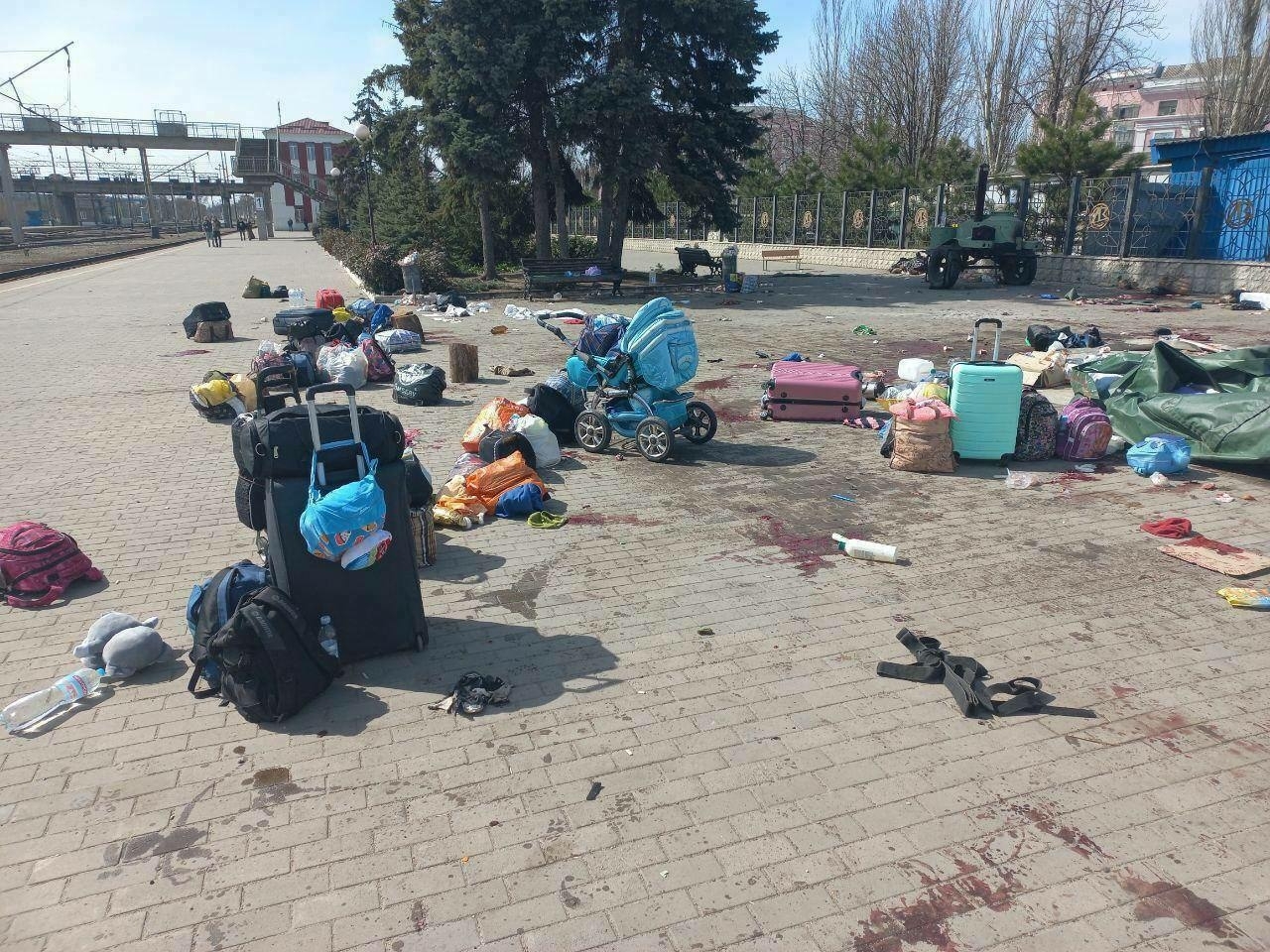
Belongings of civilians lie scattered after a Russian missile strike killed 63 people and injured more than 150 at the Kramatorsk railway station, Ukraine, on Apr. 8, 2022. (Ukrainian Presidency / Handout / Anadolu Agency via Getty Images) 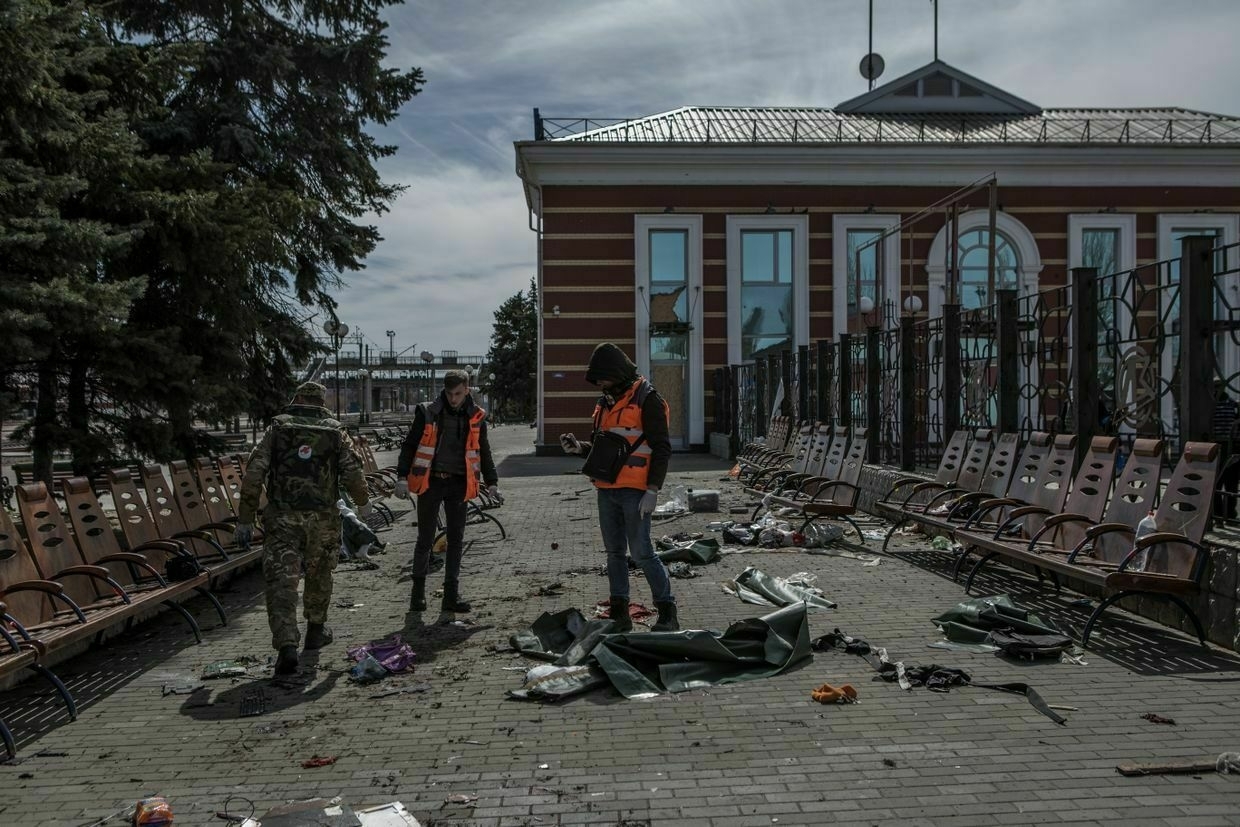
Volunteers search for clues to identify bodies at the Kramatorsk railway station after a missile strike in Kramatorsk, Ukraine, on Apr. 9, 2022. (Andrea Carrubba/Anadolu Agency via Getty Images) Shopping mall in KremenchukKremenchuk was considered a relatively safe city due to being located in Ukraine’s center far from the front — until a Russian strike on a shopping mall in the city center on June 27, 2022. The missile strike destroyed the mall, killing 21 people.
The Kredmash road machinery plant was located just behind the mall — potentially the target of Russia’s two Kh-22 anti-ship cruise missiles launched that day at the area.
Despite the high civilian death toll, Russia continues to strike Ukrainian cities with these missiles, which are outdated and “notoriously inaccurate” when fired at ground targets in urban areas, according to British intelligence.
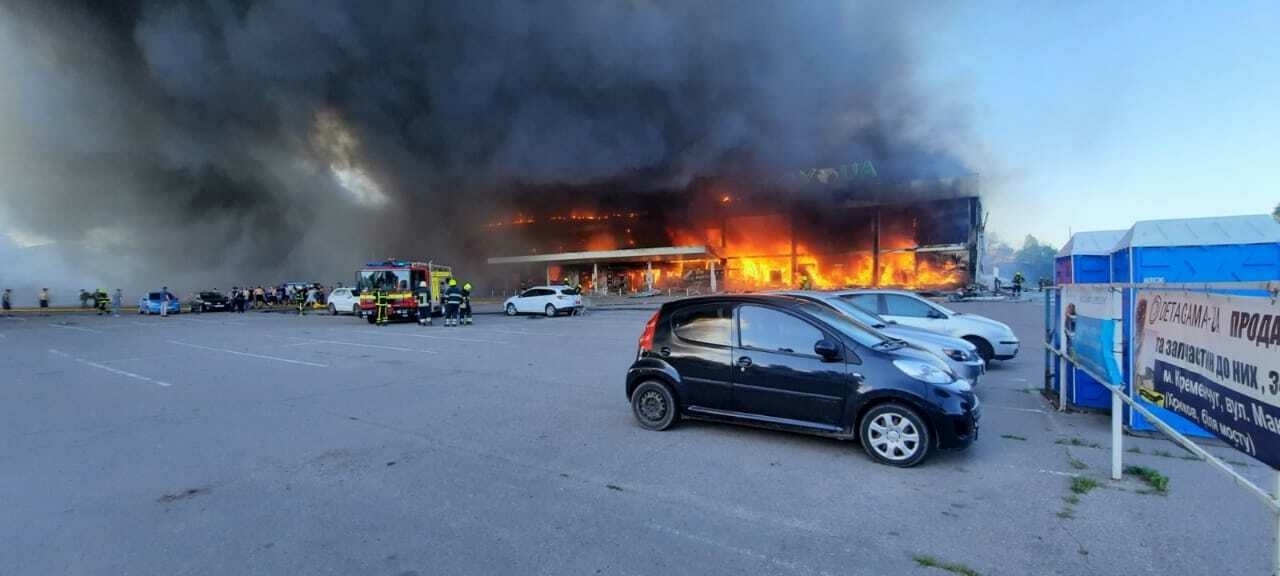
Firefighters attempt to extinguish flames at a burning mall following a Russian strike in Kremenchuk, Ukraine, on June 27, 2022. (Ukrainian State Emergency Service / Handout / Anadolu Agency via Getty Images) 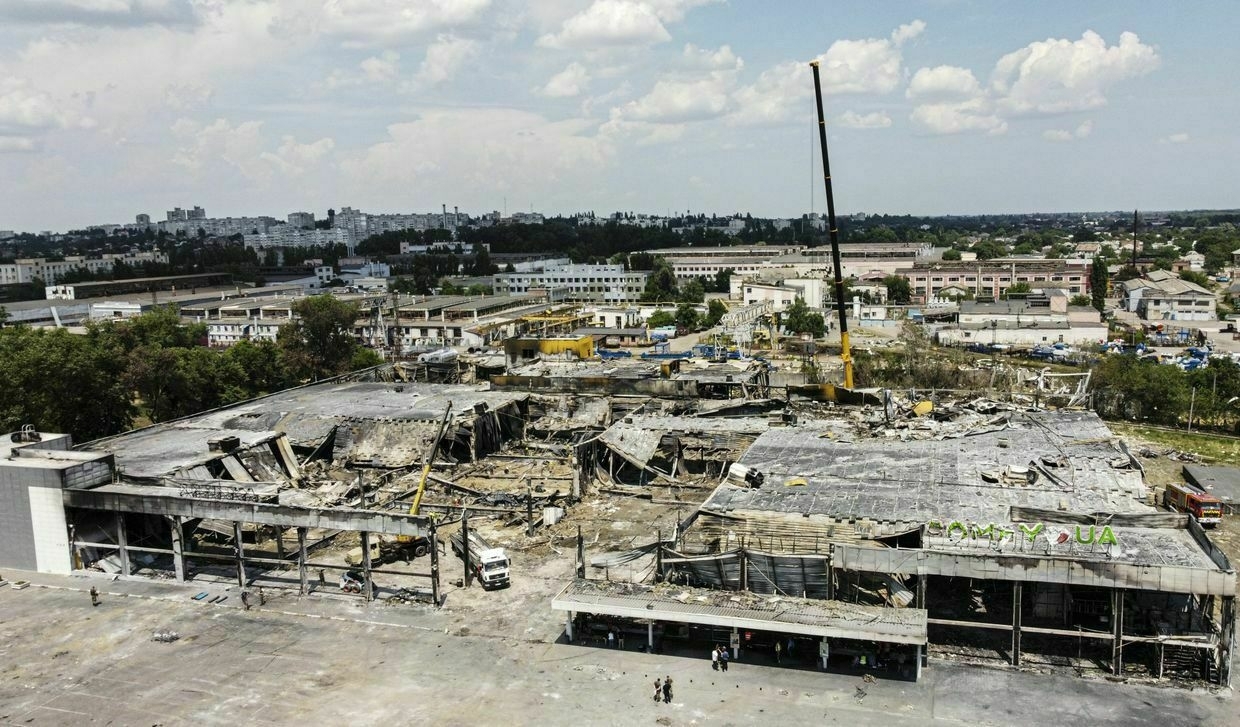
Debris is cleared at a destroyed shopping mall hit by a Russian missile in Kremenchuk, Ukraine, on June 29, 2022. (Metin Aktas / Anadolu Agency via Getty Images) Five-story residential buildings in Chasiv YarThe town of Chasiv Yar in Donetsk Oblast saw one of the deadliest Russian attacks on civilians in 2022, before the devastation of the battle for its neighbor Bakhmut and a bloody fight on its own outskirts.
Russian troops hit two five-story apartment buildings in Chasiv Yar around 9 p.m. on Saturday, July 9, with an Uragan multiple rocket launcher, built to inflict maximum damage to wide areas with 16 rockets fired over twenty seconds.
A rescue operation to clear the two sections of the apartments that collapsed into piles of rubble in the attack took five days.
Nine people were found alive, while two soldiers and 46 civilians were killed, including one child. Russia falsely claimed to have killed over 300 soldiers in the strike.
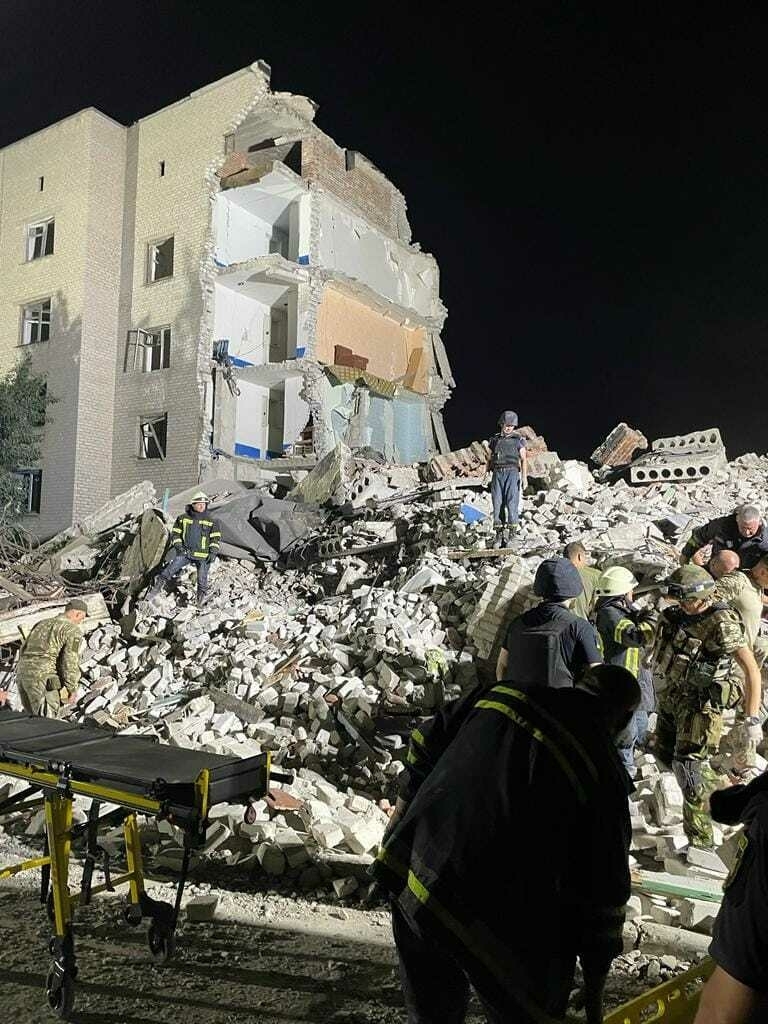
Rescuers search rubble of two 5-story buildings hit by a rocket strike in Chasiv Yar, Donetsk Oblast, Ukraine, on July 9, 2022. Forty-six civilians were killed in the strike. (Wikimedia) Vinnytsia city centerOn July 14, 2022, as a conference took place in The Hague on holding Russia accountable for war crimes, Russia launched an attack at the city of Vinnytsia, another regional capital in central Ukraine far from the front lines.
Between 10 and 11 a.m. on a workday, five Russian Kalibr cruise missiles were fired at the city’s center. The Ukrainian military claimed to have shot some of them down, while others hit a medical center, offices, stores, and residential buildings, injuring over 200 people.
Liza Dmytriyeva, a 4-year-old Ukrainian girl with Down syndrome who was coming from a speech therapy session with her mother, was one of 28 civilians killed in the strike. It also claimed the lives of two other children.
Images of her bloodied stroller lying on the road next to her body went viral online as proof of Russia’s continued war crimes.
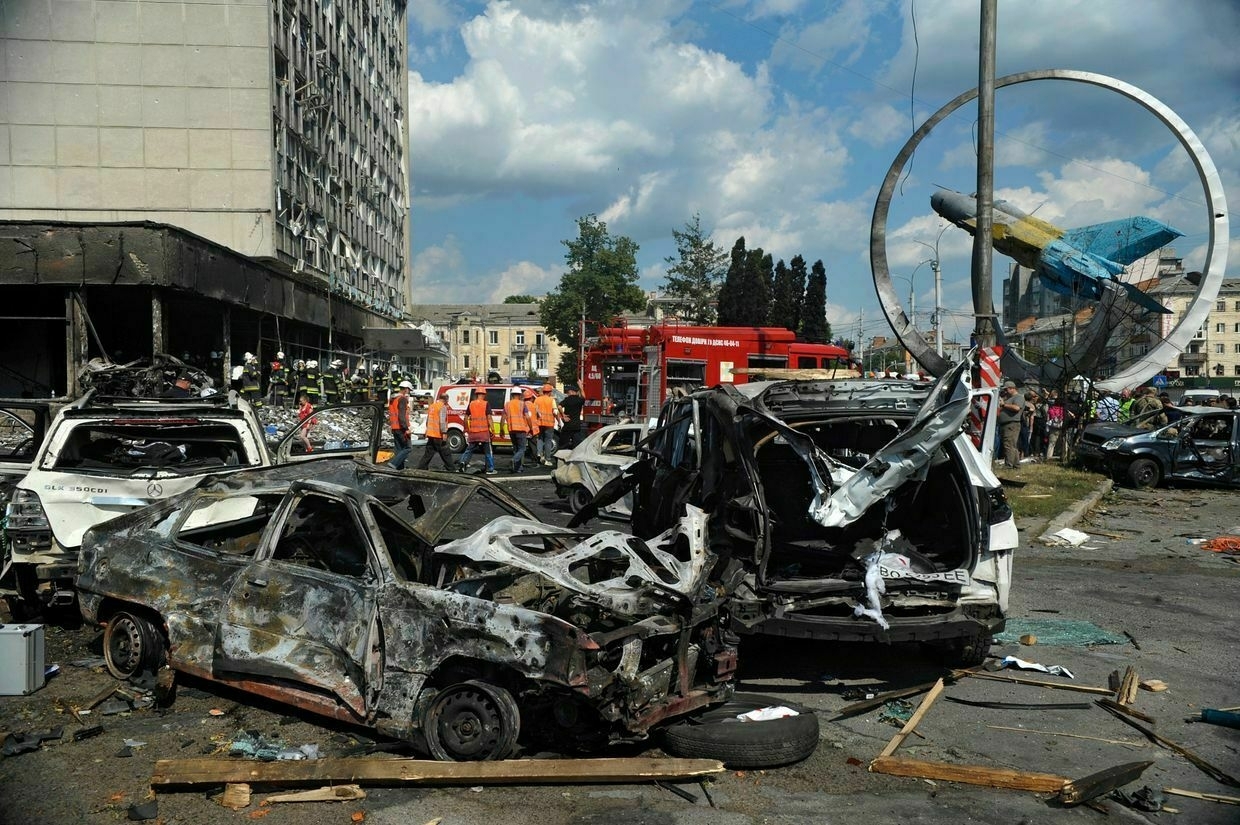
Burnt-out cars are pictured at the scene of a Russian missile attack on central Vinnytsia, Ukraine on July 14, 2022. (Oleksandr Lapin/ Ukrinform/Future Publishing via Getty Images) Kharkiv dormitoriesKharkiv, Ukraine’s second-largest city before the war and one of the closest to the border with Russia, endured a campaign of relentless months-long shelling before Ukrainian troops pushed Russian forces beyond the reach of artillery fire during the Kharkiv counteroffensive in 2022.
Weeks before the counteroffensive began, in the early morning and late evening of Aug. 17, Russia fired missiles at residential buildings in two districts.
The two strikes killed a combined 25 people, including one child. Many of the buildings’ residents were elderly.
Chaplyne railway stationUntil a Russian attack on the village of Hroza in 2023, Chaplyne, a village of 4,000 people, was one of the smallest settlements where a single attack caused mass civilian casualties.
Russia launched five missiles on a Chaplyne railway hub on Ukraine’s Independence Day on Aug. 24, 2022.
One missile strike caused a residential building to collapse, burying a woman with two boys — an 11 and 13-year-old under the rubble. Locals were able to rescue the woman and the older boy alive. The other missiles hit the railway station and set wagons, buildings, and cars containing people on fire.
In total, 25 residents were killed in the attack, including two children.
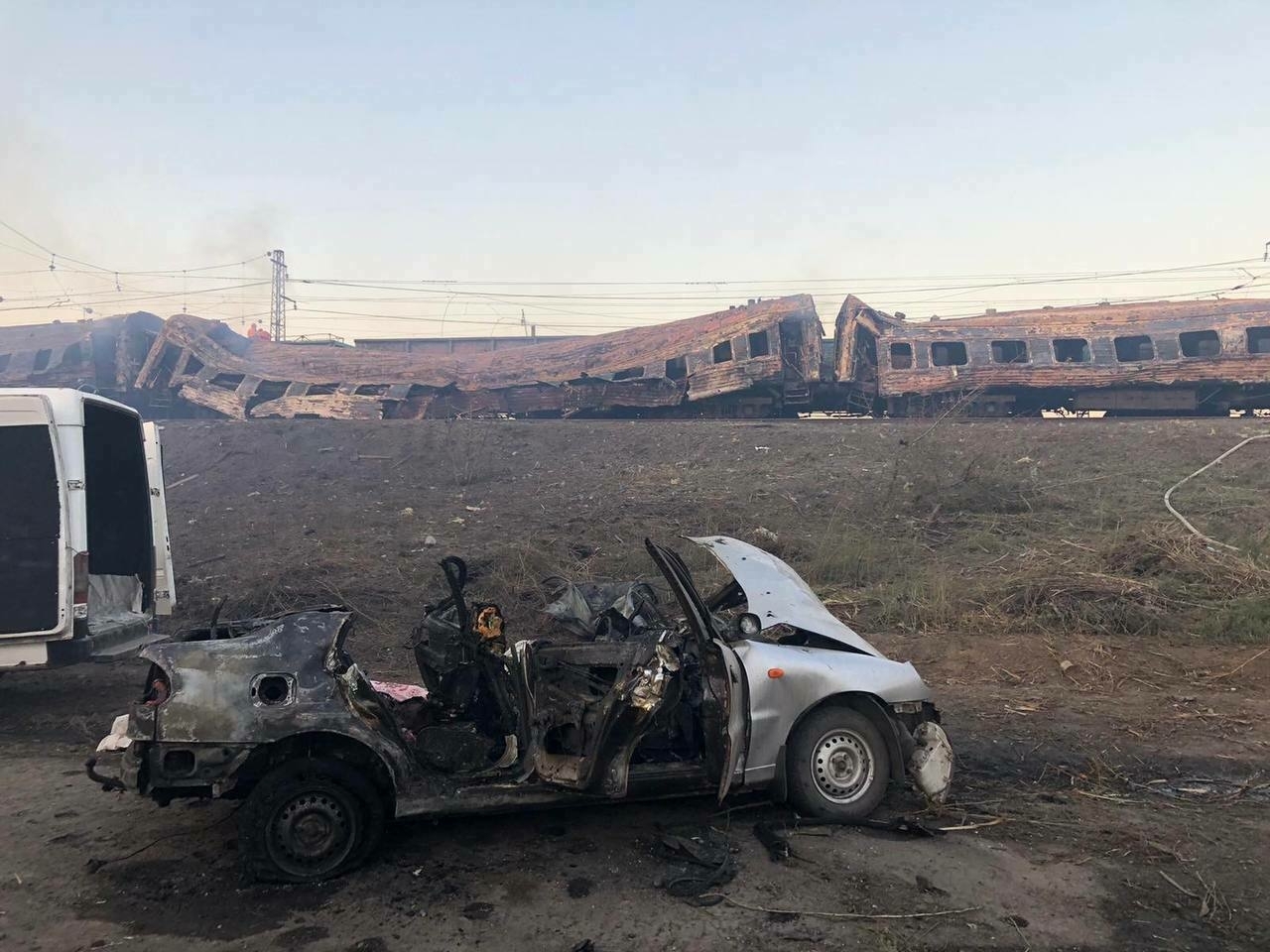
A Russian missile strike hit a railway station in the village of Chaplyne, Dnipropetrovsk Oblast, on Aug. 24, 2022. (Ukraine’s Armed Forces/Telegram) Evacuation column of civilian cars near ZaporizhzhiaOn Sept. 30, 2022, the day Russia announced the annexation of four only partially occupied Ukrainian oblasts after mock referendums where some residents were asked to vote at gunpoint, Russia launched fourteen S-300 missiles at the city of Zaporizhzhia.
Several missiles hit a convoy of about 60 civilian cars gathered on the city outskirts, waiting for a pre-planned trip to the Russian-occupied part of Zaporizhzhia Oblast to pick up relatives or deliver aid. Missile shrapnel killed 32 people in their cars and the surrounding area, including two children.
Residential building in DniproOn Jan. 14, 2023, Russia launched at least one Kh-22 missile — an almost six-ton, imprecise Soviet weapon designed to blow up warships — at the center of Ukraine’s fourth largest city, Dnipro.
The missile struck a nine-story apartment building, leveling one section to the ground in a split second and killing at least 46 people in the building and on the streets outside. The county was shocked by the brutality of the attack.
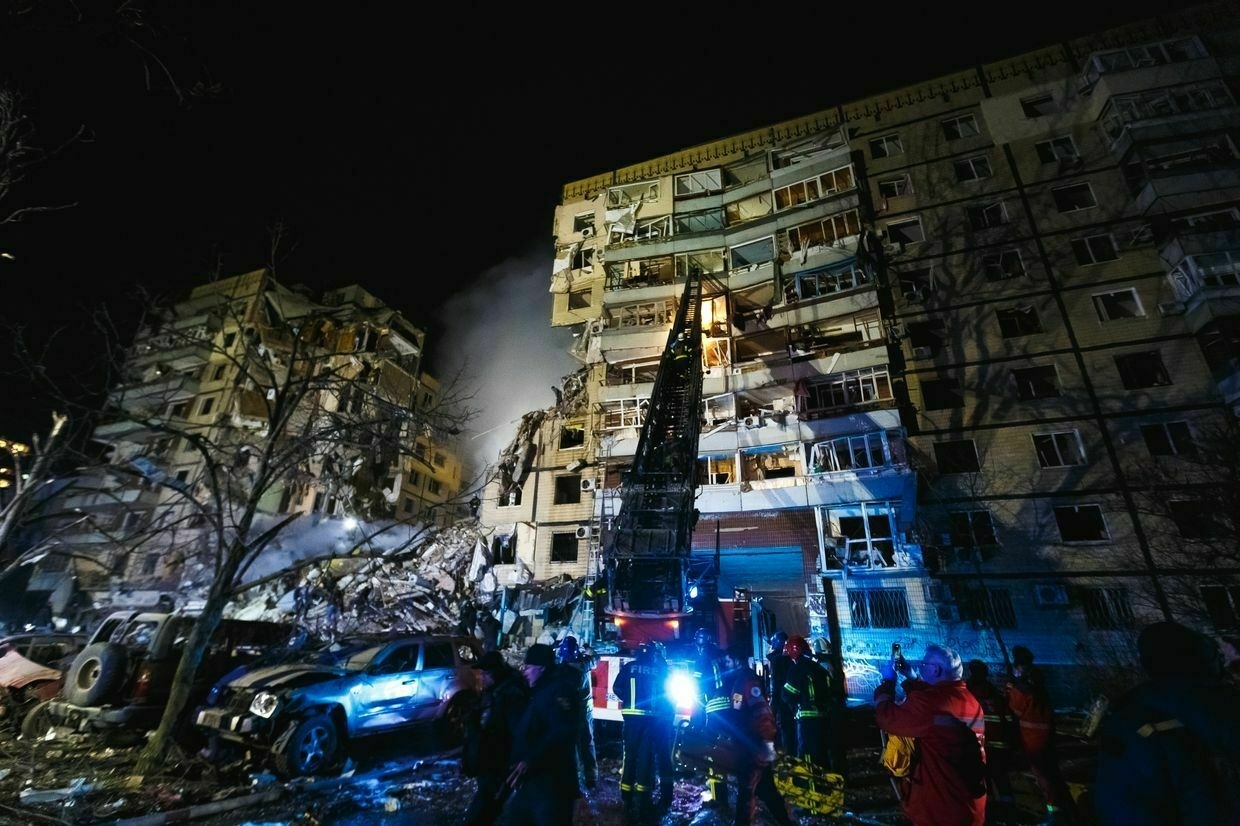
A rescuer climbs a ladder of a fire engine to one of the damaged apartments after a missile strike in Dnipro, Ukraine on Jan. 14, 2023. (Yurii Stefanyak/Global Images Ukraine via Getty Images) In videos from the attack’s aftermath shared online, screams and voices could be heard from under the rubble.
Six children were killed, including an 11-month-old, Mykyta, whose 27-year-old mother, Kateryna Zelenska, was rescued alive after 20 freezing hours under the rubble next to the bodies of her son and husband.
Although the rubble has been fully cleared since, eleven people are still considered missing, as the rescuers couldn’t find traces of their bodies.
Over a year later, in April 2024, Ukraine announced its first successful interception of two Kh-22 missiles.
Apartment building in UmanAround 4:00 a.m. on Apr. 28, 2023, Russia launched over twenty Kh-101 long-range missiles on the central Ukrainian city of Uman, a yearly pilgrimage site of Hasidic jews located 200 miles away from the front line.
Two of the missiles destroyed a nine-story building. Ukrainian authorities said that the attack killed 23 civilians, including six children.
All the victims’ bodies were found and identified within a day of the attack, as dozens of Uman residents joined the rescuers in their search, and their blood relatives could submit DNA for identification at a specially organized collection point.
Wake service in the village of HrozaA funeral reception for a soldier in the small village of Hroza in Kharkiv Oblast gathered around 60 local residents in a cafe near a playground on Oct. 5, 2023.
Based on a tip from two collaborators, Russia launched an Iskander ballistic missile at the cafe. Fifty-nine civilians — almost a fifth of the village’s population — were killed in the devastating strike, including 36 women, 22 men, and an 8-year-old boy.
The OHCHR said in a report that it “has reasonable grounds to believe that the reception was the intended target of an attack” by Russian forces.
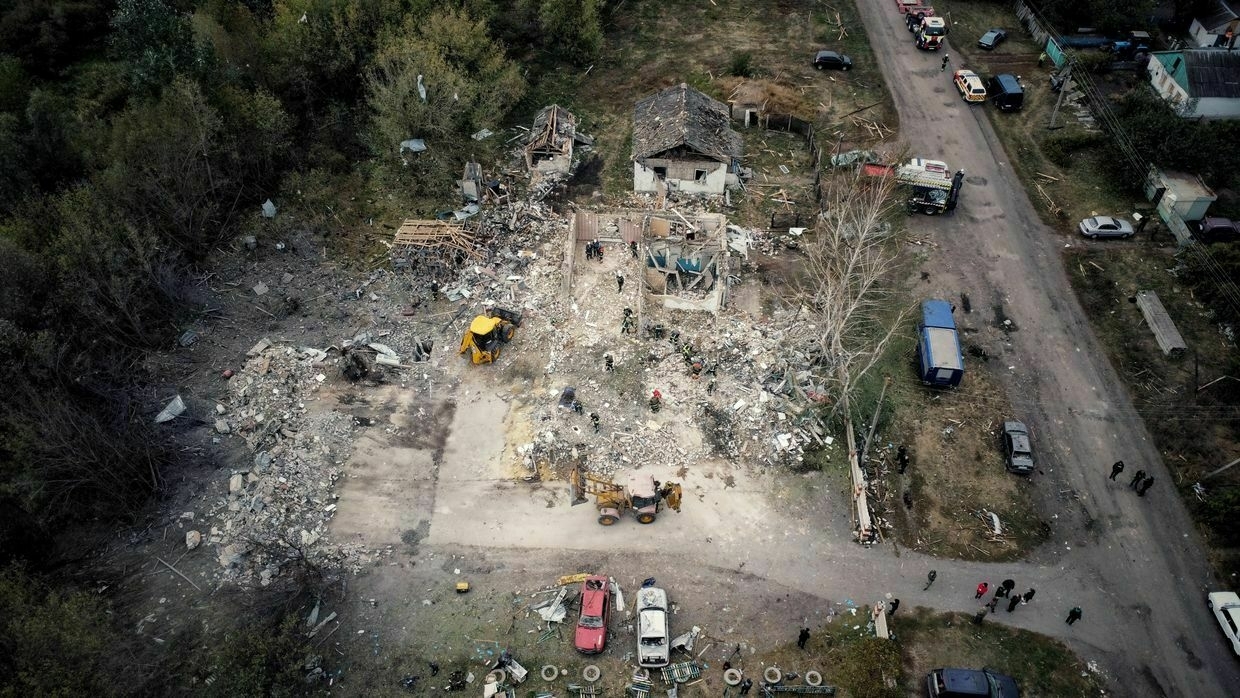
Rescuers and a backhoe clear rubble after a Russian missile strike in Hroza, Kharkiv Oblast, Ukraine, on Oct. 6, 2023. The strike killed 59 people, hitting a cafe where locals gathered for a wake. (Yan Dobronosov / Global Images Ukraine via Getty Images) 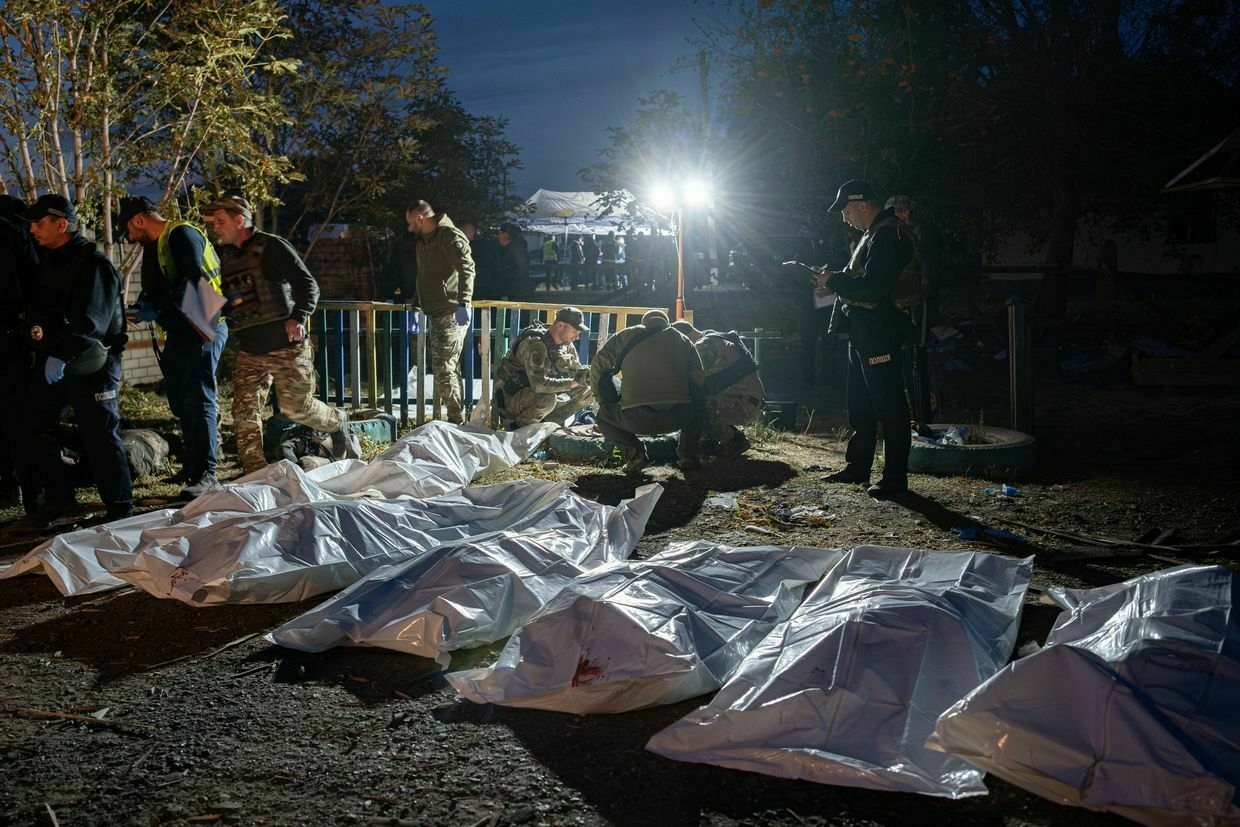
The aftermath of the Russian Oct. 5 missile attack on Hroza, Kharkiv Oblast, that killed 59 people, including a child. (Amadeusz Mikolaj Swierk / Anadolu Agency via Getty Images) At least 15 families in the village lost more than one family member in the attack. The fallen soldier’s family was killed as well. Half of the bodies were so mutilated that the DNA testing had to be used for identification, the report said.
“There were bodies and body parts everywhere. My daughter’s best friend was only identified by her manicure when they found her hand,” said Valentyna, a local civilian witness of the Hroza attack cited in the OHCHR’s report.
Playground in Kryvyi RihSince the Kramatorsk railway station attack, the most children killed in a single attack occurred in early April 2025, in the middle of the U.S. talks with Russia on a potential temporary ceasefire.
On Apr. 4, a Russian cluster ballistic missile hit a residential area with a playground, restaurant, and apartment buildings in Kryvyi Rih, a major industrial hub in Dnipropetrovsk Oblast and the hometown of President Volodymyr Zelensky.
The strike killed 20 people. Nine of them were children, some walking around with their parents, grandparents, or friends, and some just at home with their families.
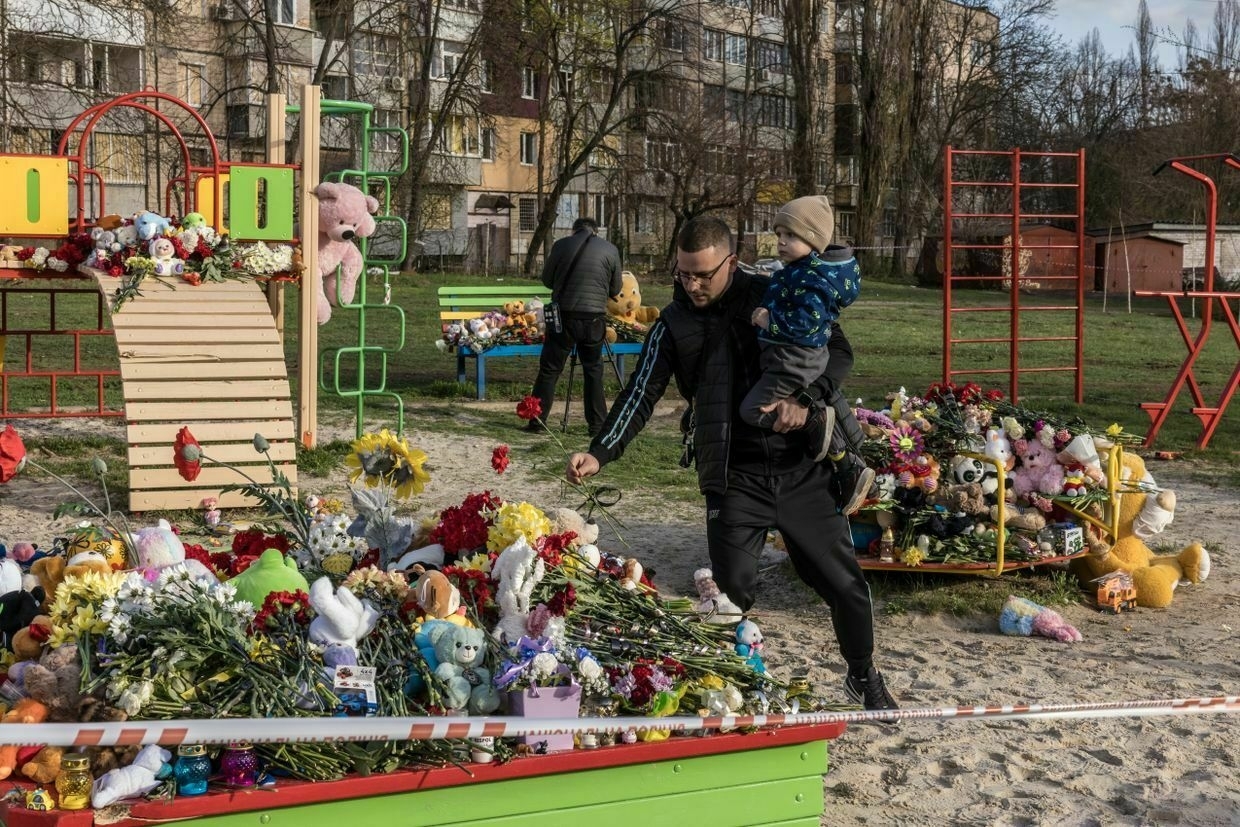
A man with a boy lays flowers at a playground to commemorate victims of a Russian missile strike in Kryvyi Rih, Ukraine, on Apr. 5, 2025. (Oksana Parafeniuk / For the Washington Post via Getty Images) Cluster munitions consist of many smaller detonating units. Ukraine’s Internal Affairs Ministry said on April 5 that the missile “was equipped with a cluster munition to maximize the number of people killed.”
Russia’s Defense Ministry claimed that its “precise” strike had targeted a meeting of “unit commanders and Western instructors” in a restaurant, killing around 85 of them. But security footage shows that no military personnel were present there, according to the France 24 report.
Sumy city center on an Orthodox Christian celebrationThe latest in a long line of Russian attacks on civilians took place on the last Palm Sunday on April 13, when Russia launched a “double-tap” strike with Iskander-M missiles on Sumy’s city center in the late morning.
In total, 35 local residents were killed, among them two children. Over 100 people were injured. One of the strikes killed most of the passengers on a city bus. A 13-year-old boy pulled a few survivors out of the burning bus, his mom among them, after climbing out of the bus’s window.
Russia deployed cluster munitions in its second strike a few minutes after the first to inflict deliberate casualties on civilians in downtown Sumy, local authorities said.
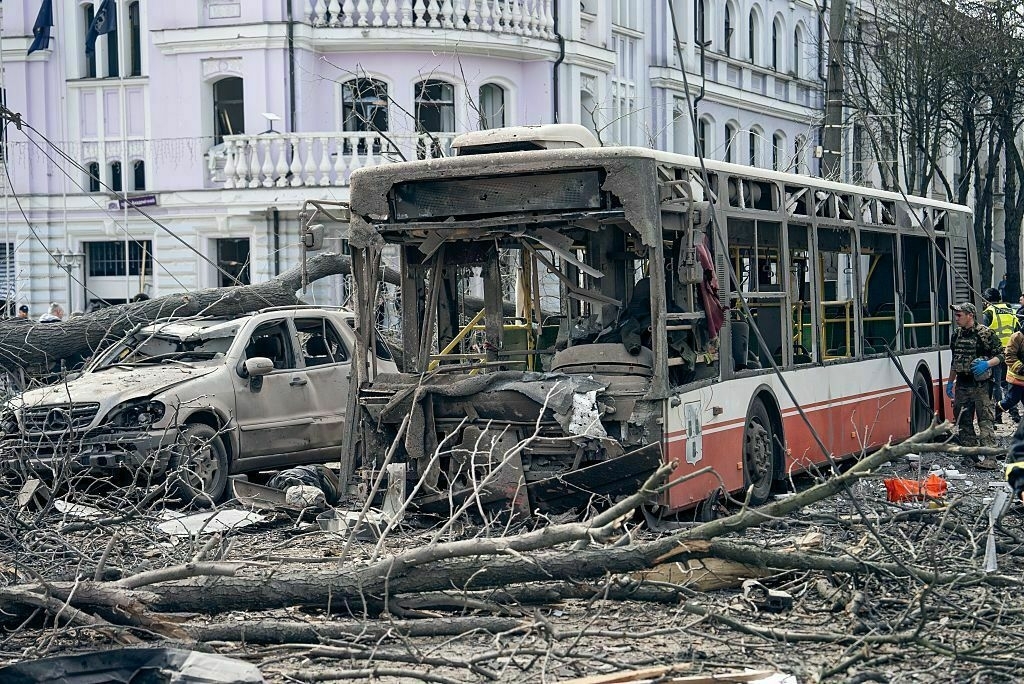
The body of a man killed in a Russian missile strike lies next to a wrecked bus in Sumy, Ukraine, on Apr. 13, 2025. (Oleksandr Oleksienko/Kordon.Media/Global Images Ukraine via Getty Images) 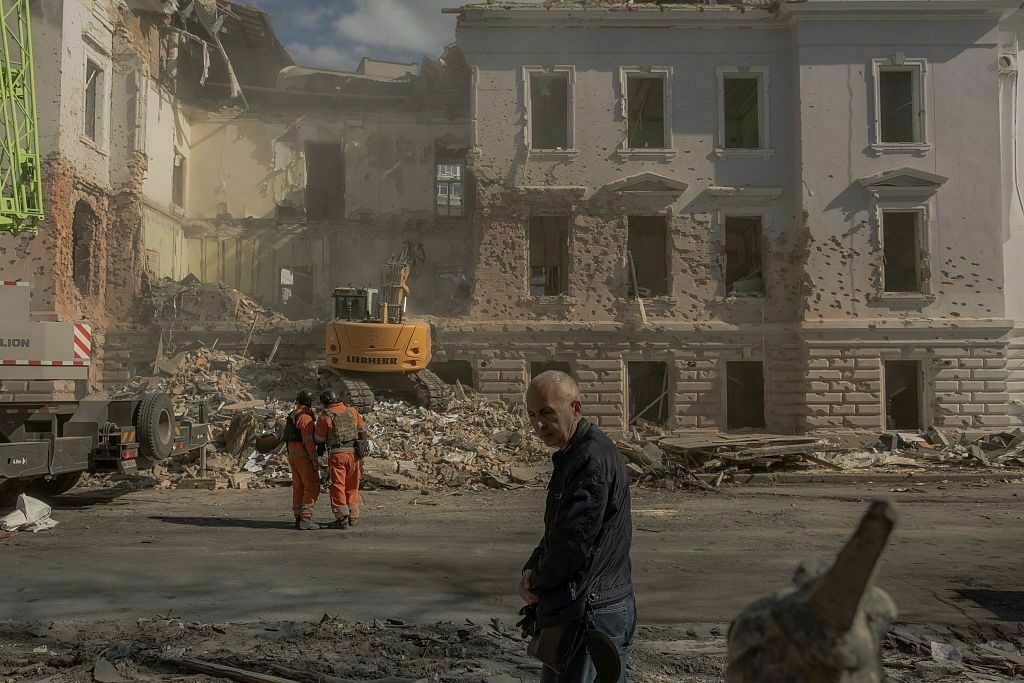
Ukrainian emergency workers search through the rubble after a Russian missile attack in Sumy, Ukraine, on Apr. 14, 2025. (Roman Pilipey/AFP via Getty Images) All the people who died were pedestrians and civilians in their own vehicles or public transport. Some of them burned alive, while others bled out in their cars before rescuers could pull them out. Ukrainian orchestra musician Olena Kohut was among the victims.
Local authorities later confirmed rumors of a planned military ceremony on the day of the attack.
While European leaders have denounced the attack as a war crime and evidence of Russia’s rejection of peace efforts, U.S. officials responded with condolences for Ukraine but no calls for increased pressure on Moscow.
More civilian casualtiesSome of the highest estimated civilian casualty tolls — in the currently Russian-occupied southern city of Mariupol — still remain undocumented.
Russia has systematically destroyed evidence and prevented international investigations into its strikes — including the bombing of the Mariupol drama theater on March 16, 2022, where between 300 to 600 people are estimated to have been killed while they were taking shelter.
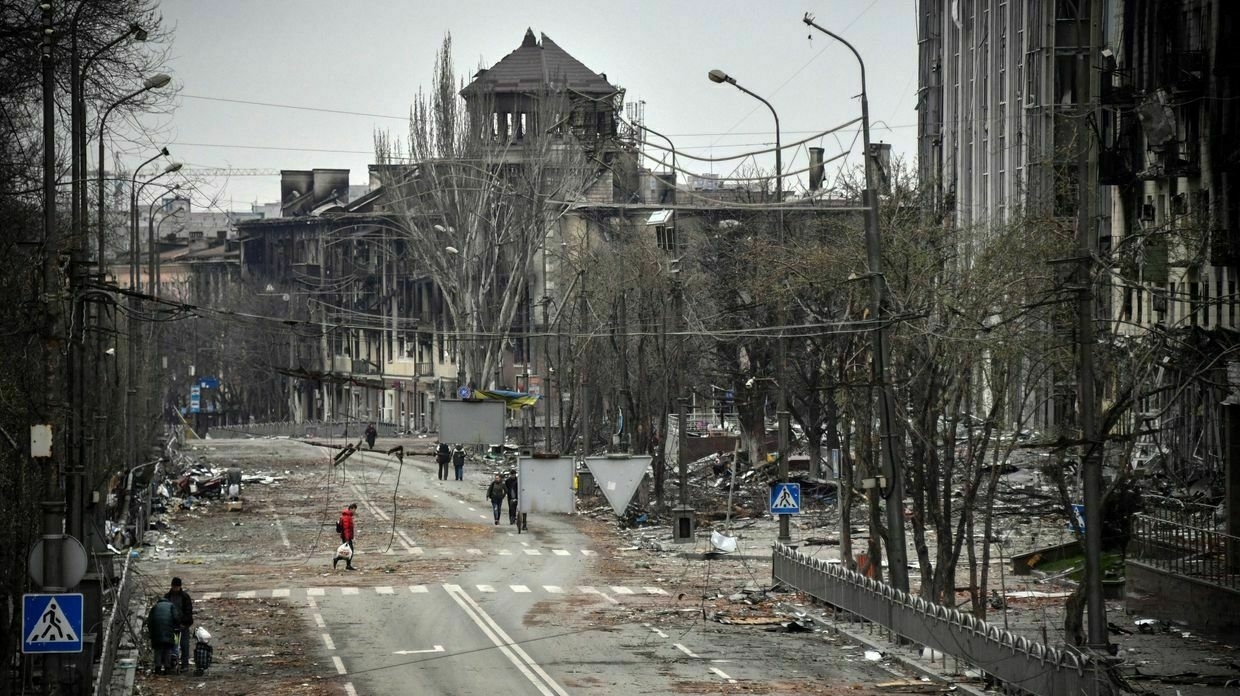
People walk down an avenue in Mariupol on Apr. 12, 2022, as Russian troops intensify their campaign to capture the strategic port city. (Alexander Nemenov / AFP via Getty Images) 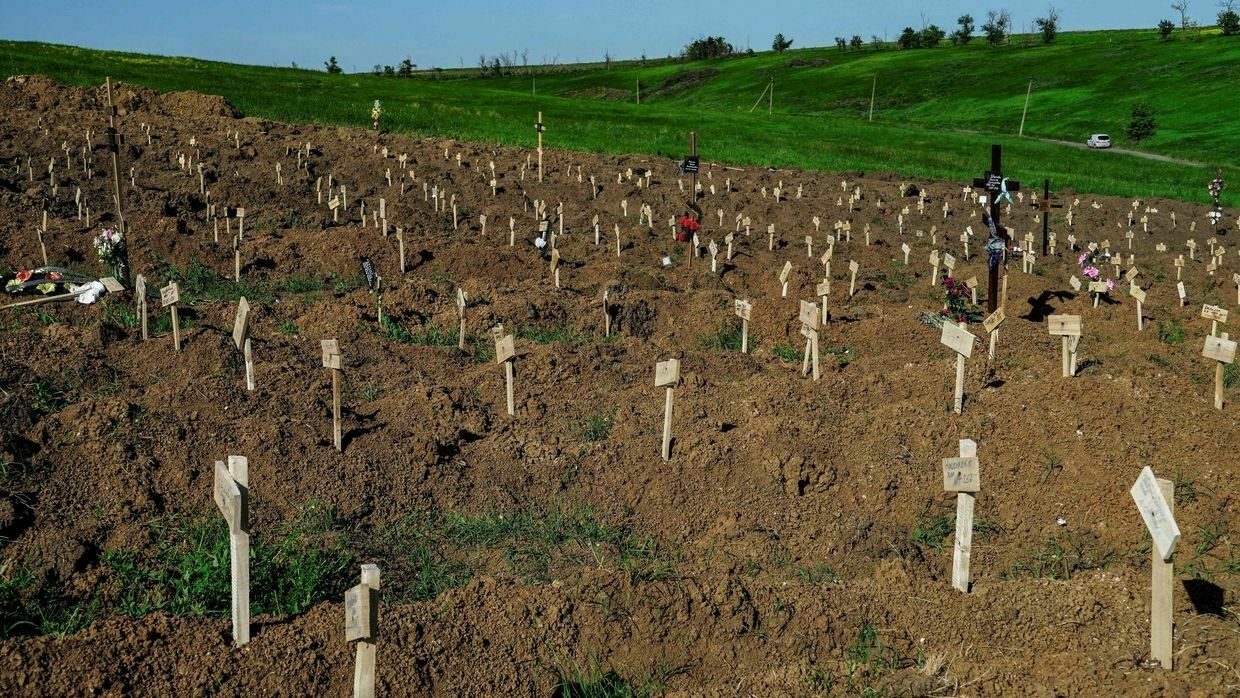
Fresh graves are seen at a cemetery in Mariupol on June 2, 2022, amid Russia’s full-scale invasion of Ukraine. (Stringer/AFP via Getty Images) Amnesty International called the strike “a clear war crime” by the Russian army in its interview-based and open source investigation.
Human Rights Watch put the total civilian death toll from Russia’s siege of Mariupol in 2022 at around 8,000 people, but added that true numbers are likely much higher.
Deadliest Russian attack on Sumy leaves residents in shockOn April 13, Russia launched a brutal double-tap attack on the northeastern Ukrainian city of Sumy. Two ballistic missiles rocked the city center on Palm Sunday, killing at least 35 people — including two children — and shocking Ukraine and the world. The Kyiv Independent visited Sumy the day after…The Kyiv IndependentNick Allard
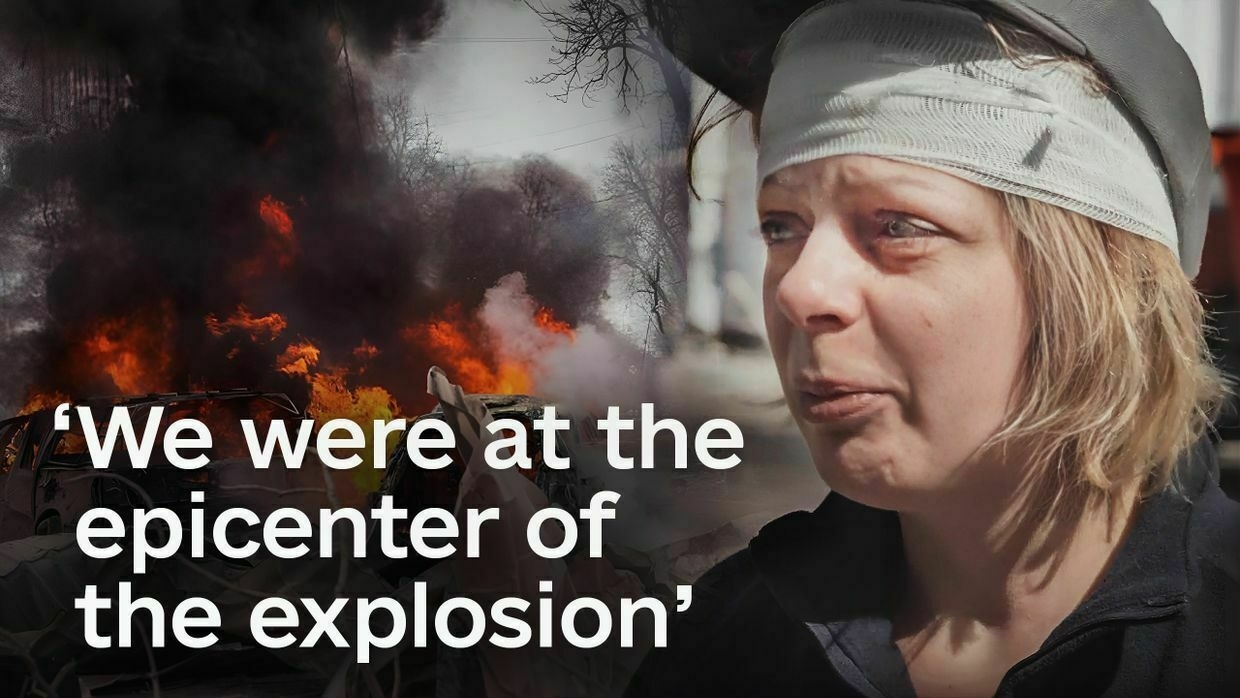
Note from the author:
Hello, this is Natalia Yermak, the author of this article. Thank you for reading it.
Russian attacks with huge civilian death tolls are on the rise in the past weeks as the U.S. administration cozies up to Russia. If you want to read more of our coverage on what could be swept under the rug in the ongoing peace talks, please consider joining the Kyiv Independent community. Your support fuels our work!
-
Ukraine war latest: Ukrainian forces target Russian missile brigade behind deadly Sumy attack; Witkoff unveils '5 territories' deal for Russia
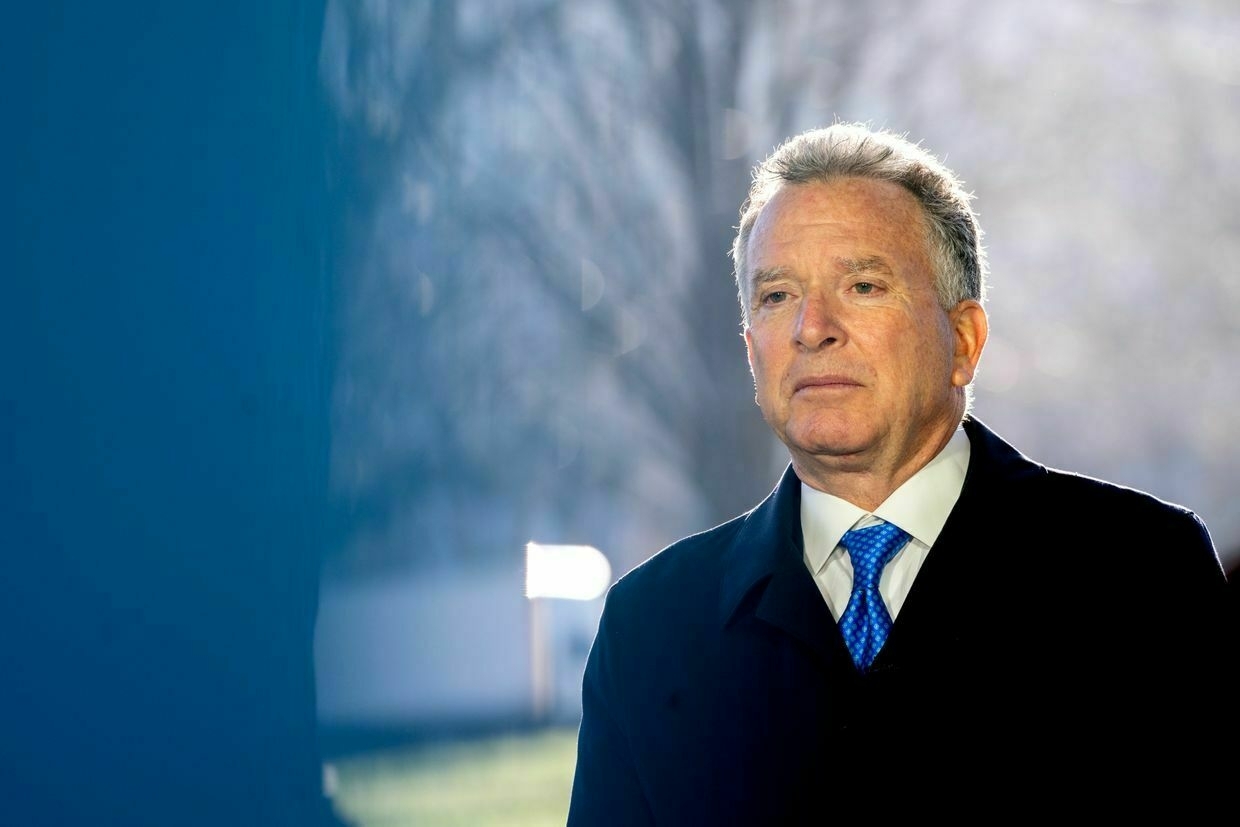
Key developments on April 15:
- Ukrainian forces target Russian missile brigade behind deadly Sumy attack
- Witkoff says ‘5 territories’ key to proposed Russia-Ukraine deal after meeting Putin
- North Korean artillery now dominates Russia’s ammunition supply in war against Ukraine, investigation says
- Azov, Khartiia commanders to lead 2 new National Guard corps
- Russia’s Yamalo-Nenets region becomes first to reduce military enlistment payments
Ukrainian forces struck the base of Russia’s 448th Missile Brigade, which had carried out a deadly attack on the northeastern city of Sumy on April 13, Ukraine’s General Staff reported on April 15.
The Russian missile strike, launched on Palm Sunday, killed 35 people and injured 119. It was one of the deadliest attacks on Sumy since the start of the full-scale war.
According to the General Staff, the strike on the Russian base in Kursk Oblast was carried out by Ukraine’s Unmanned Systems Forces, Special Operations Forces, the Security Service of Ukraine, and other military units.
The attack reportedly triggered an ammunition explosion at the site.
The Kyiv Independent could not independently verify these claims.
“Every Russian military unit, subdivision, and their servicemen who shell peaceful cities and civilians in Ukraine will be identified and will definitely receive retribution,” the General Staff’s statement read.
The full consequences of the strike are still being assessed, officials said.
Witkoff says '5 territories' key to proposed Russia-Ukraine deal after meeting PutinU.S. Special Envoy Steve Witkoff said on April 14 that his recent talks with Russian President Vladimir Putin were "compelling" and centered around a possible peace deal based on the status of "five territories."
Witkoff, who met with Putin in St. Petersburg on April 11, described the meeting as productive, claiming the Russian president expressed a desire for "a permanent peace," though it "took a while for us to get to" that point.
"This peace deal is about these so-called five territories," Witkoff said in comments for Fox News. "But there's so much more to it. I think we might be on the verge of something that would be very important for the world at large."
Though Witkoff did not name the territories directly, he appeared to refer to Crimea, illegally annexed by Russia in 2014, and the partially occupied Donetsk, Luhansk, Zaporizhzhia, and Kherson oblasts. Moscow declared the annexation of the latter four regions in 2022.
The envoy also hinted at a broader strategic ambition tied to business incentives. "I see a possibility of reshaping the Russian-United States relationship through some very compelling commercial opportunities," Witkoff said. "That gives real stability to the region too."
Some U.S. officials have raised alarms over the direction of the Trump administration's diplomacy. The Wall Street Journal reported that Secretary of State Marco Rubio and Special Envoy for Ukraine Keith Kellogg are urging President Donald Trump to resist territorial concessions to Moscow.
Despite the appeals, Trump is siding with Witkoff, who argues that Putin is interested in reaching a peace deal, the outlet wrote.
According to Reuters, Witkoff told Trump that recognizing Russian control over the four partially occupied regions would be the quickest way to secure a ceasefire. This approach mirrors Kremlin demands and has sparked concern among Kyiv's allies.
Despite ceasefire efforts, Russia continues to reject the full 30-day ceasefire proposal backed by the United States and supported by Ukraine. A partial truce covering energy infrastructure has repeatedly been violated by Russian forces.
Witkoff, who has visited Russia several times this year and serves as Trump's top negotiator, has drawn criticism for adopting Kremlin talking points, particularly regarding the nature of Russia's occupation and the prospects of trading territory for peace.
Since returning to office in January, the Trump administration has resumed direct talks with the Kremlin and signaled a diminished commitment to Ukraine's defense, even as Russia intensifies attacks on civilian areas.
‘Putin believes he has the upper hand’ — Ukraine braces for a new Russian spring offensiveIn a way unseen since the start of the full-scale invasion, the daily grind of the front line in Russia’s war against Ukraine has taken the back seat in world headlines. The dizzying U.S. President Donald Trump-led attempts to negotiate peace in the world arena dominate the news cycleThe Kyiv IndependentFrancis Farrell
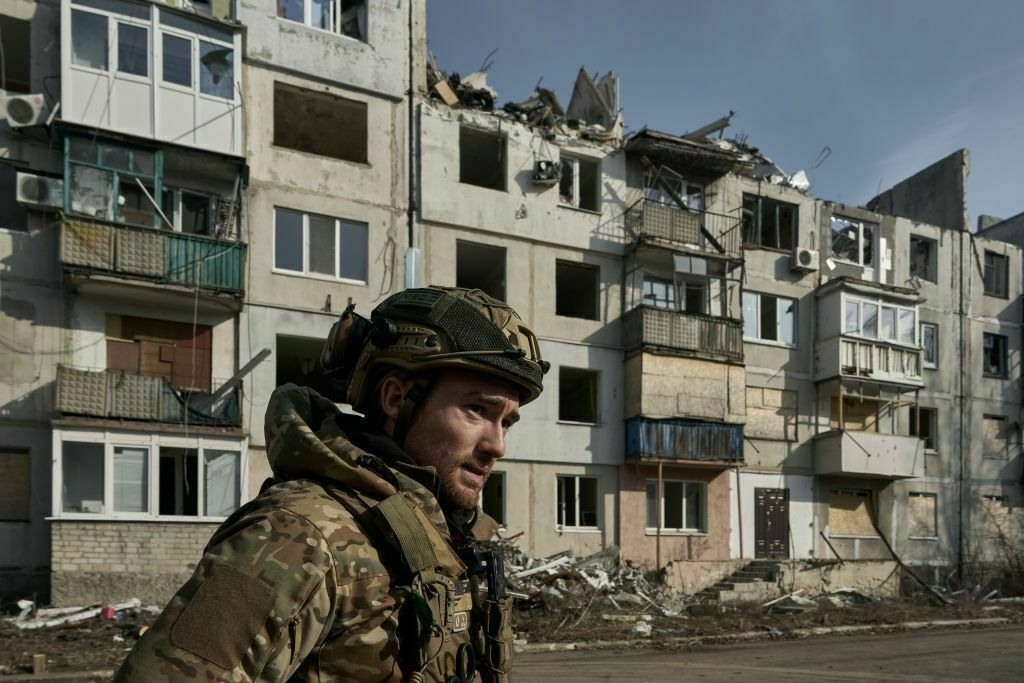
North Korean artillery now dominates Russia's ammunition supply in war against Ukraine, investigation saysThe majority of artillery shells used by Russian forces in Ukraine in 2024 were manufactured in North Korea, according to a joint investigation by Reuters and the Open Source Center (OPS), published on April 15.
North Korea has become a key military ally of Russia, supplying artillery shells, missiles, and reportedly even soldiers in exchange for oil products and advanced rocket technology.
Internal technical reports from Russia’s Defense Ministry, obtained by investigators, indicate that in some Russian military units, between 75% and 100% of artillery shells are North Korean-made. Overall, North Korea is providing roughly half of all artillery shells used by Russian troops, according to Ukraine’s military intelligence agency (HUR), as cited by Reuters.
Arms shipments from North Korea to Russia began no later than September 2023, following a July visit to Pyongyang by then–Russian Defense Minister Sergei Shoigu, the investigation found.
Between September 2023 and March 17, 2025, Russian cargo ships Angara, Maria, Maya-1, and Lady R transported military cargo 64 times from the North Korean port of Rajin to the Russian ports of Danube and Vostochny.
According to satellite images, the ships carried at least 15,809 containers in total. Cargoes from North Korea also traveled by the Friendship Bridge railroad across the Tumanna River in Primorye.
Deliveries peaked in January 2024, with seven batches per month, and cargo ships are currently transporting about three batches of shells per month, according to the investigation. The containers could carry between four and six million artillery shells alone.
The shells were transported by rail to warehouses near the Russian-Ukrainian border, mainly to Tikhoretsk in Russia's Krasnodar Krai.
Earlier, Russian President Vladimir Putin described North Korea as a "partner" and noted that a treaty on military cooperation between Moscow and Pyongyang, signed last year, had come into force.
Putin also suggested on March 27 that countries "friendly" to Russia, including North Korea, could take part in the peace process and negotiations to end Moscow's full-scale invasion of Ukraine.
The rise and fall of Ukraine’s Kursk gambitAs Ukraine’s seven-month-long incursion into Russia’s Kursk Oblast came to what appears to be its end, Ukrainian soldiers and military experts are questioning the operation’s goal and the long-term effect it will have on the war. Ukraine launched a surprise cross-border incursion into Russia’s Kurs…The Kyiv IndependentAsami Terajima
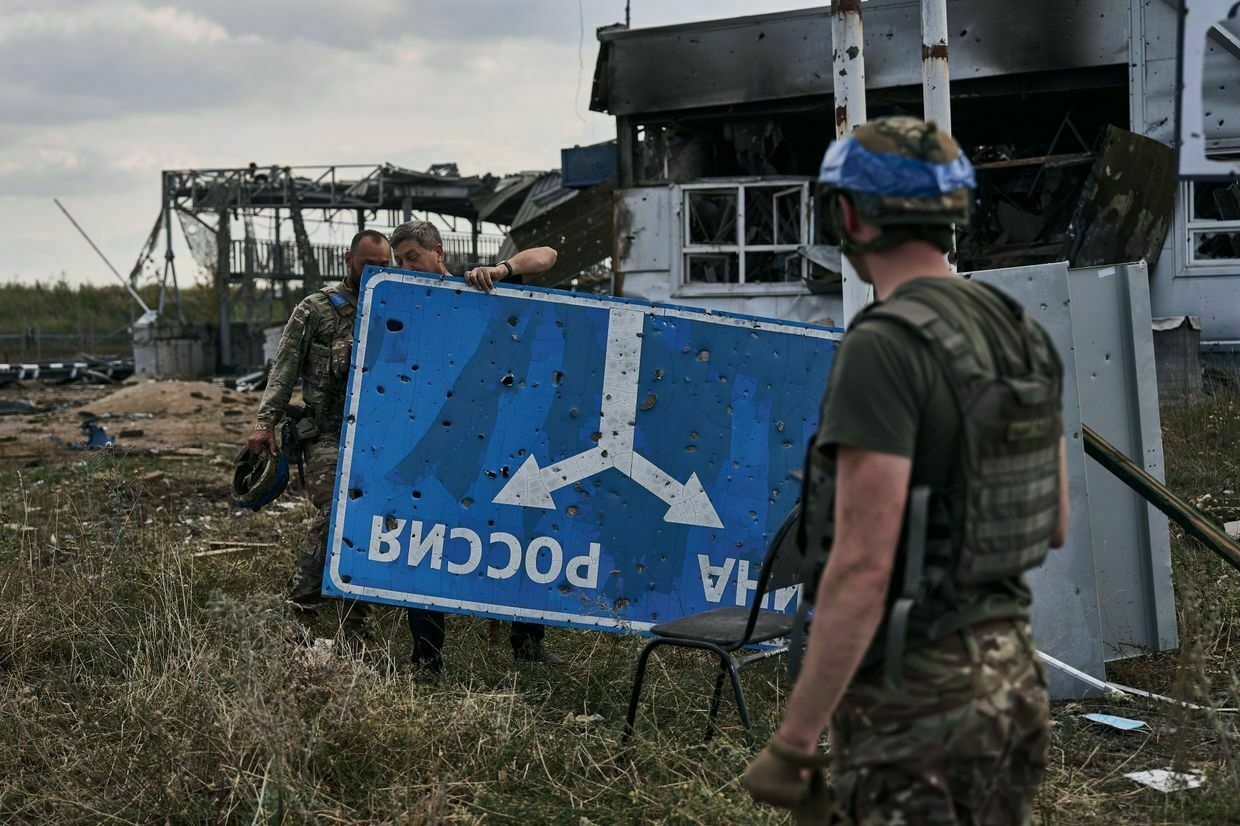
Azov, Khartiia commanders to lead 2 new National Guard corpsThe National Guard has formed two new military corps as part of a broader reform of Ukraine's Defense Forces, National Guard Commander Oleksandr Pivnenko told Interfax-Ukraine in comments published on April 15.
Ukraine announced earlier this year that it would transition its military to the corps system to improve its efficiency and organization on the battlefield.
One of the new formations, the 1st Azov Corps, will be led by Colonel Denys Prokopenko, the commander of the 12th Special Forces Azov Brigade.
The Azov Brigade, as well as the 1st Presidential Burevii Brigade, the 14th Chervona Kalina Brigade, the 15th Kara-Dah Brigade, and the 20th Liubart Brigade, will make up the new corps.
Colonel Ihor Obolensky, commander of the 13th National Guard Khartiia Brigade, will lead the second corps, Pivnenko said.
The National Guard commander said the new corps system will improve communication and make the military more effective, considering experiences with the full-scale war.
The corps commanders should be familiar with the situation on the ground and understand the specifics of the units, Pivnenko said, naming the lack of coordination as the main obstacle facing Ukrainian forces.
The Ukrainian military currently operates under a brigade-level system, with more than 100 brigades subordinate to operational-tactical groups (OTU), which are subject to operational-strategic command (OSUV) and operational commands (OK).
Experts told the Kyiv Independent in February that the old structure created an unwieldy management system, and commanders of OTUs and OSUVs—effectively temporary bodies—were not familiar with their units.
Poor battlefield coordination has often been named as one of the key challenges plaguing the Ukrainian military as it continues to face Russia's all-out war.
Inside Ukraine’s desperate race to train more soldiersNew recruit Vitalii Yalovyi knew one thing after completing the Ukrainian military’s boot camp: He was not prepared for war. The 37-year-old felt physically unfit, forcing him to miss some courses during the month-long training. His leg was still hurting from long daily walks at a training center i…The Kyiv IndependentAsami Terajima
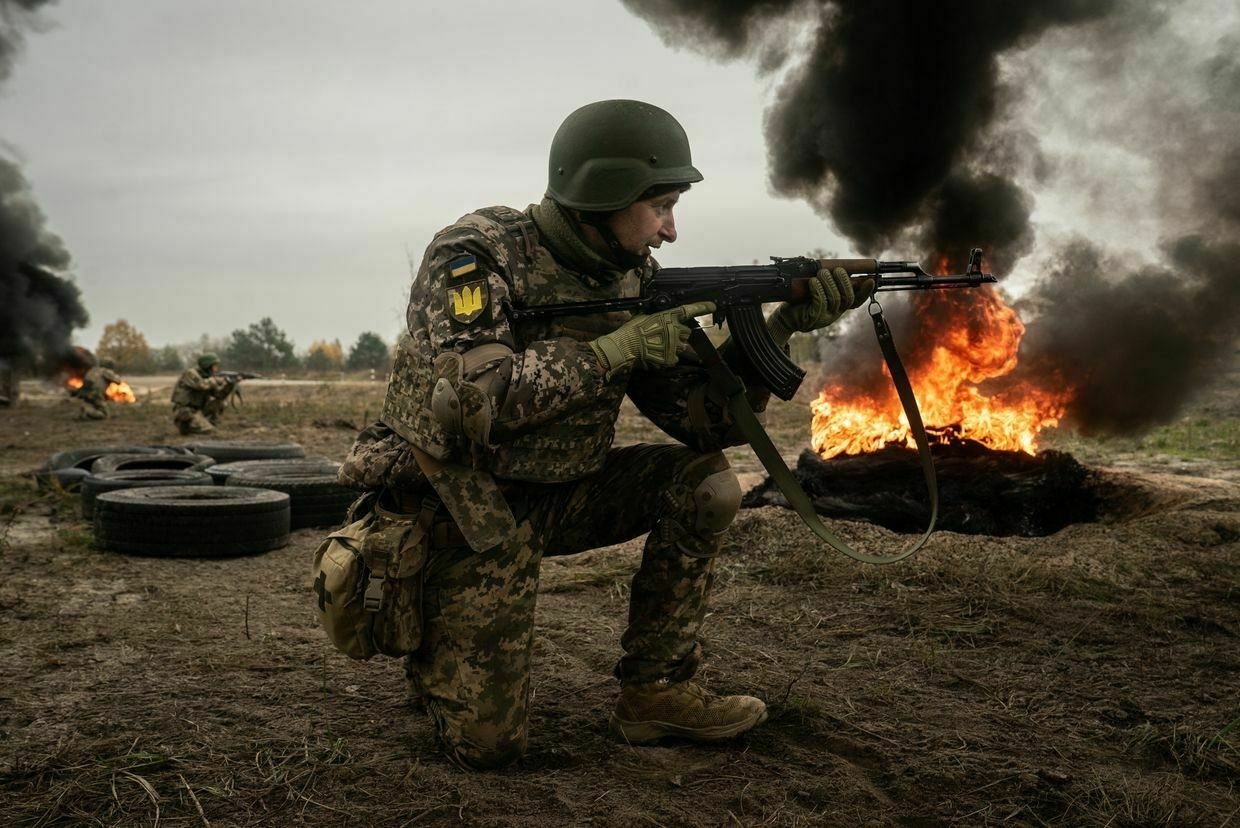
Russia's Yamalo-Nenets region becomes first to reduce military enlistment paymentsThe Yamalo-Nenets Autonomous Okrug has become the first Russian region to reduce enlistment payments for soldiers fighting in Ukraine, the Moscow Times reported on April 15, citing local officials.
Throughout the three years of Russia's full-scale invasion, regional authorities in Russia have significantly increased recruitment bonuses to encourage new troops to join the military amid heavy losses on the battlefield in Ukraine.
In Yamalo-Nenets, payments have now reverted to earlier levels. Instead of the previously offered 3.1 million rubles (about $37,700), new recruits will receive 1.9 million rubles (roughly $23,100). The higher payment had been in effect from Jan. 20 through April 15.
The highest bonus in Russia is still offered in Samara Oblast, where officers and those renewing contracts with the Russian Defense Ministry can receive 3.6 million rubles ($43,800).
At the start of 2025, six regions — including Chuvashia, Mari El, Bashkortostan, Smolensk and Kaluga oblasts, and Primorsky Krai — increased their payments. Kaluga Oblast saw the steepest jump, from 800,000 to 2 million rubles (about $9,700 to $24,300).
As of late March, the Russian government was spending about 2 billion rubles ($24.3 million) per day on enlistment bonuses, according to the Russian Finance Ministry. Roughly three-quarters of that — 1.5 billion rubles ($18.2 million) — is paid by regional governments, which are spending nearly 3% of their budgets on recruitment efforts. The remaining 500 million rubles ($6 million) comes from the federal government.
Earlier, President Vladimir Putin approved a reduction in compensation for soldiers wounded in the war against Ukraine.
In October, Russian forces suffered their deadliest month since the invasion began. British defense intelligence reported that Russian casualties in Ukraine totaled 41,980 killed or wounded that month, according to U.K. Defense Minister John Healey.
Despite record losses, Russian troops have been making increasingly rapid gains along the front line.
Note from the author:
Ukraine War Latest is put together by the Kyiv Independent news desk team, who keep you informed 24 hours a day, seven days a week. If you value our work and want to ensure we have the resources to continue, join the Kyiv Independent community.
-
Our readers' questions about the war, answered. Vol. 8
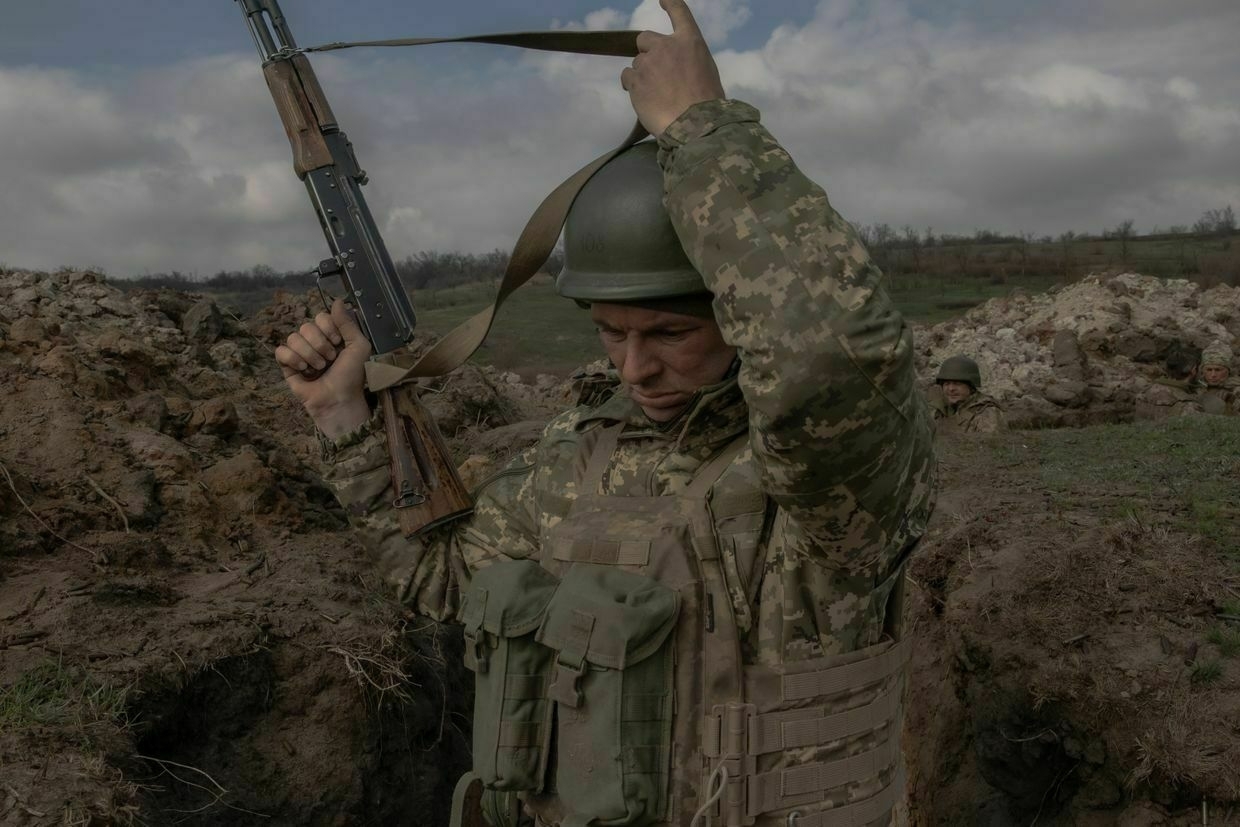
Editor’s note: We asked members of the Kyiv Independent community to share the questions they have about the war. Here’s what they asked and how we answered.
Join our community to ask a question in the next round.
Question: Is Ukraine formulating a plan to receive and house refugees from occupied territories? I would expect in that ceding territory many Ukrainians would want to leave Russian control.
Answer: Handling internally displaced people (IDPs) has been a pressing issue for Ukraine ever since the start of Russia’s full-scale invasion. According to the Social Policy Ministry, there are currently nearly 5 million IDPs in Ukraine, 3.6 million of whom left their homes after Feb. 24, 2022.
However, state support is widely considered insufficient, with most IDPs relying primarily on charities and NGO assistance. The monthly amount of financial aid from the state is currently Hr 2,000 ($48) per adult and Hr 3,000 ($72) per child or person with a disability — not enough to maintain a decent standard of living.
The most critical issues for IDPs include the lack of proper and affordable housing, financial instability, difficulty finding employment, and deteriorating mental health. Insufficient support also forces some IDPs to eventually return to front-line or even occupied settlements.
Read this story to find out more — “Thousands of Ukrainian IDPs are struggling to adapt amid housing, employment crises.” — Daria Shulzhenko, reporter
Question: Do Ukrainians still trust and respect President Zelensky? Do they still want him to be their president? Do they agree with how he is handling the war?
Answer: Yes, the majority of Ukrainians still support President Volodymyr Zelensky. Even more so after his brutal encounter with U.S. officials at the White House.
According to the latest poll published by the Kyiv International Institute of Sociology on March 27, 69% of Ukrainians trust the president.
The survey found that only 28% of respondents do not trust Zelensky, resulting in a trust-distrust balance of +41%.
Zelensky remains the most popular politician in the country and the majority of people in Ukraine support him. Yes, there are mistepps, quite a few actually, but I don’t see the country turning on Zelensky.
If the presidential election were held this weekend, Zelensky would definitely advance to the runoff and likely win it. The only potential competitor is former Commander-in-Chief Valerii Zaluzhnyi, who now serves as the country’s ambassador to the U.K.
Some polls have Zaluzhnyi in the lead, but the general had never officially announced his intention to run and it remains to be seen what he will do if he does. — Oleksiy Sorokin, deputy chief editor
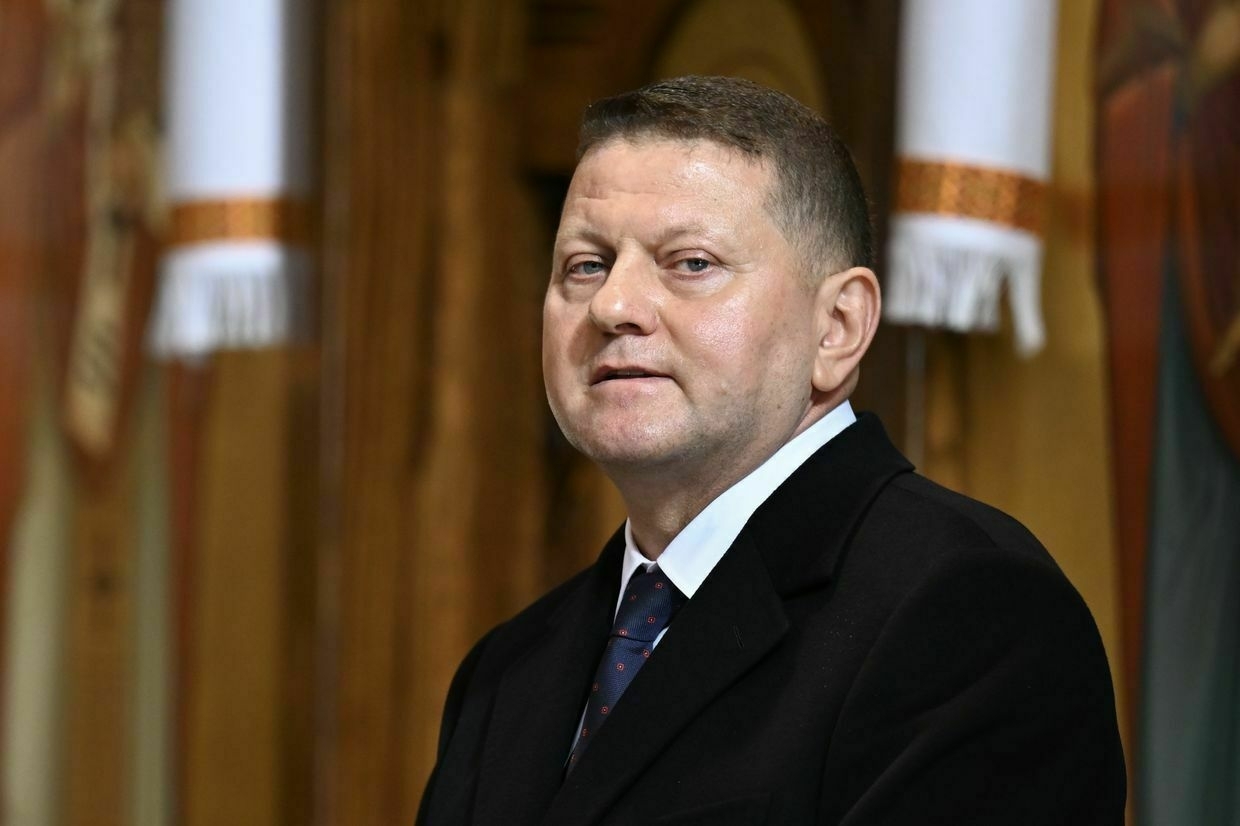
Ukraine’s former commander-in-chief and current ambassador to the U.K. Valerii Zaluzhnyi in London, United Kingdom, on Feb. 24, 2025. (Rasid Necati Aslim/Anadolu via Getty Images) Question: With regard to Russia’s ongoing difficulties recruiting soldiers and their heavy losses on the front line, what actual difference has this made in the fighting? Also, I read about Russia’s losses in your newsletter but not much about Ukraine’s?
Answer: Russian losses in this war are staggering. Will this have an effect on Russia’s ability to continue the war against Ukraine? No.
Ukraine has less people and resources to spare. A neverending manpower shortage is the biggest problem Ukraine is facing in this war. And there are too few options on how to fix it.
While it is believed that Russia has lost twice as many people, maybe three times as many people as Ukraine has, the Kremlin can easily afford it.
Ukraine cannot.
Russia has a population 3.5-4 times larger than that of Ukraine. Russia, unlike Ukraine, is a totalitarian dictatorship where the lives of people mean nothing to the government apparatus. So, they will continue to use all the tools at hand to call up more people to fight.
Russia also has the ability to offer substantial sign-up bonuses to those willing to fight, recruit mercenaries from Asian and African countries, and is willing to throw the disenfranchised, primarily convicts, to storm positions without carrying will those people survive the initial attack.
To follow developments in Russia I recommend our WTF is wrong with Russia? newsletter, to follow the battlefield and the Ukrainian side of things, I would recommend our War Notes newsletter. — Oleksiy Sorokin, deputy chief editor
Question: Do we know where the population of the occupied territories stands in relation to Ukraine forfeiting territories in a “peace” deal?
Answer: Recent developments are taking a toll on the people in the occupied territories. Since 2022, Ukrainians living under occupation have kept their hopes they will be liberated the same way that residents of Kyiv, Kherson, and Kharkiv oblasts were that year.
Ukrainians living there told me that one of the hardest parts now is listening to all the discussions about territorial concessions from the U.S., and how they often omit that these are real lives, real people who will have to either abandon their homes for an unknown period or live their lives under Russian occupation.
Since the possibility of liberating these territories through force is extremely slim, the atmosphere is very gloomy, and hope is hard to come by. That doesn’t mean that the anti-Russian resistance fizzled out. Resistance groups, both violent and non-violent, still remain active, and for many, it is this resistance that helps them keep going. — Martin Fornusek, senior news editor
‘Evil must not win’ — how Ukraine’s female partisans resist Russian occupationSomewhere in the streets of Russian-occupied Simferopol, the capital of Crimea, a woman puts a sticker on the wall. It’s a short message, but if she is seen doing it, she will face arrest, prosecution, and likely, torture. The message is: “Soon, we will be home again.” On anotherThe Kyiv IndependentMartin Fornusek

Question: Do you believe that the EU can give enough arms and security forces in a timely manner to protect Ukraine?
Answer: Yes. But for that to happen, Europe needs to step up.
Excluding some complex military hardware, such as the Patriot air defense systems and the extremely effective Bradley armored fighting vehicles, Europe knows how to build guns. It’s just not building them enough.
If Europe moves from talking to acting and begins rearming at a proper pace, the EU would be able produce weapons that would keep Ukraine in the fight. Ukraine also now has the know-how of how to build proper weaponry. It just needs the funds to increase production capacities.
The ReArm Europe initiative is a good start. The industry is also there. Now we need to see orders. — Oleksiy Sorokin, deputy chief editor
Question: French President Macron’s position on the war in Ukraine has undergone quite a few changes since the start of the full-scale invasion, and I think it’s fair to say that he is now fully and clearly committed to Ukraine. How is he currently perceived by Ukrainian public opinion, and are there any high expectations of him?
Answer: The public opinion regarding President Macron went through a deep transformation from the early period of his phone calls with Putin to him proposing for European boots on the ground later in the war. In fact, according to one opinion survey last year, Macron was the only foreign leader whose popularity improved in Ukraine. In 2025, European leaders are also perceived much more positively in contrast with the U.S. under the new administration.
At the same time, many reserve judgment. Macron’s pro-Ukraine turn has been mostly about rhetoric, and France still provides much less than it could in comparison to the U.K., Germany, or even smaller countries like Estonia or Denmark, which provide the largest shares compared to GDP. We’ll have to see if Macron’s and Starmer’s “coalition of the willing” can bring something real to the table. — Martin Fornusek, senior news editor
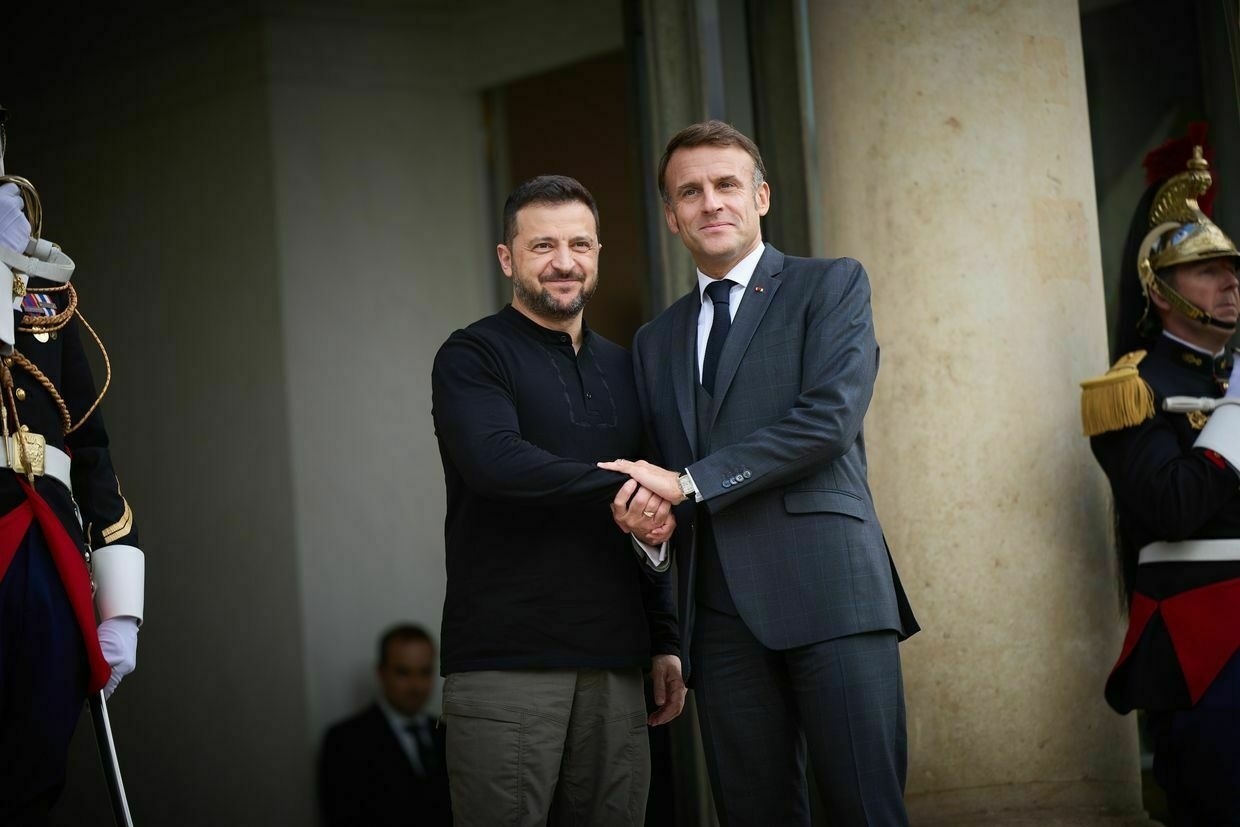
President Volodymyr Zelensky and French President Emmanuel Macron meet in Paris, France, on Oct. 10, 2024. (President Volodymyr Zelensky/X) Question: Trump is killing NATO or is at least withdrawing our country from it. Will Europe replace it with an EU army? Is it time for the EU to form a constitutional union better than what I feel we are losing with Trump and his MAGA party.
Answer: Unfortunately, further integration of the EU in the current political climate is difficult, and a united EU army is a far-off dream.
It is undeniable that the EU has reacted well to Trump’s foreign policy turn, namely in terms of higher defense spending and clearly demonstrating firm support of Ukraine.
But, the EU is still composed of countries with often contradicting interests, and consensus is hard to come by. It’s not only “rogue members” like Hungary and Slovakia — Italy, France, and Germany have different foreign and economic priorities that hamper united decision-making. For example, despite worries about Trump abandoning Ukraine, the EU was not able to agree on a new 40 billion euro package due to opposition from southern members.
Political trends suggest this might only get more difficult, as far-right and Euroskeptic parties are on the rise in both France and Germany.
In terms of military capabilities, Europe is still playing catch-up. Their militaries have been underfunded for decades and are often reliant on NATO infrastructure, which will be very hard to replace. We hear calls for a European alternative to the alliance, but that will demand years — if not decades — of sustained work. — Martin Fornusek, senior news editor
Question: How does drafting and mobilization work? Do the Ukrainian Armed Forces view draft evasion as a big problem? Is there an issue of corruption or morale among the population?
Answer: The large-scale, forced mobilization of men into the military was, is, and always will be not only incredibly painful and tragic but also the greatest internal political and social challenge in a country that otherwise remains united in its resolve to not capitulate to Russia’s attempt to destroy Ukraine as a nation. No country should have to go through this.
Inside Ukraine’s desperate race to train more soldiersNew recruit Vitalii Yalovyi knew one thing after completing the Ukrainian military’s boot camp: He was not prepared for war. The 37-year-old felt physically unfit, forcing him to miss some courses during the month-long training. His leg was still hurting from long daily walks at a training center i…The Kyiv IndependentAsami Terajima
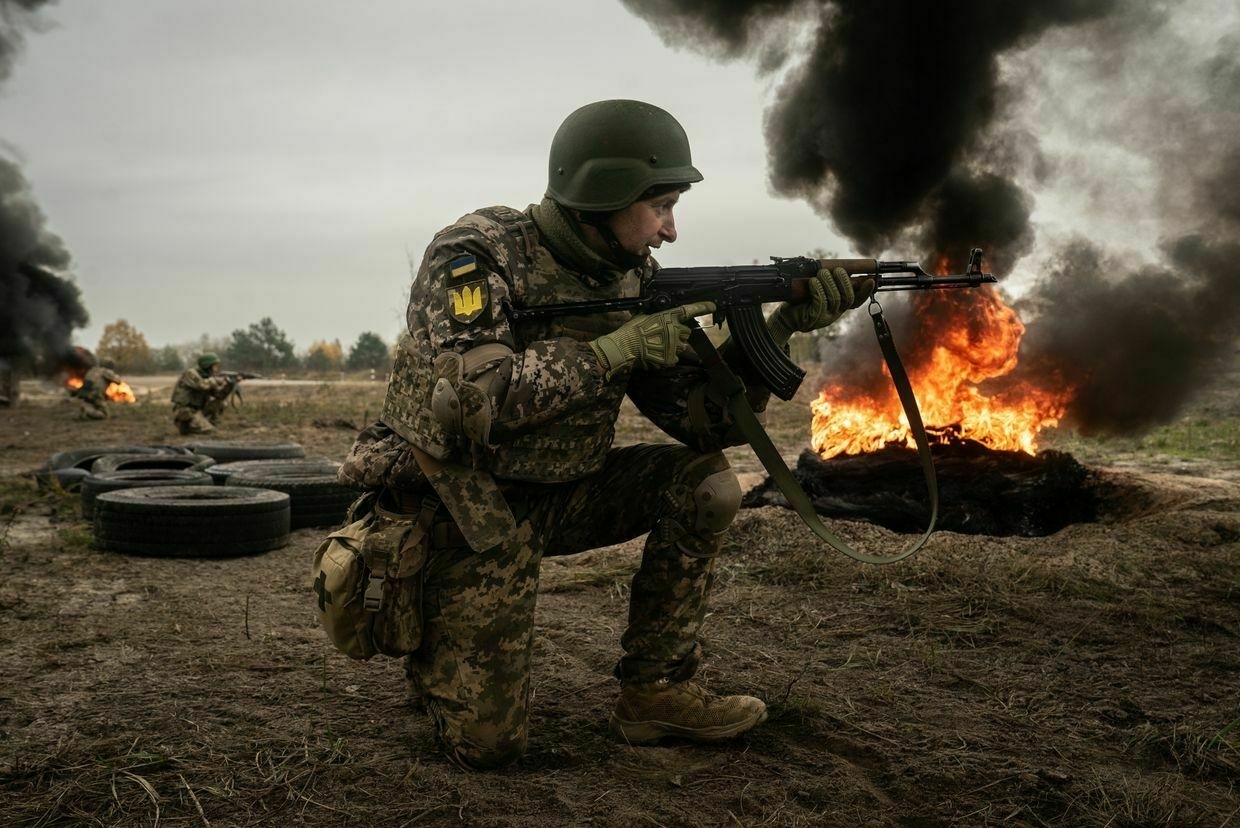
It’s important to make one thing clear: Ukraine’s manpower crisis refers specifically to the infantry; this is the deadliest, most difficult, and most uncomfortable job in the military. This is where the most casualties are taken, and this is where the most new recruits are needed to fill the ranks. In a war that is now dominated by drones, where anyone or anything moving around on the surface can be hunted by several high-precision drones within a few minutes, the life of the infantryman is truly horrible, and often, no amount of patriotism is enough for the average Ukrainian to take up this job. Lots of people are still joining the military voluntarily, but they are almost all going to other roles, especially in drone units. In fact, some are joining drone units voluntarily, specifically to avoid eventually being drafted into the infantry, while others, as you mentioned, choose to hide at home.
Unfortunately, this situation isn’t really getting better, as more people are still needed to avoid losing the country. If you ask me, the main hope to solve the manpower crisis is for two things to happen: First, the Ukrainian leadership needs to prioritize reforming mobilization, training, and especially how its soldiers are used on the battlefield so that the life of the Ukrainian infantryman is placed at front and center of the planning of operations on all levels. Second — and longer term — the military should learn to play to their strengths of drone warfare and do more and more to change how we understand the way war is being fought, with a wider gray area between positions that can be a great big killzone for Russian troops without Ukrainian infantry to have to be there. — Francis Farrell, reporter
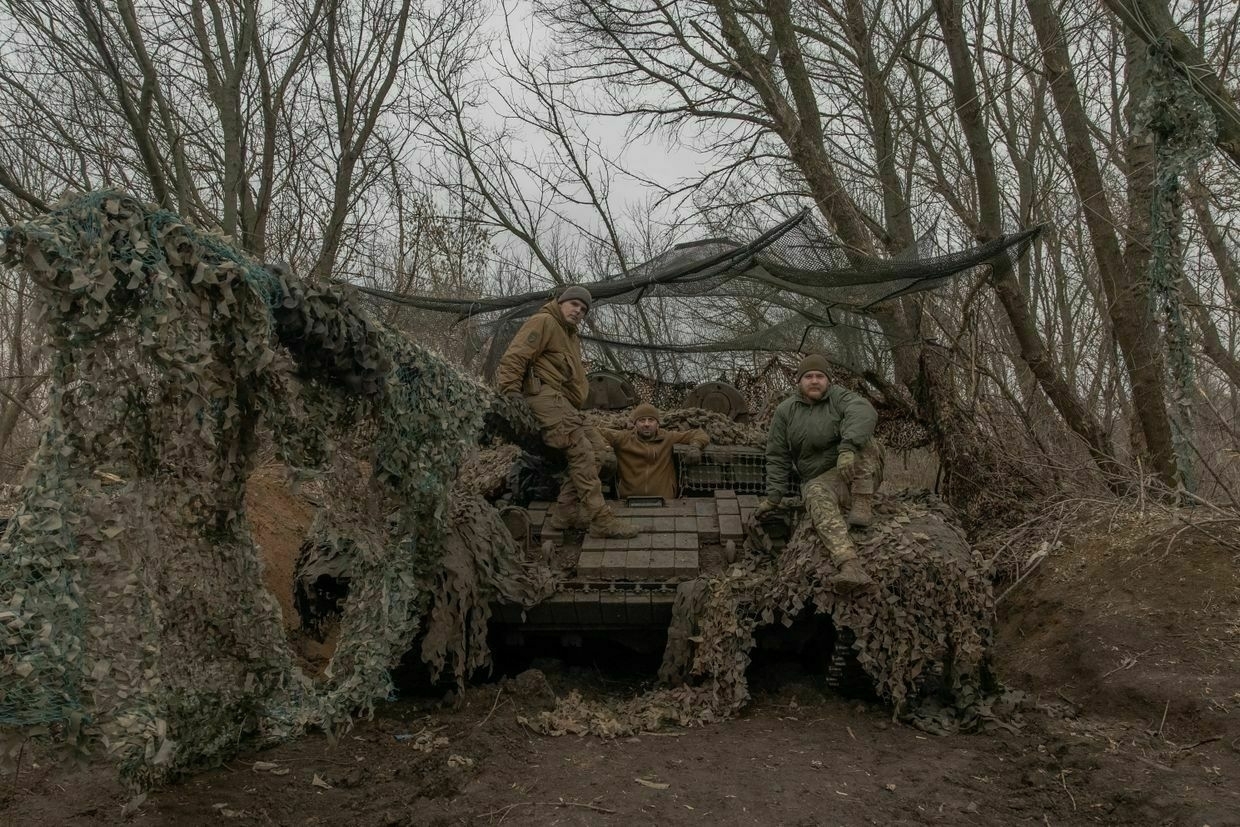
Azov tank crew members pose on their tank near Toretsk, Donetsk Oblast, on Jan. 31, 2025. (Roman Pilipey / AFP) Question: I have a question related to the new proposal for a one-year military contract for citizens between 18-24. What is the status of this proposal? Is it implemented already or is it currently being discussed in the Rada? Which processes are necessary for it to be adopted, and do we know if this is likely to happen or is it facing many obstacles?
Answer: The Defense Ministry officially launched the “Contract 18-24” project on Feb. 11, and volunteers can already apply online. Deputy head of the Presidential Office Pavlo Palisa described it as a “pilot project” in its “test mode,” however. The project is being carried out on a limited scale so far, including four Ground Forces brigades, one Airborne brigade, and one Marine brigade.
Based on the results, there are plans to further expand the project to other units. The number of people who signed up via this procedure is in the hundreds, not thousands. — Martin Fornusek, senior news editor
Question: We, your readers, hear constantly about the need for re-organization and reform of the Ukrainian military. For me, and other non-Ukrainians with a serious interest in Ukraine, can you discuss the current problems, like what happened to Zaluzhnyi, what’s up with Commander-in-Chief Oleksandr Syrskyi, and the aspects of corruption and mismanagement in the Ukrainian military?
Answer: Here, I am very happy to direct you to our latest article on this exact topic, by my colleague Natalia Yermak and myself. What’s up is that while Ukraine is waging a brutal struggle against Russian forces in the trenches and fields, it is also waging another battle, an internal one, against a military culture steeped in Soviet-era practices and mentalities that lead to excess loss of life and territories — the two things most dear to Ukraine in this war. There is a lot to go into, from the exact way that this actually manifests itself on the battlefield, to the persona of Oleksandr Syrskyi himself and the efforts to change the system, and for that, you should definitely check out the article. — Francis Farrell, reporter
Question: In relation to the ongoing discussions about the Russian invasion, why is the Russian side not interested in peace?
Answer: Russia launched its full-scale invasion of Ukraine in 2022 with an attack on the capital, Kyiv, as part of a broader attempt to decapitate and destroy the independent Ukrainian state. That attempt failed then, but now, having made progress in their war of attrition, and with the U.S. now abandoning the policy of supporting Ukraine’s struggle and instead looking more and more likely to abandon Kyiv altogether, the Russians are feeling pretty good about their position.
Even their stated minimalist goals call for the handover of a lot more Ukrainian territory in Donetsk, Kherson, and Zaporizhzhia oblasts, inhabited by millions of Ukrainians. This is what the world, including U.S. President Donald Trump, needs to understand: Russia is absolutely not interested in peace simply because they started this war wanting a lot more, and they feel more confident in their ability to get it than they have in three years. — Francis Farrell, reporter
Question: What is the reason behind the Trump administration’s Russian propaganda talking points?
Answer: Without actually getting inside their heads — which I don’t think I’d enjoy in the slightest — it’s impossible to say for sure. But, I guess there’s a sort of sliding scale of possible reasons, none of them particularly encouraging.
At one end of the scale, there is the possibility that they’re just underqualified, naive, inexperienced, and are falling for Russian propaganda.
I’d say Steve Witkoff is perhaps the best example of this — he’s a real estate mogul, with no experience of politics or diplomacy, and was positively swooning about Putin after meeting him in Moscow last month. And all it seemed to take was a bit of a smile from Putin and a painted portrait of Donald Trump as a gift to take back to the White House.
Put yourself in his shoes: going from the world of luxury real estate to suddenly finding yourself in the Kremlin — discussing the future of entire countries — must be pretty intoxicating.
And what’s the result? You fall for the spectacle and take Putin at his word. Next thing you know, you’re chatting to Tucker Carlson, telling him that any Ukrainians who speak Russian are absolutely fine with living under Russian occupation.
In the middle of the scale, there is the possibility that they just don’t actually care about what they’re saying, so long as they get what they want.
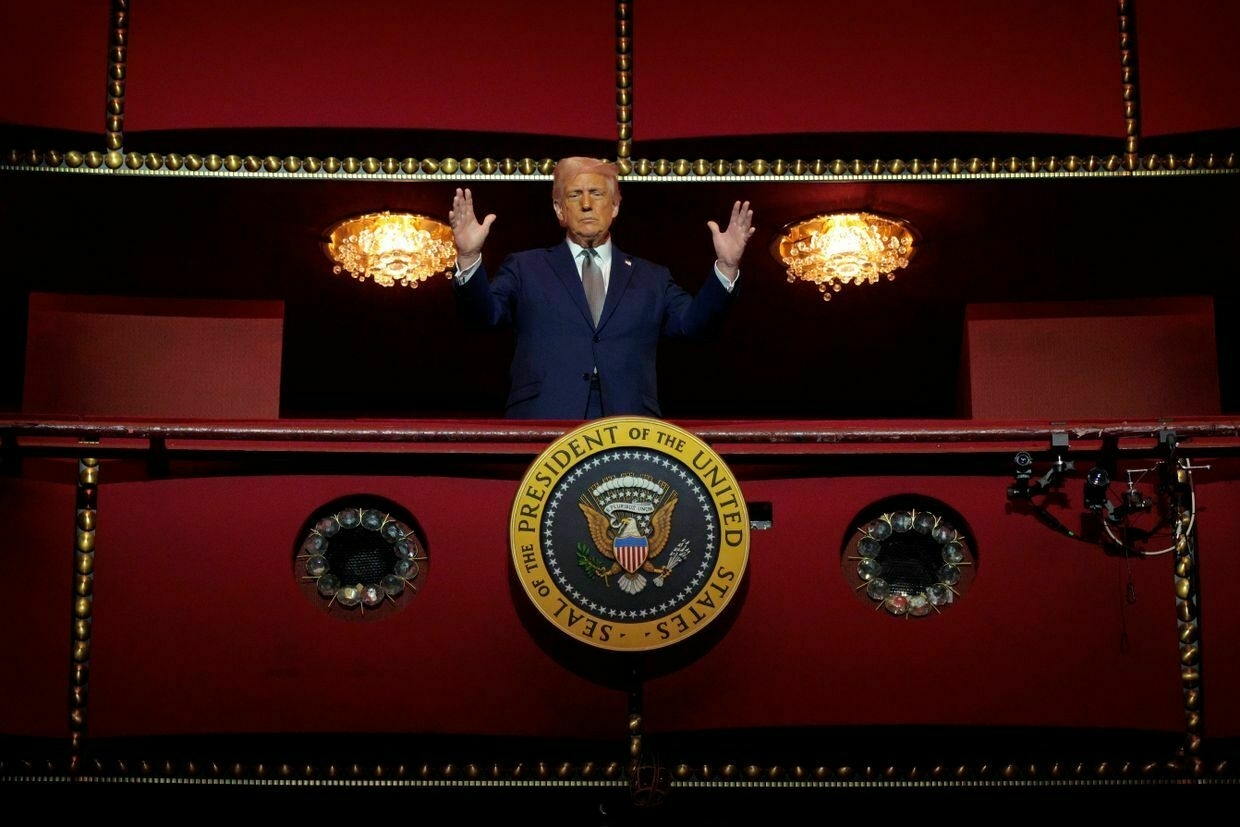
Donald Trump looks down from the Presidential Box at the Kennedy Center in Washington, D.C., on March 17, 2025. (Chip Somodevilla / Getty Images) 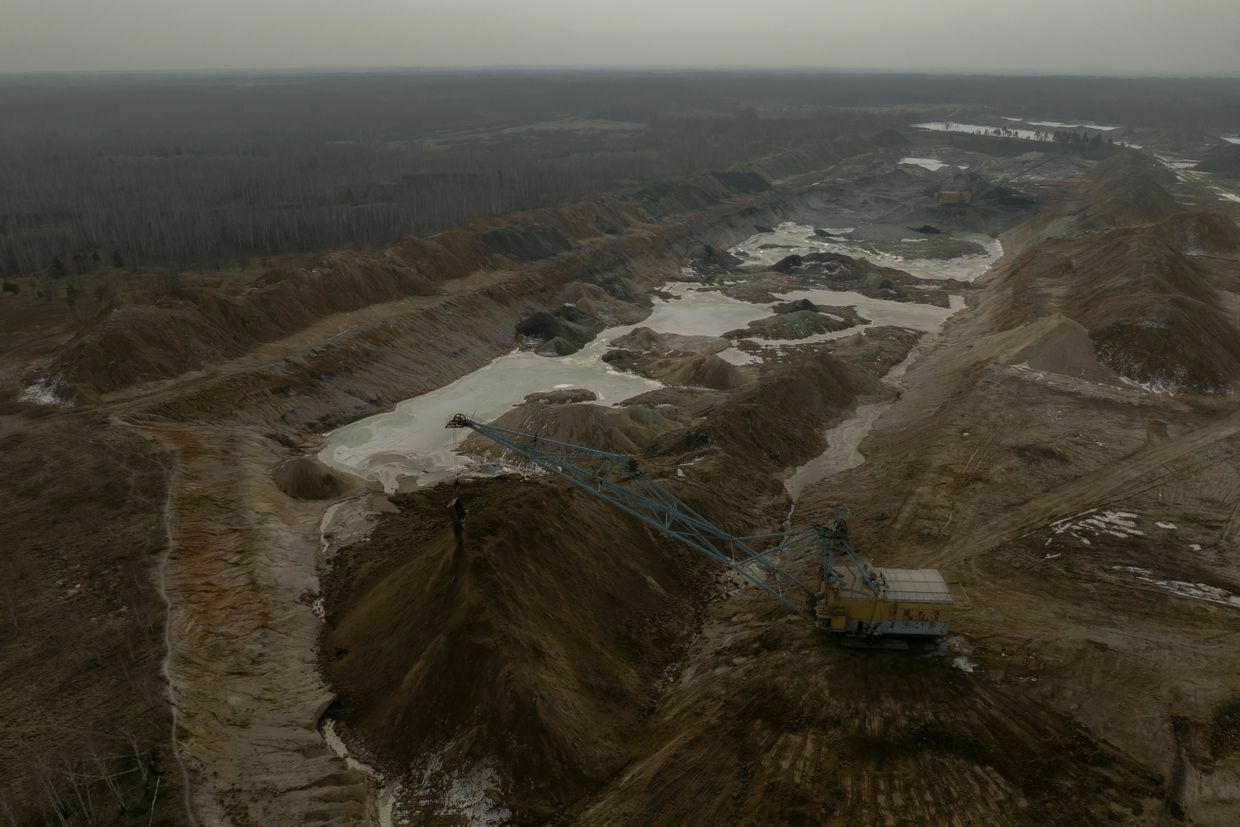
A dragline excavator operates in a titanium mine in Zhytomyr Oblast, on Feb. 28, 2025. (Roman Pilipey / AFP) Trump is the perfect example of this — he wants the mineral deal signed, and he was willing to say whatever it took to pressure Zelensky to do it. And, if you want to say something bad about Zelensky, and you’re looking for material, then all of those pre-prepared Kremlin lines that propagate so fruitfully on social media are just sitting there waiting for you.
I think this is the most likely reason, which is pretty terrifying. I recently interviewed historian Marci Shore about why she and her husband, Timothy Snyder, are leaving the U.S. to teach in Canada, and she put it perfectly.
Speaking about the Oval Office showdown, she said, “This was the profound moment that exposed that you’re dealing with people for whom there are no first principles, you’re just looking into this abyss of moral nihilism. Everything is a transaction, everything is a deal."
At the other extreme end of the scale, we get into the slightly conspiratorial world of “Is Donald Trump a Russian asset?"
We covered this in another interview with an author who is absolutely convinced he is. He has written two books about it, and there’s a lot of compelling evidence, but no smoking gun.
Regardless, it’s enough of a concern that even a British MP has raised it as a possibility.
But it’s sort of a moot point at the end of the day — whether Trump is a Russian asset or not, he’s sure acting like one. — Chris York, news editor
Question: What is the situation with the Ukrainian troops in Russia’s Kursk Oblast? We hear stories that they are surrounded. Other stories say they are retreating back to Ukraine. Have they got home safely?
Answer: Ukraine has had to withdraw from most of Russia’s Kursk Oblast, a long-expected outcome after the troops on the ground have suffered from critical logistical issues for months.
Ukraine is still holding onto a small patch of territory in Kursk Oblast near the border, which Western military experts have said was likely to prevent a Russian breakthrough into Ukraine’s adjacent Sumy Oblast in the northeast. The withdrawal appears to have been chaotic as always, which — like in the cases of Avdiivka, Bakhmut, and Kurakhove — could have been avoided by withdrawing weeks or a month earlier.
The rise and fall of Ukraine’s Kursk gambitAs Ukraine’s seven-month-long incursion into Russia’s Kursk Oblast came to what appears to be its end, Ukrainian soldiers and military experts are questioning the operation’s goal and the long-term effect it will have on the war. Ukraine launched a surprise cross-border incursion into Russia’s Kurs…The Kyiv IndependentAsami Terajima
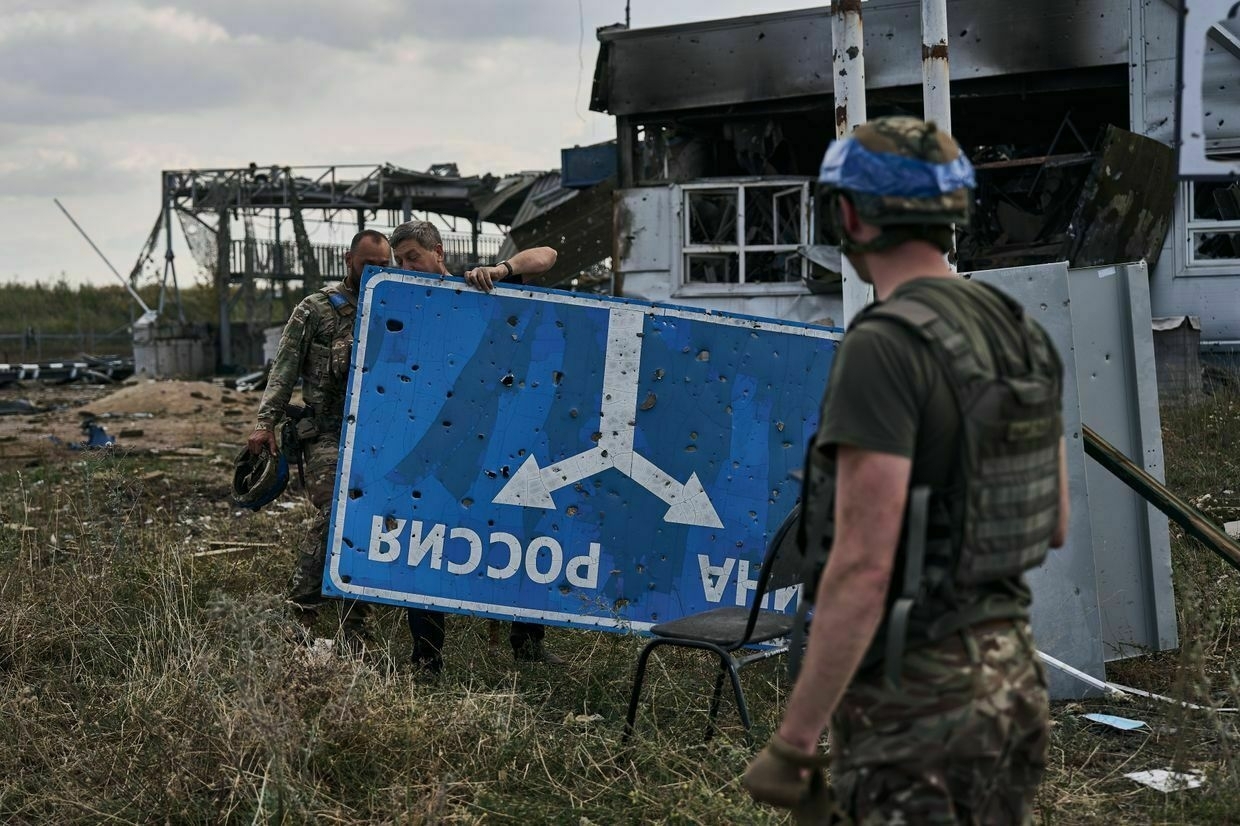
But the withdrawal wasn’t as bad as it could have been, with no major encirclements, according to both troops on the ground and experts. Soldiers have had to walk on foot though for days, leaving their valuable equipment behind. Many raised concerns over expending manpower and limited resources into invading another country’s territory when they could have been used to defend one’s own, especially as Russia gained ground on the eastern front — where many of the units participating in the cross-border operation were previously deployed — over the second half of 2024. — Asami Terajima, reporter
Question: Ukraine is obviously maintaining the position that the parts of the four oblasts Donetsk, Luhansk, Zhaporizhia, and Kherson that are not in Russian hands can never be ceded to Russia in a ceasefire, nor will the effectively occupied parts legally be recognized as Russia. But how far can Ukraine be forced by the U.S. to make concessions in this respect?
Answer: Zelensky has to walk a fine line on this issue, balancing the need to retain U.S. support — which right now Ukraine definitely does need as Europe isn’t ready to fill the gap just yet — and public opinion.
The latest opinion poll found that 38% percent of Ukrainians were open to conceding territory in a peace deal, up from 8% in December 2022.
But the number of Ukrainians who oppose giving up territories under any circumstances, “even if this would prolong the war and threaten the preservation of independence,” stands at 51%.
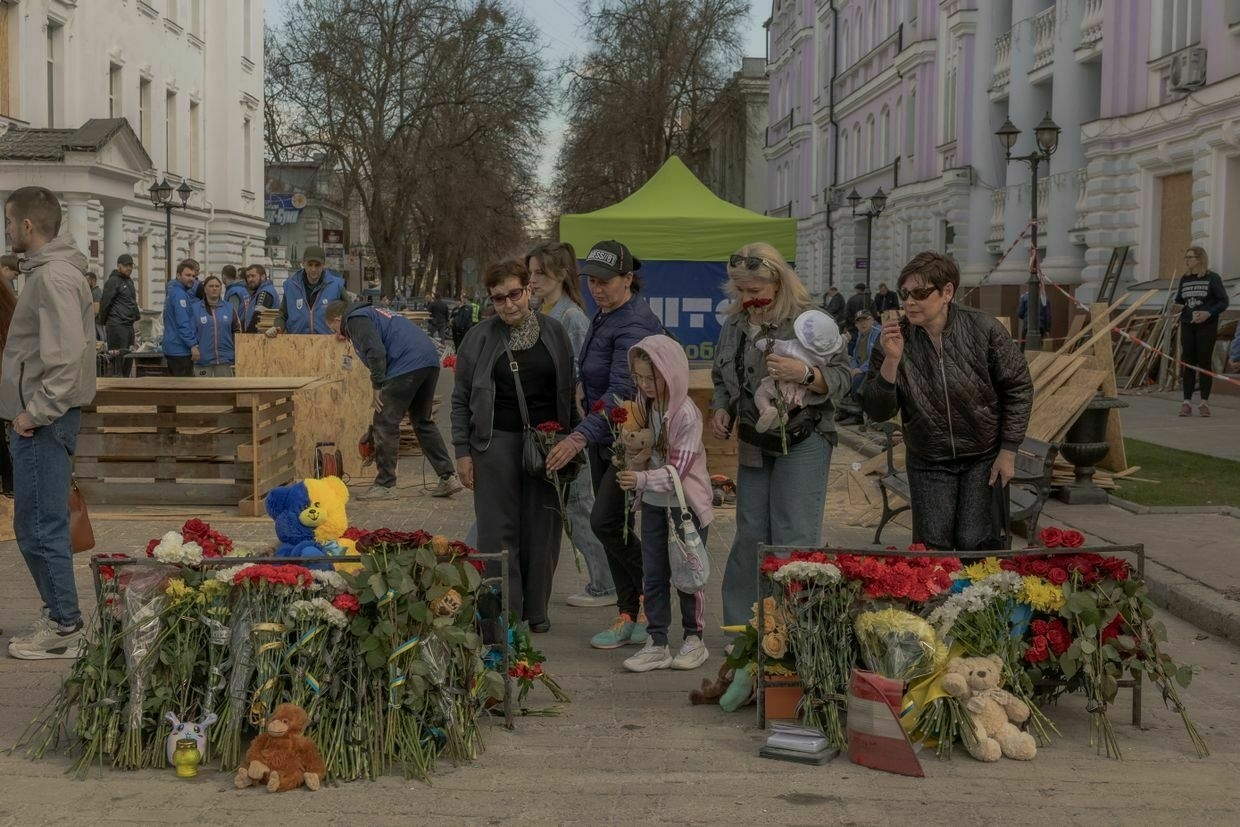
People lay flowers at a memorial at a missile strike site in Sumy, Ukraine, on April 14, 2025. (Roman Pilipey / AFP) Obviously, these numbers could shift further in the future, but right now, Zelensky is in a tricky spot.
But it’s just too early to know what sort of concessions the U.S. will demand of Ukraine, and given the absolute craziness of the last couple of months, it’s impossible to predict.
One point worth stressing, however, is that those polls do not include the views of the millions of Ukrainians currently living under Russian occupation. The debate among politicians and the media tends to focus on land, but it’s also lives that are at stake.
Unfortunately, Trump doesn’t seem to take matters like this into account in his pursuit of just getting deals done, so what is abhorrent to you and I, is nothing of the sort in his mind. — Chris York, news editor
Question: Why doesn’t Ukraine conscript women into the military forces like men?
Answer: I don’t know the official reasoning for why Ukraine doesn’t conscript women, but I think it goes back to the traditional war mentality that women could take over the jobs needed to keep the cities running. Despite the critical manpower shortage, many Ukrainian soldiers — predominantly over the age of 45 — that I have met said the last thing they want is for women to be forced into the war, saying that they are fighting at the cost of their lives to protect women and children.
But Ukrainian women have also proven to be excellent soldiers, sometimes successfully taking over leadership roles and conducting extremely dangerous missions. — Asami Terajima, reporter
Ukrainian Valkyries: Women embrace military training to learn to defend their homeland (Photos)Since Russia launched its full-scale invasion of Ukraine in 2022 and Kyiv announced a general mobilization, thousands of Ukrainians have been called up to defend their homeland. In Ukraine, conscription is mandatory only for men. Despite that, more than 45,000 women have voluntarily joined the Arm…The Kyiv IndependentOksana Parafeniuk
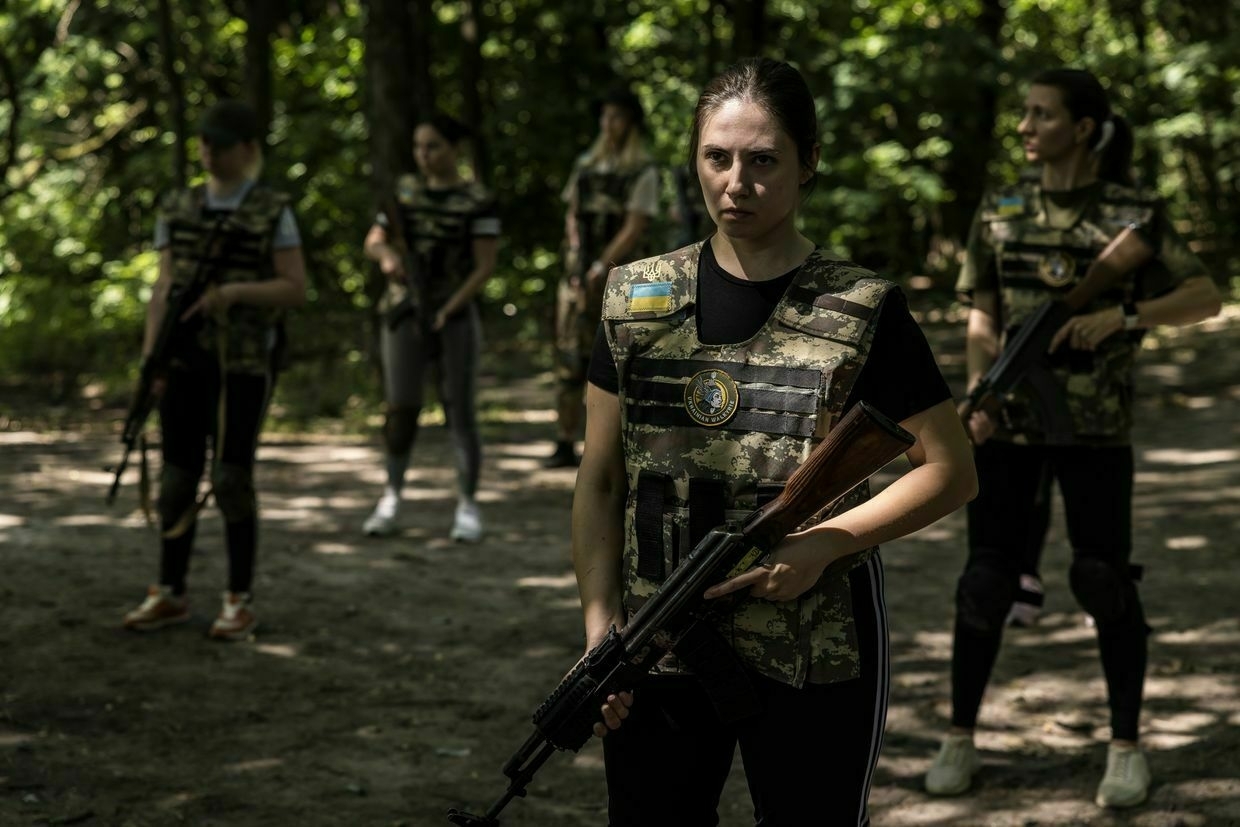
Question: There are a fair number of NATO nations individually providing military equipment. But seeing as they are of different origin, operational characteristics, maintenance needs, and “operating manuals,” has this proven a problem for Ukrainian troops on the front lines?
Answer: Yes, this has been a major issue for Ukrainian soldiers, requiring a fair bit of tinkering with the weapons received. This has particularly complicated the match-up between arms and ammunition, with Ukrainian soldiers reporting the need to re-distribute gunpowder between disparate shells and explosives regularly. — Kollen Post, defense reporter
Question: After the recent interruption of weapons deliveries and intelligence, is everything back to normal? Is my country now meeting its commitments under the Trump administration (as the majority of the American people want)?
Answer: As far as we know, yes, but that comes with a few caveats.
The nature of intelligence sharing means few, if any, details about the state of the current relationship between the U.S. and Ukraine are public, or will be made public, so all we have to go on are the statements made by officials. And, according to both sides, it’s back up and running. Whether or not it’s up and running at the same level it was, we don’t know.
As an aside, there was a great piece in the NYT on the intelligence relationship between the U.S. and Ukraine throughout the full-scale invasion, though notably, it doesn’t cover any of the period since Trump took charge. It’s very much worth a read, though.
As for military aid, that which was allocated by President Joe Biden is still making its way to Ukraine after the pause.
The crucial question here is how long will it last? Trump has yet to authorize any new weapons shipments and has tied future aid to the minerals deal which is still yet to be signed. So it’s all a bit murky as to how it will play out.
One notable recent announcement was that on April 3, U.S. General Christopher Cavoli said more F-16 fighter jets are being prepared for transfer to Ukraine. — Chris York, news editor
Question: What can individuals around the world do to help Ukraine the most?
Answer: This is one of the most frequently asked questions from our readers and members. The most obvious answer is to donate — two well-known organizations that support those on the front line are Come Back Alive and the Hospitallers. Especially since the suspension of USAID funding, donating even a few dollars can make a big difference: Ukraine was the largest recipient of U.S. economic aid, receiving over $14 billion in 2023.
Outside of making a monetary contribution, you can also contact your elected representatives, asking them to vote in favor of initiatives that help Ukraine, boycott companies that still operate within Russia, and read and share news from Ukraine. We’ve even made this list about how to help Ukraine, so it’s easy for you to share. And most importantly, don’t give up — every effort counts. — Brooke Manning, senior community manager
Ukraine’s long-suffering aerospace giants look to Europe to break free from Russian orbitWhere the Donbas meets the Dnipro River, the USSR built out a dense range of massive factories, using the local coal and metal reserves to smelt, weld, and cast the heaviest of machinery — and weaponry — for the whole of the Soviet Union. One of these is Pivdenmash, formerly known byThe Kyiv IndependentKollen Post
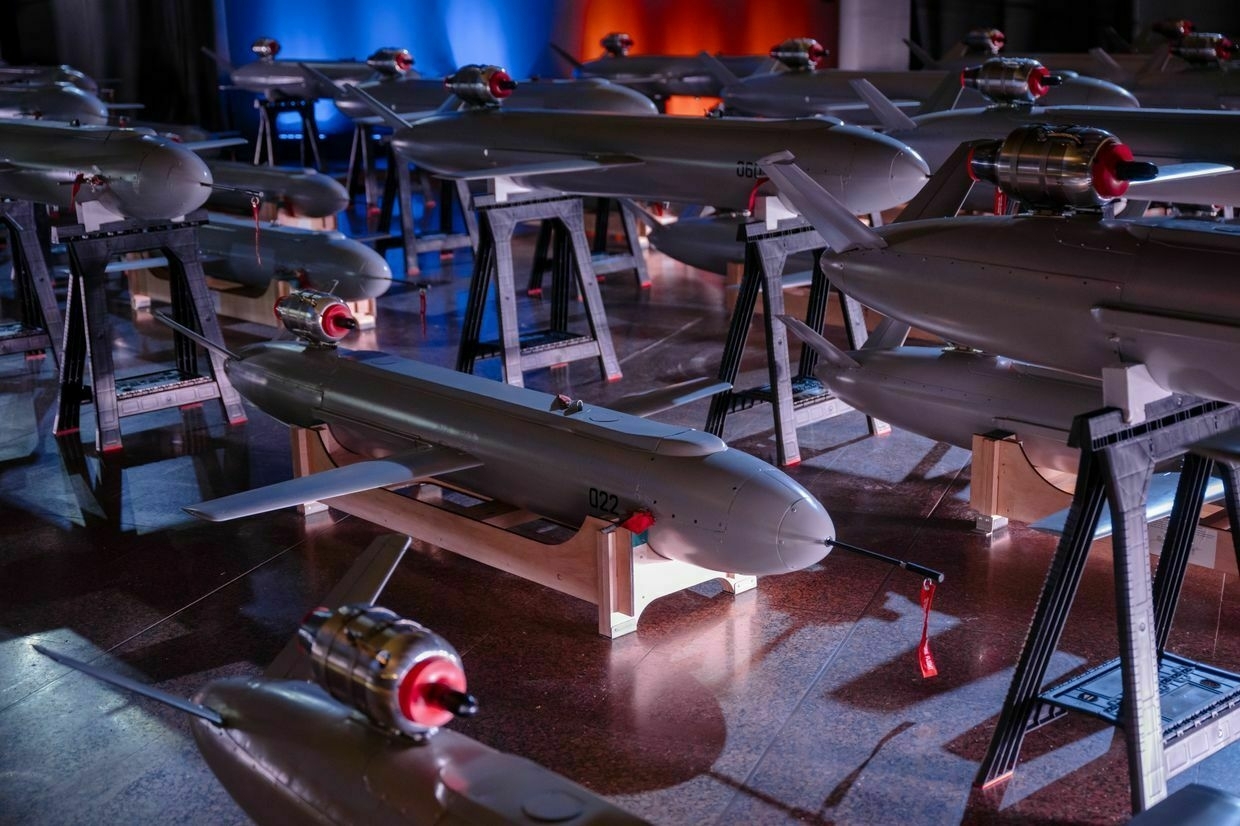
-
Russia sees no 'clear outlines' yet of agreement with US on war in Ukraine, Kremlin spokesperson says
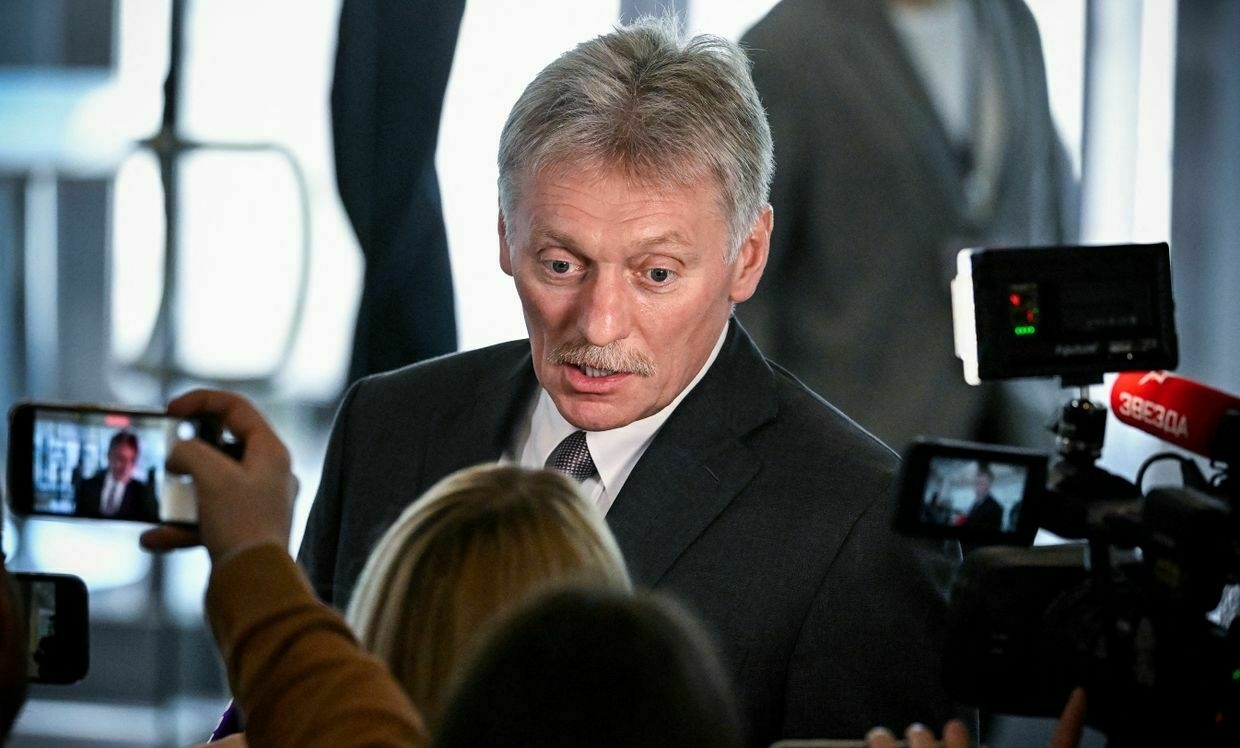
The Kremlin sees no “clear outlines” of an agreement with the United States on the war in Ukraine, Kremlin spokesperson Dmitry Peskov said on April 15, according to Russian state news agency TASS.
Peskov’s remarks follow a meeting between U.S. Special Envoy Steve Witkoff and Russian President Vladimir Putin in St. Petersburg on April 11.
After the meeting, Witkoff described the talks as productive, claiming Putin expressed a desire for a “permanent peace.” He also said discussions focused on a potential peace deal involving the status of “five territories.”
Peskov called the recent talks — including Witkoff’s meeting with Putin — “positive and useful.”
“We are very, very positive about the constructive and meaningful contacts that have taken place,” Peskov said, adding that both parties have the political will to reach an agreement.
“I would like to hope for the best that this work will have positive results. At this point, we wouldn’t be able to say for sure about any timeframe,” he said.
According to Reuters, Witkoff told U.S. President Donald Trump that granting Russia “ownership” of four partially occupied Ukrainian regions – the Donetsk, Luhansk, Zaporizhzhia, and Kherson oblasts – would be the quickest path to achieving a ceasefire.
The proposal reportedly followed a separate meeting Witkoff held with Russian Direct Investment Fund chief and Putin’s negotiator Kirill Dmitriev in Washington earlier in April.
Witkoff has drawn criticism for echoing Kremlin narratives regarding Russia’s illegal occupation of Ukrainian territory.
Since taking office in January, the Trump administration has adopted a more amicable stance toward Russia, resuming direct diplomatic contact with Moscow while signaling a reduced commitment to Ukraine’s security.
‘Putin believes he has the upper hand’ — Ukraine braces for a new Russian spring offensiveIn a way unseen since the start of the full-scale invasion, the daily grind of the front line in Russia’s war against Ukraine has taken the back seat in world headlines. The dizzying U.S. President Donald Trump-led attempts to negotiate peace in the world arena dominate the news cycleThe Kyiv IndependentFrancis Farrell
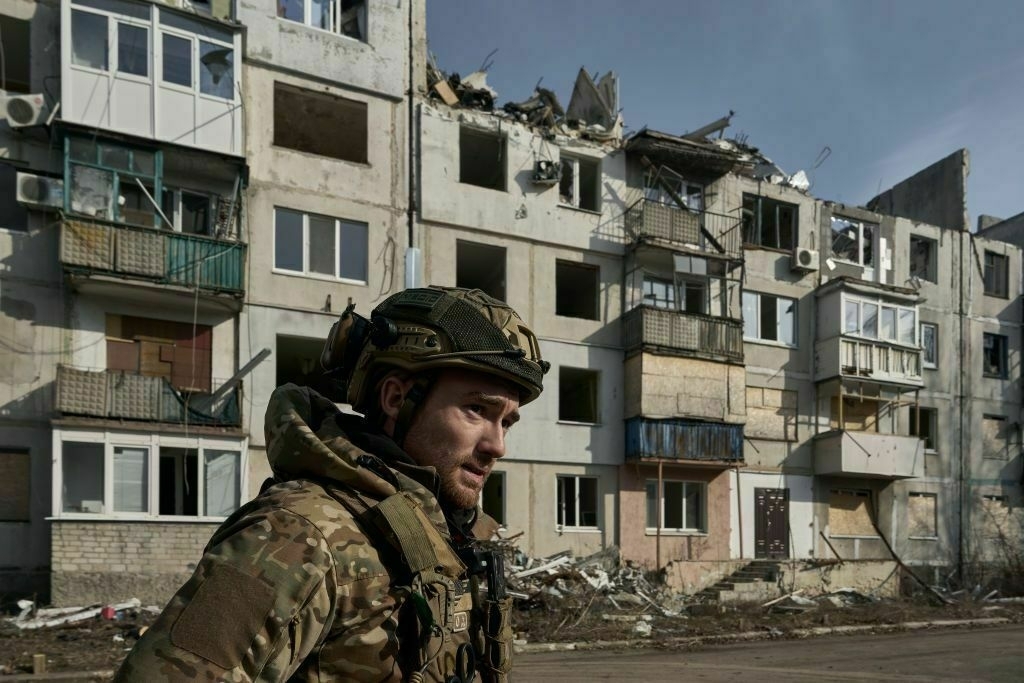
-
US blocking G7 statement denouncing Russia's Sumy strike, Bloomberg reports
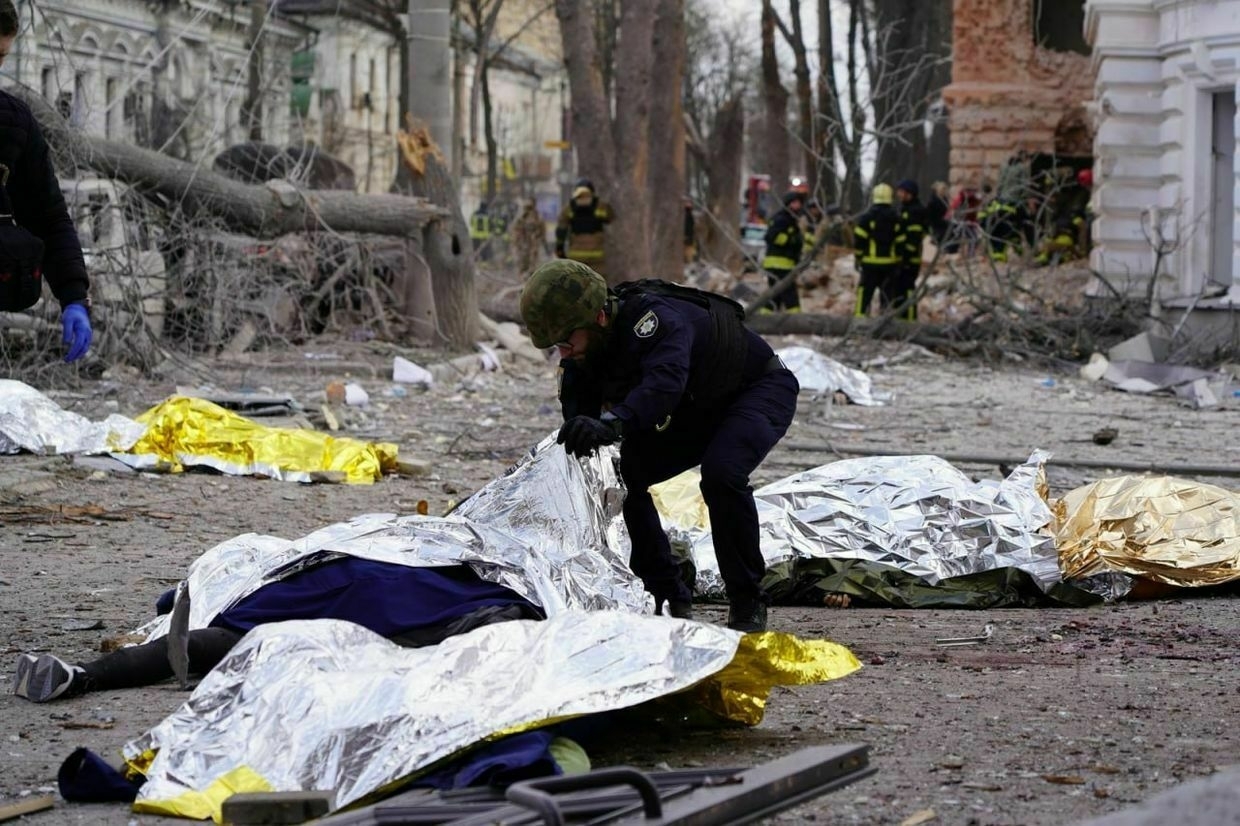
The U.S. has told the other G7 members it would not support a joint statement condemning Russia’s deadly attack on Sumy last week so as not to disrupt peace efforts, Bloomberg reported on April 15, citing undisclosed sources.
Russia launched the missile attack against the northeastern city on Palm Sunday on April 13, killing 35 people and injuring 119. It marked one of the worst attacks against Sumy throughout the full-scale war.
Canada, currently chairing the G7 group, reportedly told other members that the statement could not be adopted without U.S. support. According to Bloomberg, the statement was to denounce Russia’s attack as evidence that Moscow is determined to continue its war.
While European leaders have denounced the attack as a war crime, Trump adopted a softer tone, saying that while the strike was “terrible,” it likely occurred by “mistake,” without elaborating further.
U.S. Secretary of State Marco Rubio offered condolences to the victims of the “horrifying Russian missile attack on Sumy” but stopped short of calling for an increasing pressure on Russia.
The move is only the latest in the string of Washington’s steps undermining G7 unity on Russia and Ukraine. The Trump administration has previously opposed a joint statement on the third anniversary of Russia’s full-scale war and vetoed a proposal for a task force tracking the Russian “shadow fleet” of tankers.
Since taking office in January, Trump has upended years of U.S. foreign policy on the Russia- Ukraine war, resuming direct contact with Moscow while exerting pressure on Kyiv by temporarily cutting off crucial military aid.
Trump has pledged to broker a swift ceasefire between Russia and Ukraine, but these efforts have largely stalled as Moscow rejects a 30-day truce supported by Washington and Kyiv. Despite these delays, Trump has yet to exert additional pressure on Russia.
‘Panic, screams, dead everywhere’ — Sumy in shock after double-tap missile attack kills 35Valeriia Maksimova and her husband woke up to the first explosion in central Sumy at around 10 a.m. Their house was damaged by the blast wave. The 38-year-old rushed to the kitchen to start clearing the rubble when the second explosion struck, throwing her three meters away intoThe Kyiv IndependentAsami Terajima
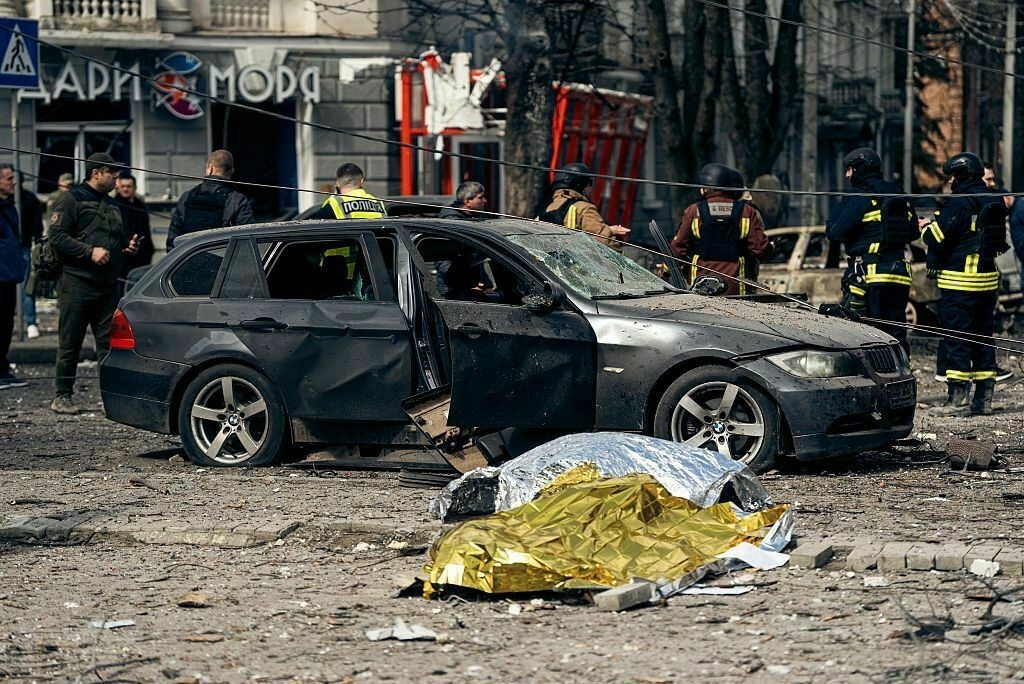
-
EU readies 'plan B' for bypassing Hungary's Russia sanctions veto, RFE/RL reports
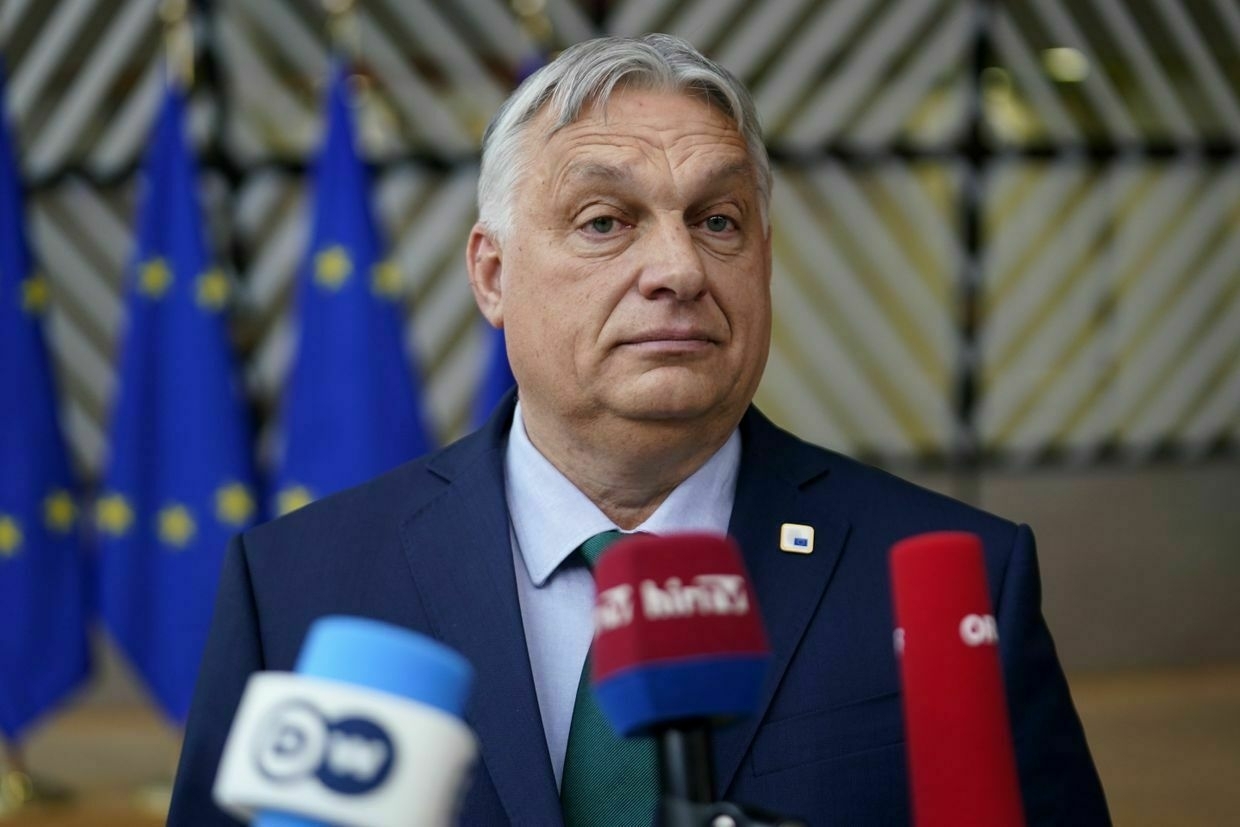
EU legal experts are exploring a potential method of preventing Hungary from derailing the extension of sanctions imposed on Russia this July, Radio Free Europe/Radio Liberty reported on April 15.
The European bloc has adopted 16 packages of sanctions on Russia since the outbreak of the full-scale invasion of Ukraine in 2022.
Since their extension requires a unanimous approval every six months, Hungary, broadly seen as the most Moscow-friendly EU member, has repeatedly threatened to derail the process while extracting exemptions from listings.
One of the main options Brussels has for bypassing Hungary’s veto is to leave the sanctions in effect without the formal extension.
The EU sanctions consist of two documents adopted one after another: a decision and a regulation. While a regulation must by extended by all 27 members every six months, a decision remains in force until a qualified majority repeals it, RFE/RL wrote.
This would mean that the already-imposed decision on sanctions would remain in force without the need for extension — an unprecedented move that would open the door to legal challenges.
This method is reportedly not the only one on the table. Another option under consideration is that the upcoming 17th sanctions package would not be actually adopted but instead “horse-traded” with Hungary for the extension, RFE/RL reported.
The EU could also potentially let the sanction lapse but instead raise tariffs on Russia, a decision that does not require unanimity, or adopt mirroring sanctions on national levels.
The European bloc has sanctioned some 2,500 individuals and entities as part of its sanctions against Russia. Measures like visa bans and asset freezes are reviewed in March and September, while sanctions like import bans are renewed in January and July.
Brussels managed to negotiate an extension of sanctions in March despite Hungary’s veto threats. Hungarian Prime Minister Viktor Orban, who has obstructed aid to Kyiv and sanctions against Russia for the past three years, has been further emboldened by the election victory of U.S. President Donald Trump.
Orban argues that Trump’s push toward peace, which so far has included mostly pressure against Ukraine, means the EU must also abandon its military support for Kyiv and reopen dialogue with Moscow.
The Trump administration has suggested that the lifting of sanctions, including those imposed by the EU, would have to be part of an eventual peace settlement.
Witkoff says ‘5 territories’ key to proposed Russia-Ukraine deal after meeting PutinSome U.S. officials have raised alarms over the direction of the Trump administration’s diplomacy. The Wall Street Journal reported that Secretary of State Marco Rubio and Special Envoy for Ukraine Keith Kellogg are urging President Donald Trump to resist territorial concessions to Moscow.The Kyiv IndependentTim Zadorozhnyy
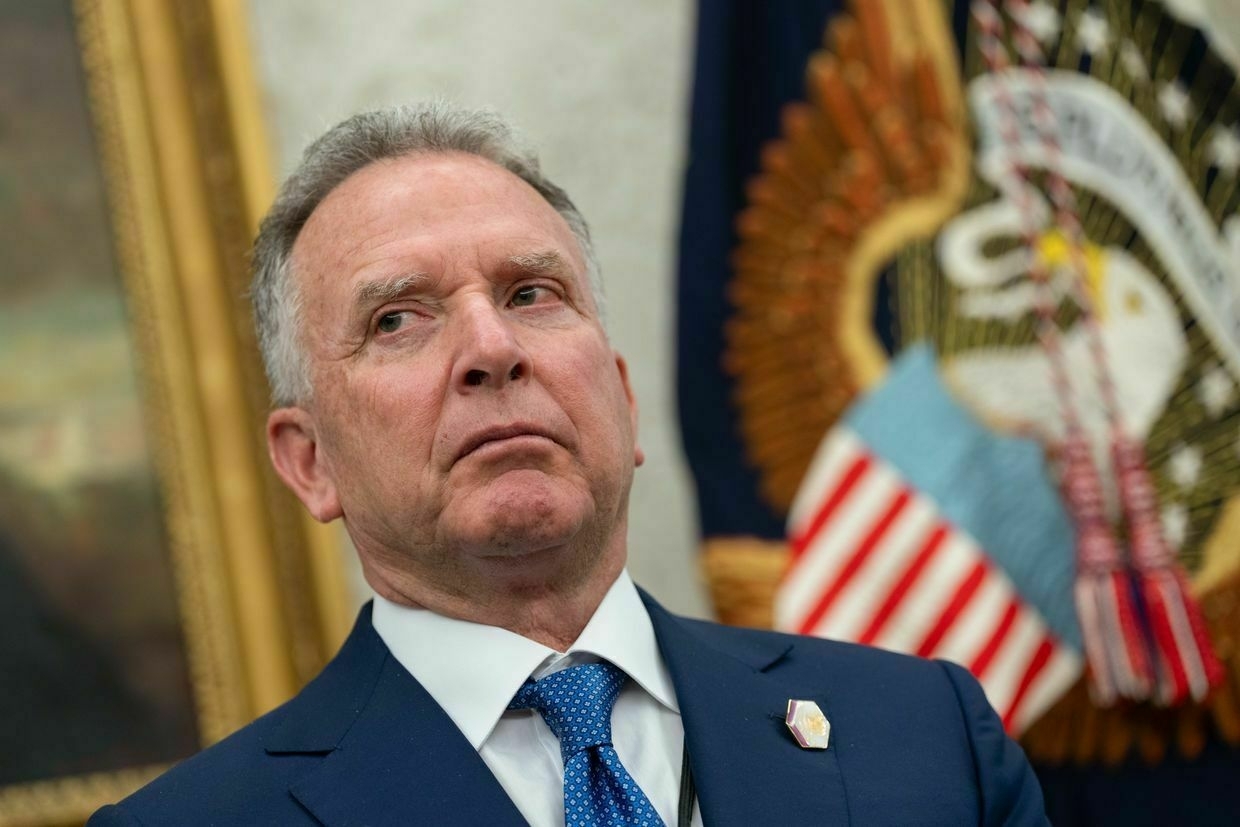
-
Poland, Czechia reportedly push to restrict Russian diplomats' movement in Schengen
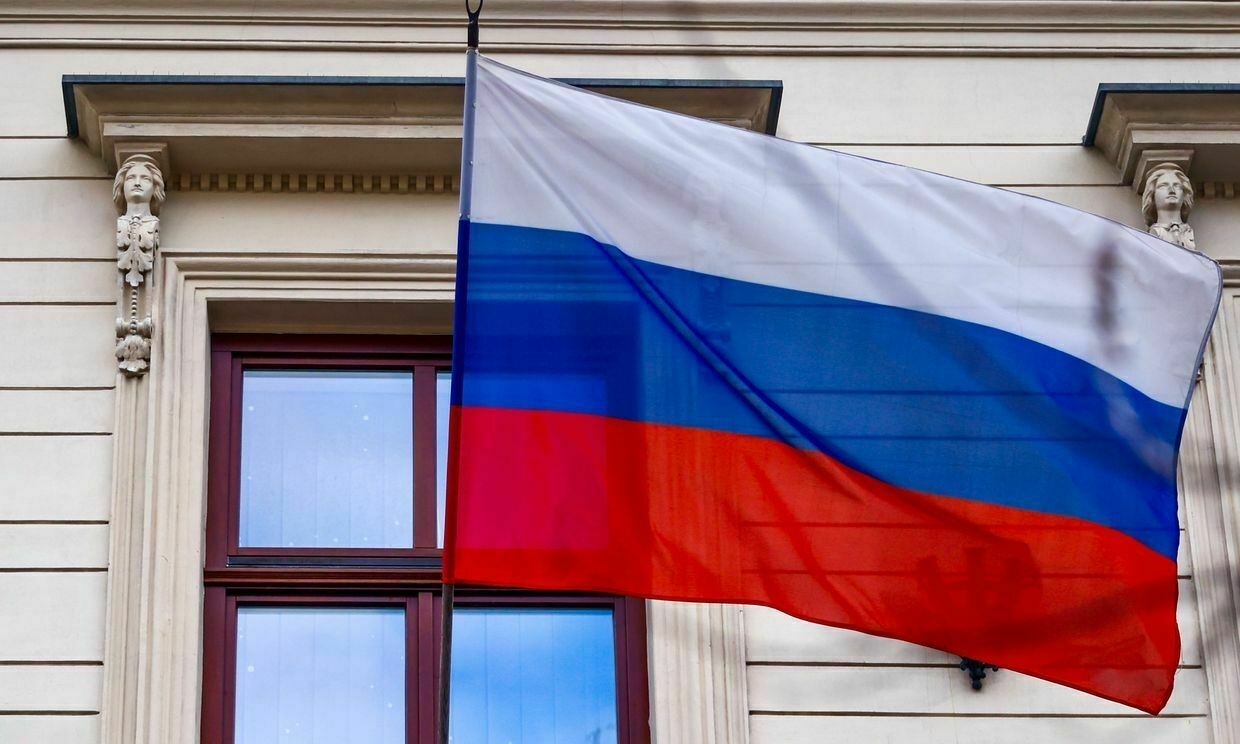
Poland and Czechia are spearheading efforts to restrict the free movement of Russian diplomats within the Schengen Area, citing concerns over espionage and sabotage, Polish media Rzeczpospolita reported on April 15, citing undisclosed officials.
The initiative originated in Prague in November 2023, when Czech authorities called for a ban on the movement of Russian diplomats they allege are agents of the Russian military intelligence (GRU) and other intelligence services.
By June 2024, Denmark, Estonia, Latvia, Lithuania, the Netherlands, Poland, and Romania had joined the Czech appeal, submitting a joint letter to then-EU foreign policy chief Josep Borrell. Former NATO Secretary General Jens Stoltenberg publicly supported the effort.
The proposal calls for limiting Russian diplomats to their consular districts, a restriction already implemented in Poland. Currently, 21 Russian diplomats remain in the country — a third of the pre-2022 number — confined to Warsaw, Gdansk, and Krakow.
“Any idea that makes it harder for the Russians to conduct intelligence activities in Poland and the European Union is justified,” said Colonel Jacek Maka, former head of Poland’s ABW counterintelligence service, in comments for Rzeczpospolita.
“This is not about diplomacy. These are de facto spies."
The Schengen Area, comprising 27 European nations, allows for passport-free travel across borders. If adopted, the proposed restrictions would mark a rare rollback of that freedom, reflecting growing security concerns across the bloc.
Tensions have risen sharply amid suspected Russian sabotage on EU territory. Lithuanian authorities believe Russian intelligence orchestrated arson attacks on an IKEA warehouse in Vilnius and a shopping center in Warsaw in 2024.
Polish and Lithuanian investigators said Ukrainian nationals, allegedly recruited by Russian operatives, carried out the attacks. One suspect is a minor.
Western officials have warned of coordinated Russian efforts to destabilize European countries that support Ukraine. Intelligence services across NATO have reported an uptick in Russian sabotage and infiltration operations since the full-scale invasion of Ukraine began in 2022.
Witkoff says ‘5 territories’ key to proposed Russia-Ukraine deal after meeting PutinSome U.S. officials have raised alarms over the direction of the Trump administration’s diplomacy. The Wall Street Journal reported that Secretary of State Marco Rubio and Special Envoy for Ukraine Keith Kellogg are urging President Donald Trump to resist territorial concessions to Moscow.The Kyiv IndependentTim Zadorozhnyy
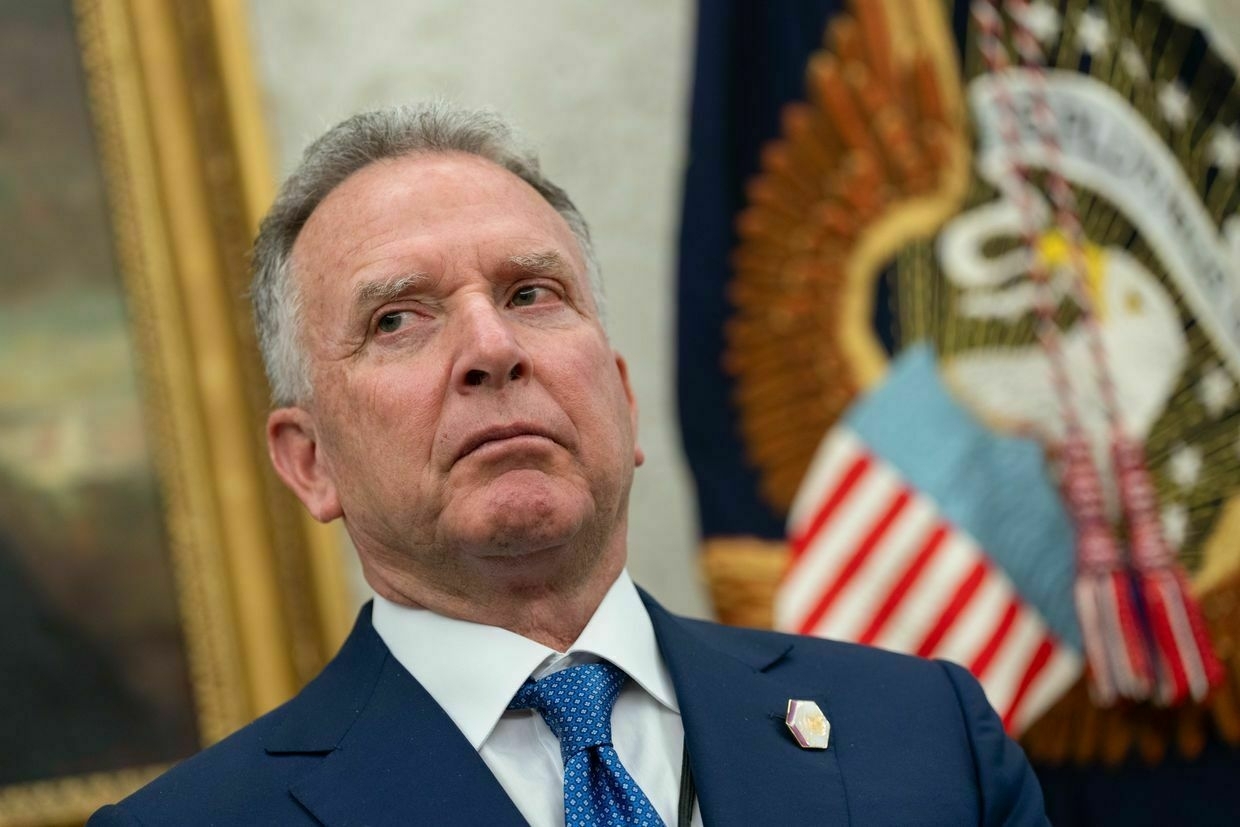
-
Ukraine has liberated Dniproenerhiia village in Donetsk Oblast, commander claims
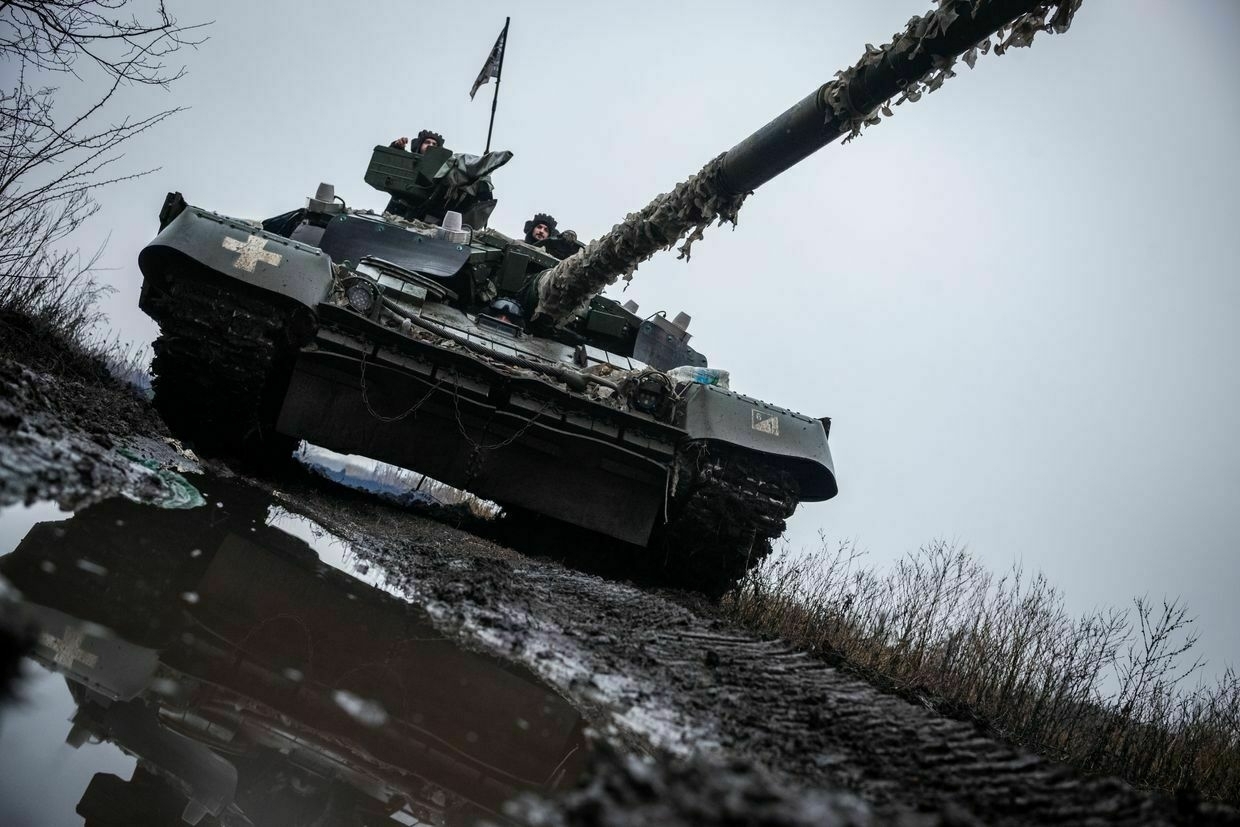
Ukrainian forces have recaptured the village of Dniproenerhiia in Donetsk Oblast’s Volnovakha district and advanced in two key front-line sectors in the past two months, Lieutenant General Serhii Naiev, commander of the Vuhledar tactical group, reported on April 15.
“I have been in command of the tactical group for two months. During this period, we managed to reduce personnel losses by 20%, regain control of the village of Dniproenerhiia, and improve the tactical situation in two critical areas,” Naiev wrote on Telegram.
Dniproenerhiia, located along the Mokri Yaly River in the Komar community, has long been a contested area in eastern Ukraine. The settlement, which had a pre-war population of some 100 people, lies 35 kilometers (20 miles) northwest of occupied Vuhledar.
Naiev did not specify the date of the settlement’s liberation. The monitoring group DeepState lists the village as partially occupied as of April 14, with reported Russian advances in the nearby settlements of Katerynivka, Terny, and Pishchane.
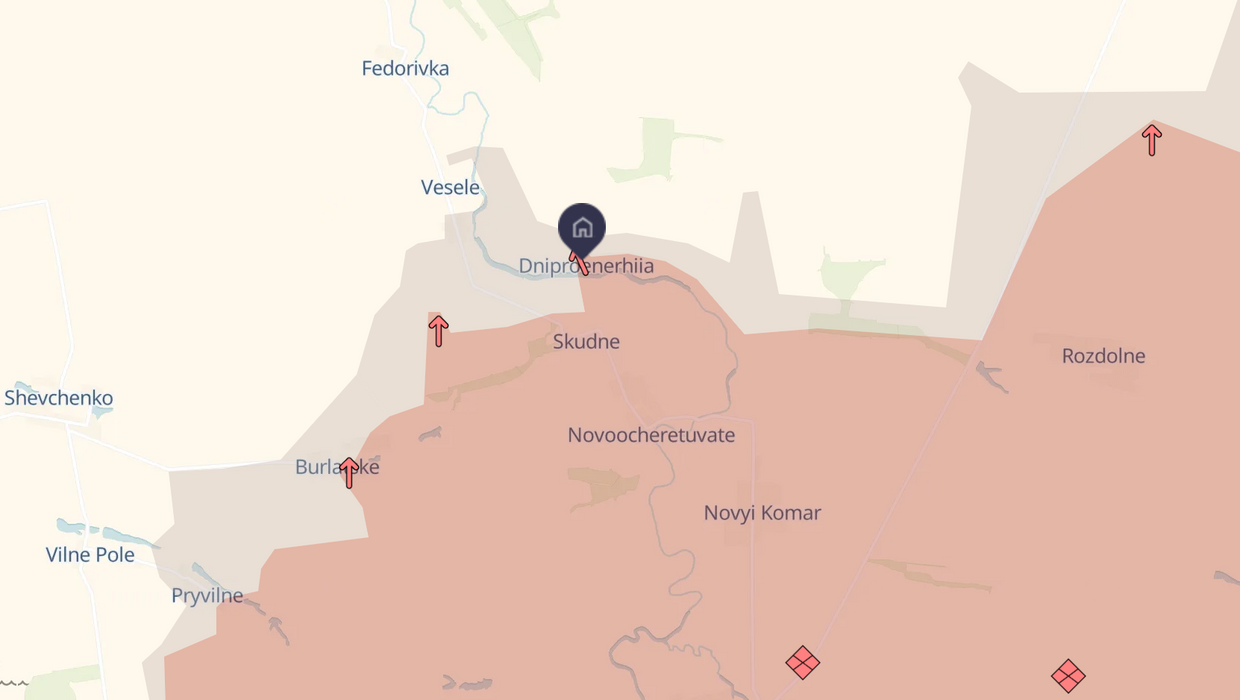
The estimated Russian advance in the Donetsk Oblast, Ukraine, as of April 14, 2025, according to DeepState map. A white symbol marks the village of Dniproenerhiia. (DeepState / OpenStreetMaps) Naiev said Ukrainian troops eliminated about 9,500 Russian soldiers and destroyed 51 tanks, 166 armored vehicles, and 819 pieces of other equipment over the past two months in the sector.
The commander also noted that Russia is ramping up its assault operations, deploying more troops and hardware to the front.
The reported tactical gains come amid a broader escalation by Russian forces, particularly in Donetsk Oblast.
Commander-in-Chief Oleksandr Syrskyi said on April 9 that Russia’s new spring offensive “has actually already begun,” with fighting intensifying around key locations, including Pokrovsk, a major logistics hub northwest of occupied Donetsk.
CNN, citing Ukrainian General Staff reports, said Russian troops have been attempting breakthroughs along multiple sectors just as Washington renewed pressure for a ceasefire.
Despite mounting battlefield pressure, Ukrainian forces continue to conduct counterattacks to contain Russian advances and reclaim lost ground.
Witkoff says ‘5 territories’ key to proposed Russia-Ukraine deal after meeting PutinSome U.S. officials have raised alarms over the direction of the Trump administration’s diplomacy. The Wall Street Journal reported that Secretary of State Marco Rubio and Special Envoy for Ukraine Keith Kellogg are urging President Donald Trump to resist territorial concessions to Moscow.The Kyiv IndependentTim Zadorozhnyy
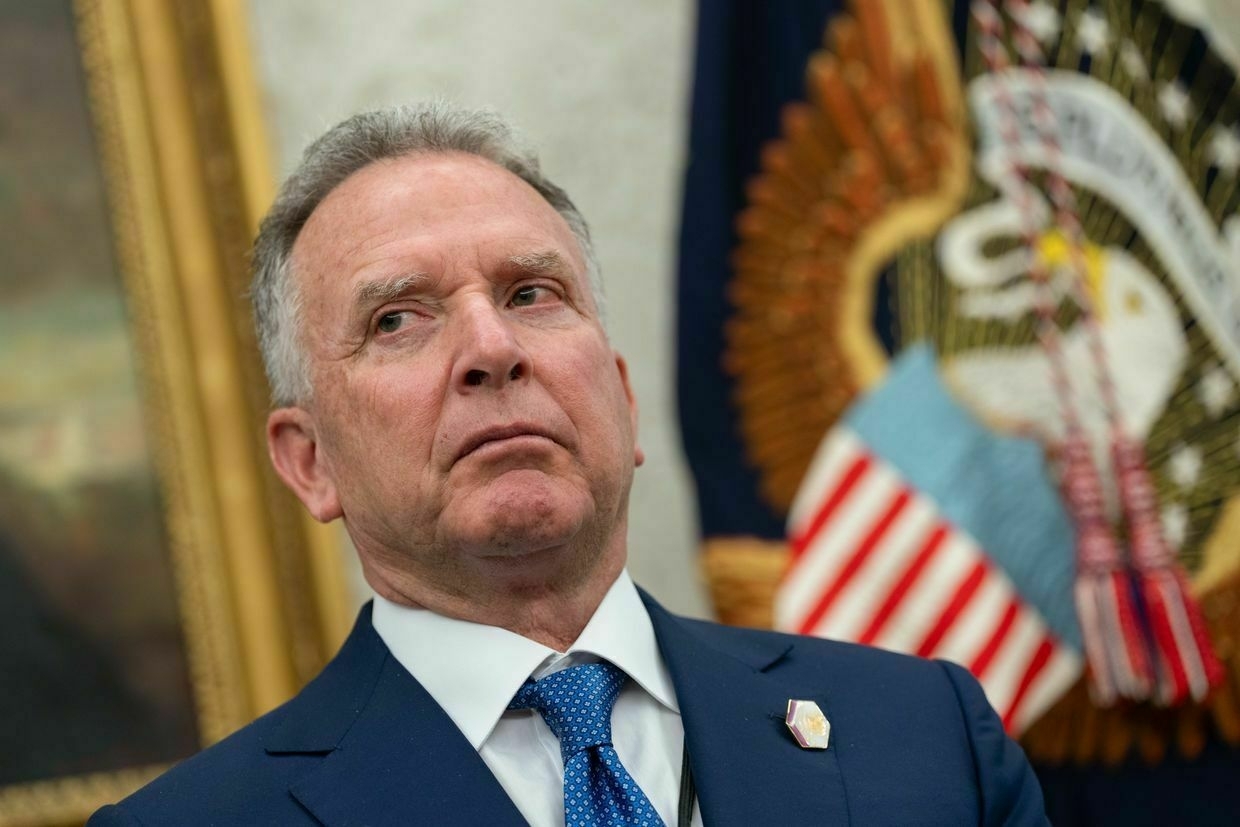
-
EU to unveil delayed Russian energy phase-out plan by May 6
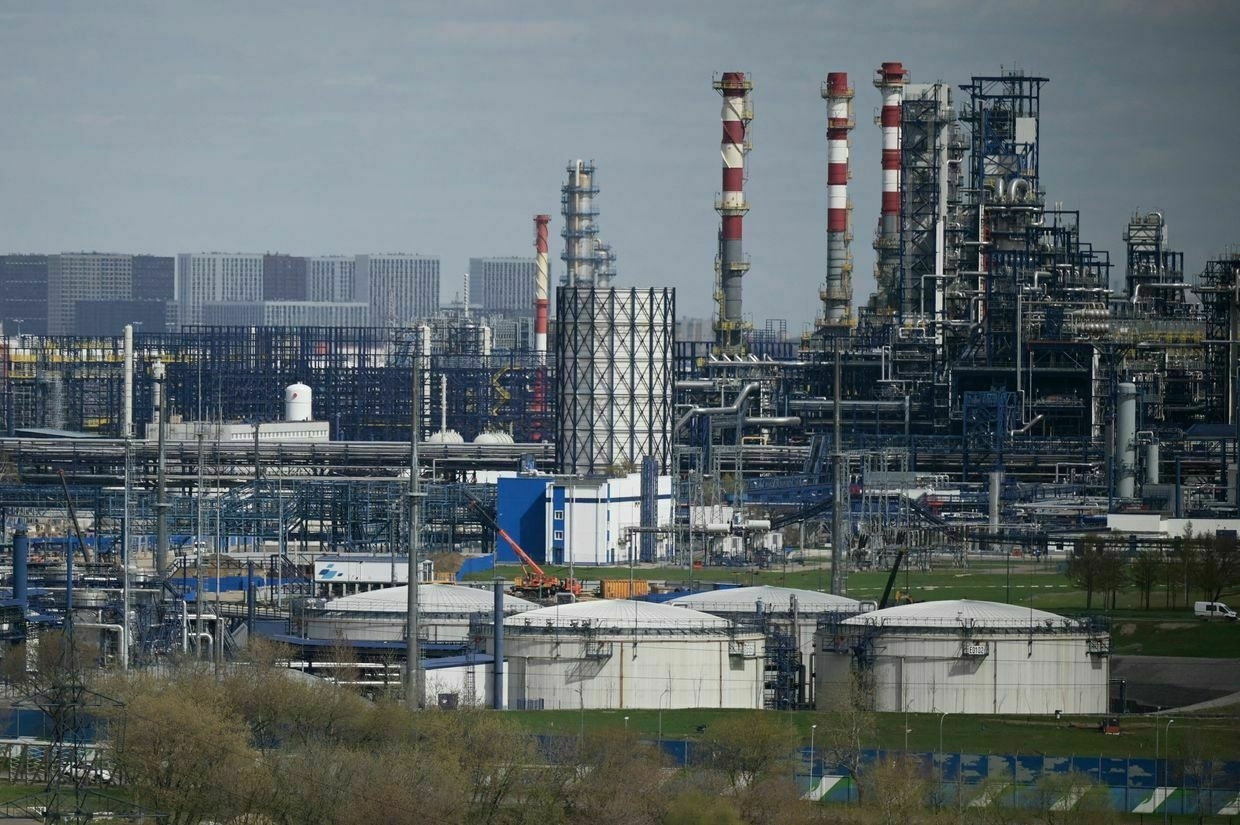
The European Commission will present by May 6 a long-awaited roadmap detailing how the EU will phase out Russian fossil fuel imports, Reuters reported on April 14.
The strategy, originally scheduled for release last month, was postponed amid growing uncertainty over U.S. President Donald Trump’s new tariff policies, which could affect energy trade and strain transatlantic negotiations.
The European Union committed in 2022 to ending Russian fossil fuel imports by 2027 in response to Moscow’s full-scale invasion of Ukraine.
Despite cutting pipeline gas deliveries from Russia, the bloc continues to rely on Russian liquefied natural gas (LNG), which made up 19% of total EU gas and LNG supplies in 2024.
Unlike crude oil and coal, Russian gas remains unsanctioned due to internal EU divisions and energy supply concerns.
Hungary has vowed to veto any additional sanctions on Russian energy, which require unanimous approval by all 27 EU member states. Other governments have expressed reservations about banning Russian LNG before securing stable alternatives.
The full halt of Russian pipeline gas deliveries to the EU followed Ukraine’s decision not to renew its transit agreement with Russian energy giant Gazprom past Dec. 31, 2024 — effectively cutting off a major route into Europe.
The U.S. initially stepped in to supply LNG to Europe after the war began, but the Trump administration’s trade policies and rising transatlantic tensions have prompted EU member states to seek broader diversification, wary of over-reliance on Washington.
Witkoff says ‘5 territories’ key to proposed Russia-Ukraine deal after meeting PutinSome U.S. officials have raised alarms over the direction of the Trump administration’s diplomacy. The Wall Street Journal reported that Secretary of State Marco Rubio and Special Envoy for Ukraine Keith Kellogg are urging President Donald Trump to resist territorial concessions to Moscow.The Kyiv IndependentTim Zadorozhnyy
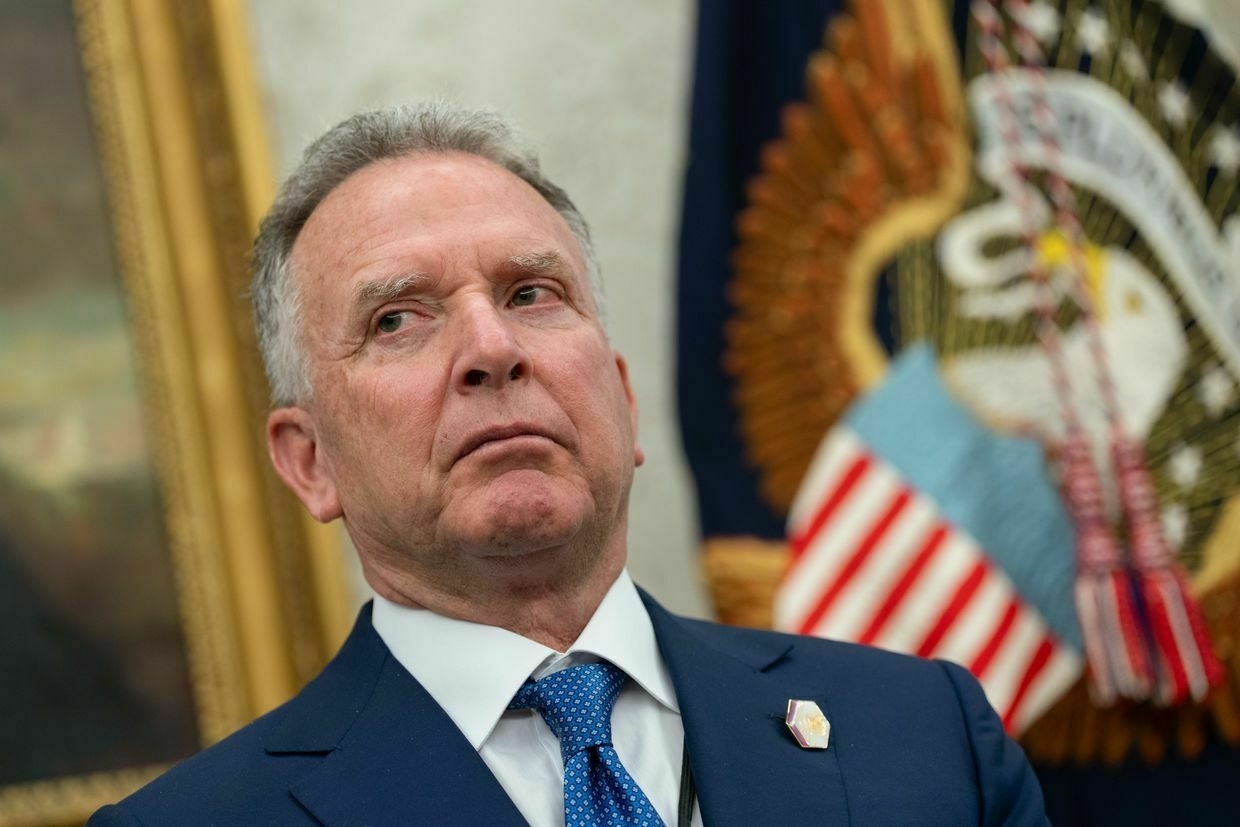
-
Vance accuses Zelensky of 'absurd' criticism of siding with Russia
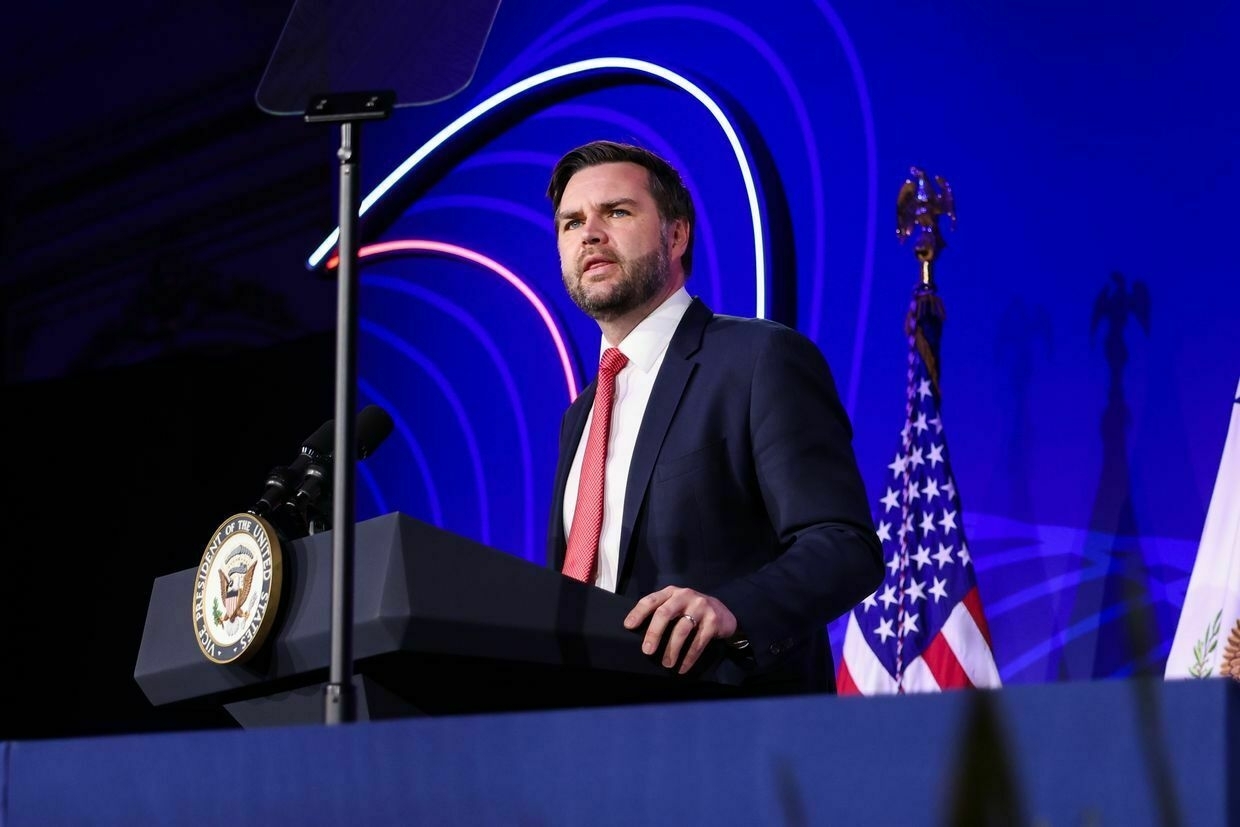
U.S. Vice President JD Vance on April 15 pushed back against criticism from President Volodymyr Zelensky, saying it was “absurd” to accuse Washington of siding with Russia, Reuters reported.
“I think it’s sort of absurd for Zelensky to tell the (American) government, which is currently keeping his entire government and war effort together, that we are somehow on the side of the Russians,” Vance said.
The remarks followed an interview with CBS News, in which Zelensky condemned Vance for echoing Kremlin rhetoric and accused the U.S. vice president of trying to justify Russia’s invasion of Ukraine.
“It’s a shift in tone, a shift in reality… and I don’t want to engage in the altered reality that is being presented to me,” Zelensky said, referencing the Feb. 28 Oval Office meeting where tensions between the two leaders spilled into public view.
During that meeting, Zelensky challenged Vance to visit Ukraine and witness firsthand the destruction caused by Russia’s full-scale invasion. Vance declined, claiming the Ukrainian government orchestrates “propaganda tours” to shape Western narratives about the war.
Vance, a leading voice in the Trump administration’s “America First” foreign policy, has long opposed U.S. military aid to Ukraine. He has argued that such support burdens American taxpayers and distracts from domestic priorities.
Since Russia launched its full-scale invasion in 2022, Vance has drawn criticism for downplaying the war’s significance and repeating Kremlin-aligned talking points.
Shortly after the invasion began, he said he “doesn’t care about Ukraine,” a statement he has since defended on the grounds of prioritizing U.S. interests.
“That doesn’t mean you morally support the Russian cause, or that you support the full-scale invasion,” Vance said.
“But you do have to try to understand what are their strategic red lines, in the same way that you have to try to understand what the Ukrainians are trying to get out of the conflict."
Zelensky has repeatedly warned that Moscow’s goal is not negotiation but conquest, and that Ukraine’s survival depends on the West continuing to provide military, financial, and political support.
Witkoff says ‘5 territories’ key to proposed Russia-Ukraine deal after meeting PutinSome U.S. officials have raised alarms over the direction of the Trump administration’s diplomacy. The Wall Street Journal reported that Secretary of State Marco Rubio and Special Envoy for Ukraine Keith Kellogg are urging President Donald Trump to resist territorial concessions to Moscow.The Kyiv IndependentTim Zadorozhnyy
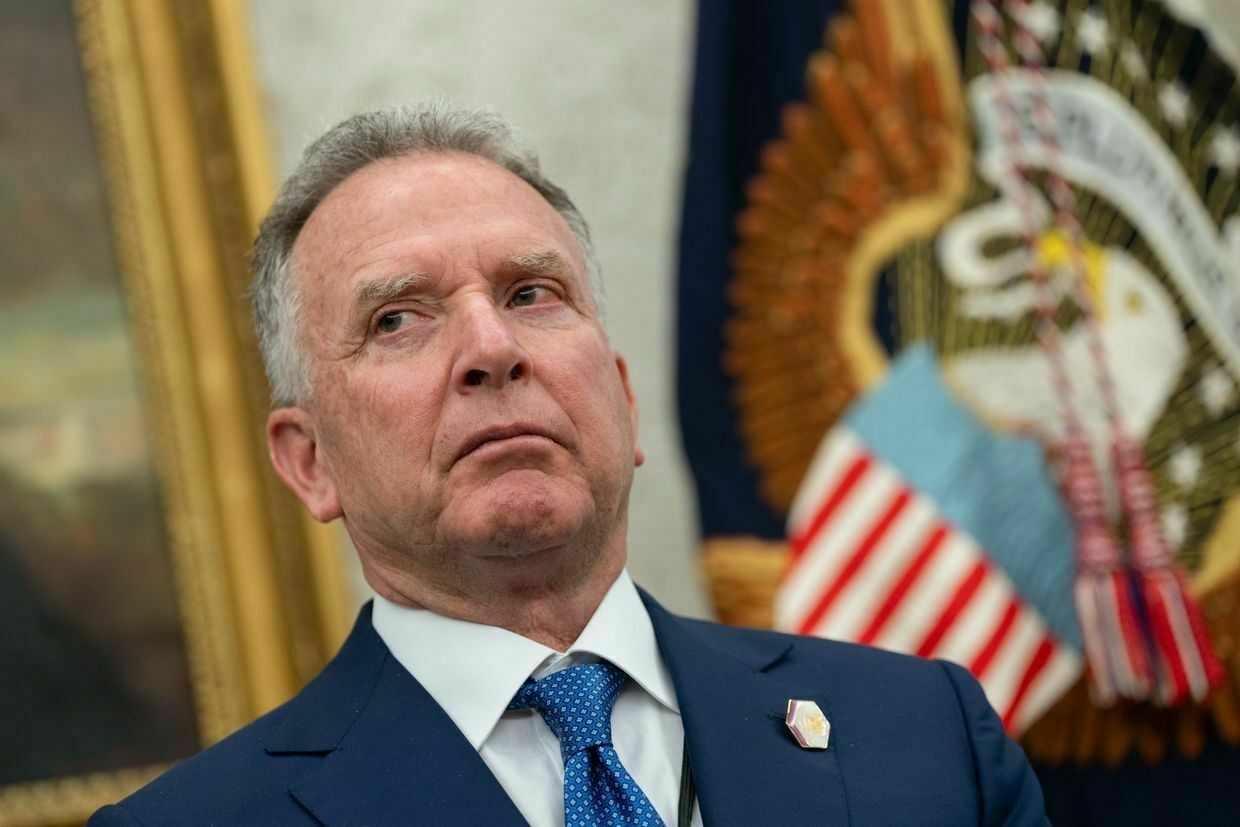
-
Witkoff says '5 territories' key to proposed Russia-Ukraine deal after meeting Putin
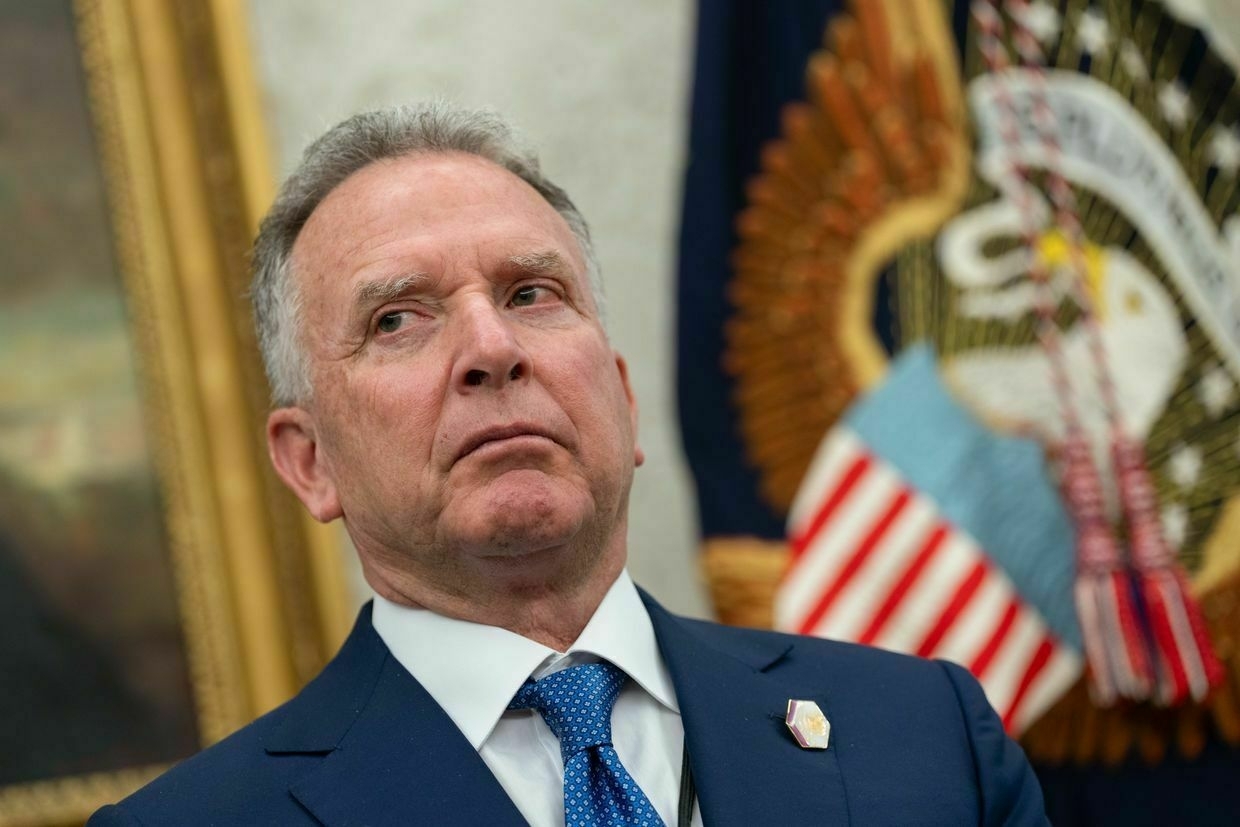
U.S. Special Envoy Steve Witkoff said on April 14 that his recent talks with Russian President Vladimir Putin were “compelling” and centered around a possible peace deal based on the status of “five territories."
Witkoff, who met with Putin in St. Petersburg on April 11, described the meeting as productive, claiming the Russian president expressed a desire for “a permanent peace,” though it “took a while for us to get to” that point.
“This peace deal is about these so-called five territories,” Witkoff said in comments for Fox News. “But there’s so much more to it. I think we might be on the verge of something that would be very important for the world at large."
Though Witkoff did not name the territories directly, he appeared to refer to Crimea, illegally annexed by Russia in 2014, and the partially occupied Donetsk, Luhansk, Zaporizhzhia, and Kherson oblasts. Moscow declared the annexation of the latter four regions in 2022.
The envoy also hinted at a broader strategic ambition tied to business incentives. “I see a possibility to reshape the Russian-United States relationship through some very compelling commercial opportunities,” Witkoff said. “That gives real stability to the region too."
Some U.S. officials have raised alarms over the direction of the Trump administration's diplomacy. The Wall Street Journal reported that Secretary of State Marco Rubio and Special Envoy for Ukraine Keith Kellogg are urging President Donald Trump to resist territorial concessions to Moscow.
According to Reuters, Witkoff told Trump that recognizing Russian control over the four partially occupied regions would be the quickest way to secure a ceasefire. This approach mirrors Kremlin demands and has sparked concern among Kyiv's allies.
Despite ceasefire efforts, Russia continues to reject the full 30-day ceasefire proposal backed by the United States and supported by Ukraine. A partial truce covering energy infrastructure has repeatedly been violated by Russian forces.
Witkoff, who has visited Russia several times this year and serves as Trump's top negotiator, has drawn criticism for adopting Kremlin talking points, particularly regarding the nature of Russia's occupation and the prospects of trading territory for peace.
Since returning to office in January, the Trump administration has resumed direct talks with the Kremlin and signaled a diminished commitment to Ukraine's defense, even as Russia intensifies attacks on civilian areas.
Zelensky’s ‘always looking to purchase missiles’ — Trump dismisses Ukraine’s request to buy Patriots“You don’t start a war against someone 20 times your size and then hope that people give you some missiles,” U.S. President Donald Trump said.The Kyiv IndependentTim Zadorozhnyy
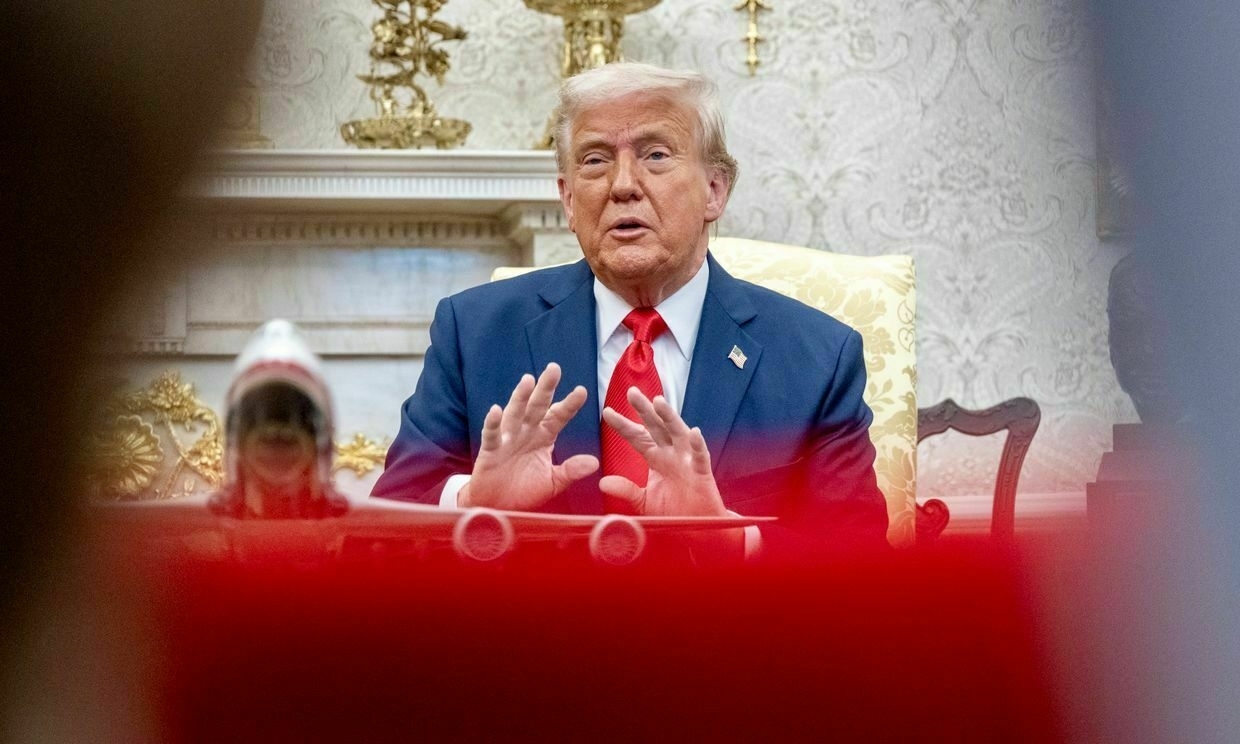
-
White House reportedly seeks to defund NATO, UN in State Department cuts
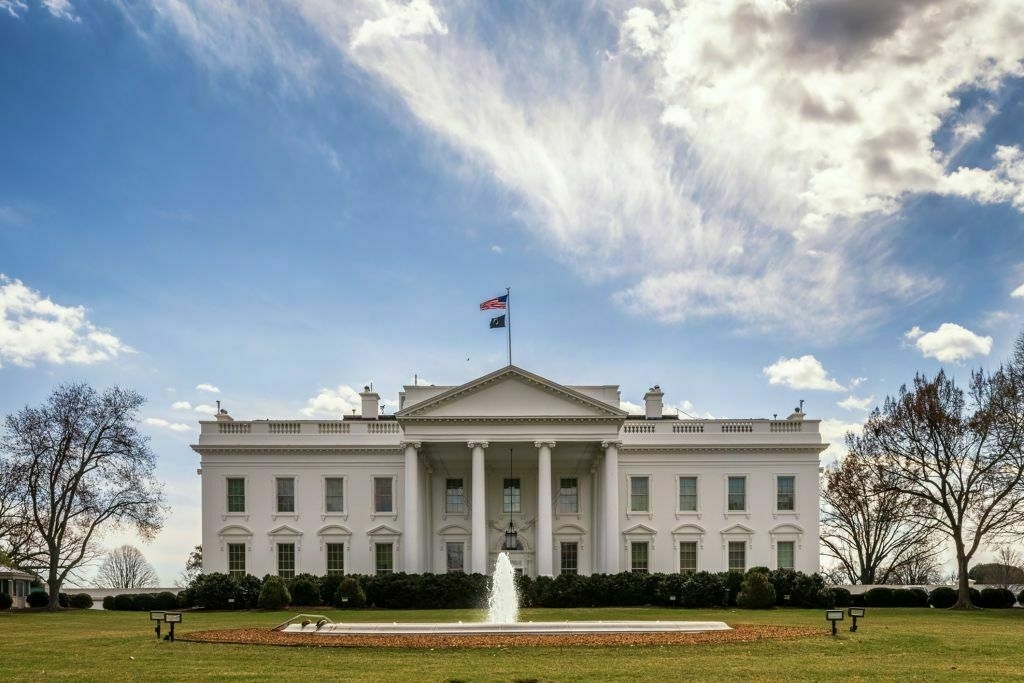
U.S. President Donald Trump’s White House is proposing dramatic cuts to the U.S. State Department’s budget, including halting nearly all funding to NATO, the U.N., and over 20 other international organizations, the Washington Post reported on April 14, citing an internal draft document.
The proposed cuts for the next fiscal year would reportedly leave $28.4 billion for all State Department activities, a 48% reduction from the 2025 budget approved by Congress.
The plan would preserve only minimal support for a handful of agencies, such as the International Atomic Energy Agency and the International Civil Aviation Organization.
According to Politico, funding for “contributions to international organizations,” presumably including U.N. institutions, would be slashed from $1.5 billion to $169 million.
Although the proposal would require congressional approval, the cuts align with broader White House efforts to slash federal spending.
On March 10, the Trump administration announced the termination of 83% of the foreign aid contracts of the U.S. Agency for International Development (USAID).
The cuts have broad implications for humanitarian efforts, particularly in Ukraine, where USAID has provided $2.6 billion in humanitarian aid, $5 billion in development assistance, and over $30 billion in direct budget support since Russia’s full-scale invasion began.
Trump has long expressed hostility toward NATO, repeatedly accusing European allies of underfunding the alliance and threatening to allow Russia to attack non-compliant members.
The proposal to eliminate NATO funding appears to escalate that stance into formal policy.
Before being appointed under Trump, Secretary of State Marco Rubio had consistently defended NATO. In 2023, Rubio co-sponsored bipartisan legislation requiring congressional approval before any president could unilaterally withdraw the U.S. from the alliance.
Some members of Trump’s circle, including billionaire and advisor Elon Musk, called for the U.S. to exit NATO, and the U.S. is broadly expected to withdraw some troops from the alliance’s eastern flank.
As Europe faces growing Russian aggression and war rages in Ukraine, the proposed withdrawal of U.S. support for NATO and the U.N. could drastically reshape the West’s security architecture and strain Washington’s credibility as a global leader.
Zelensky’s ‘always looking to purchase missiles’ — Trump dismisses Ukraine’s request to buy Patriots“You don’t start a war against someone 20 times your size and then hope that people give you some missiles,” U.S. President Donald Trump said.The Kyiv IndependentTim Zadorozhnyy
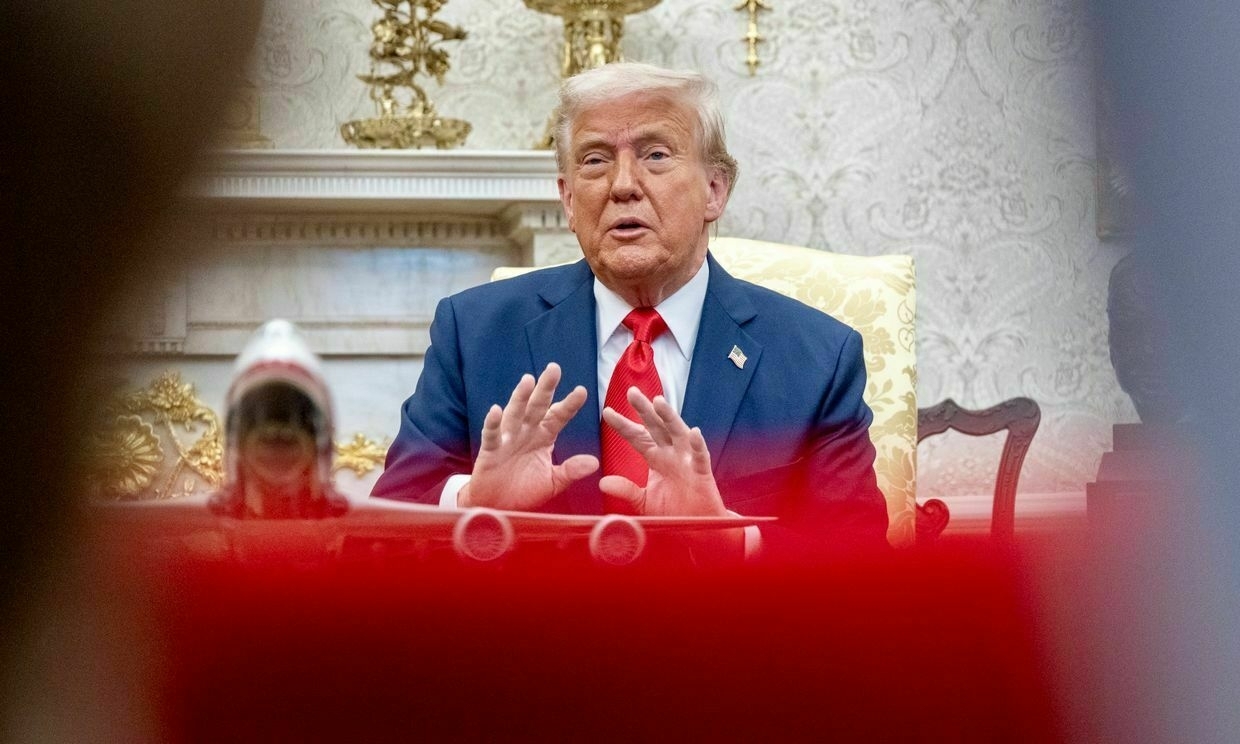
-
Zelensky's 'always looking to purchase missiles' — Trump dismisses Ukraine's request to buy Patriots
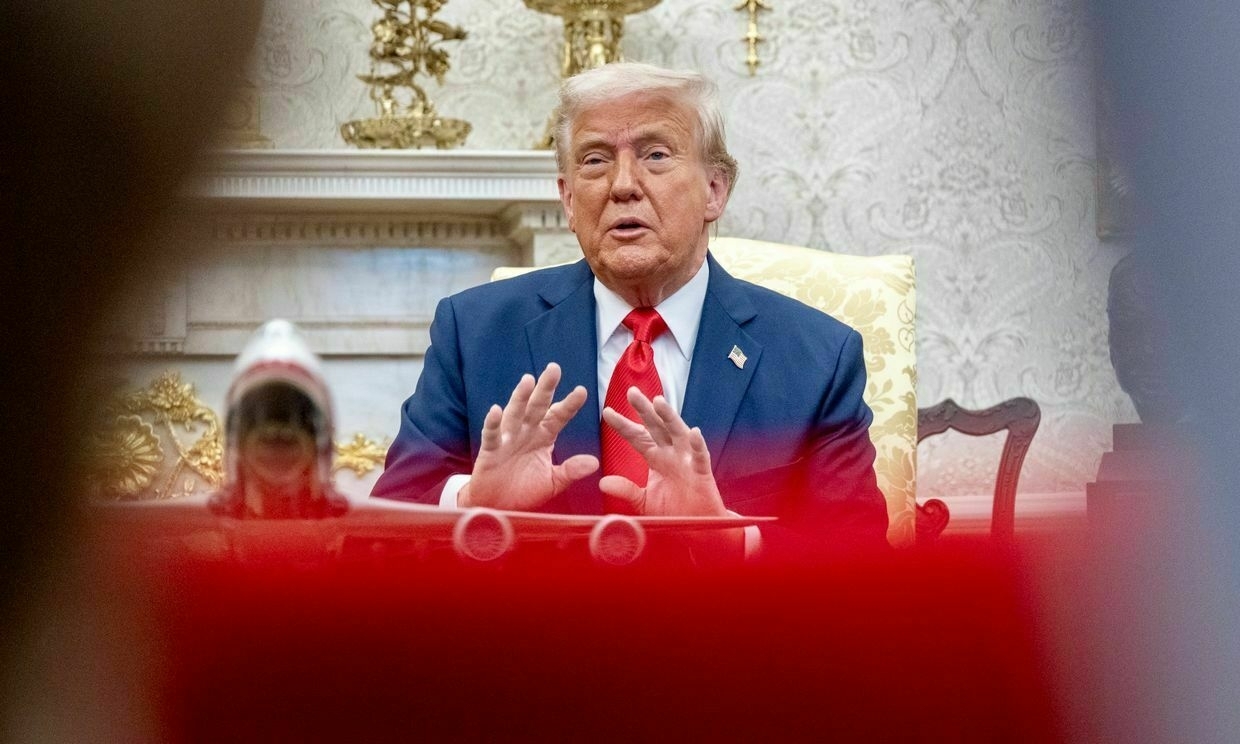
U.S. President Donald Trump on April 14 dismissed President Volodymyr Zelensky’s request to buy Patriot air defense systems, accusing him of “always looking to purchase missiles” while falsely blaming Kyiv for instigating the war with Russia.
“You don’t start a war against someone 20 times your size and then hope that people give you some missiles,” Trump said during a White House meeting.
The comments followed Zelensky’s interview with CBS News, in which he offered to buy 10 U.S.-made Patriot systems — worth $1.5 billion each — to shield Ukrainian cities from relentless Russian missile and drone strikes.
“We will find the money and pay for everything,” Zelensky said, stressing that Ukraine is prepared to purchase, not request for free, the $15 billion package.
Kyiv has consistently urged Western allies to expand air defense assistance, warning that existing systems are insufficient amid Russia’s intensifying aerial campaign, which most recently killed 35 civilians in Sumy on April 13.
Trump has not allocated any new aid packages for Ukraine and even briefly paused military assistance approved by the Biden administration last month to pressure Kyiv into accepting a minerals deal.
The U.S. president also expressed doubt about Zelensky’s leadership and falsely claimed that the war was caused by the Ukrainian president.
“Millions of people dead because of three people,” Trump said, naming Russian President Vladimir Putin, former U.S. President Joe Biden, and Zelensky.
Trump’s claim directly contradicts the facts. Russia launched its unprovoked, full-scale invasion of Ukraine on Feb. 24, 2022, while Zelensky had repeatedly called for de-escalation prior to the invasion.
‘Everything we heard from Russians was a lie’ — Chinese fighters captured by Ukraine speak outThe two Chinese nationals captured when fighting for Russia claimed they weren’t sent to the war by the Chinese government, and described their hardships in the Russian ranks. One of the captives, Wang Guangjun, said he was targeted by Russian “chemical weapons” right after he was taken captive byThe Kyiv IndependentKateryna Denisova
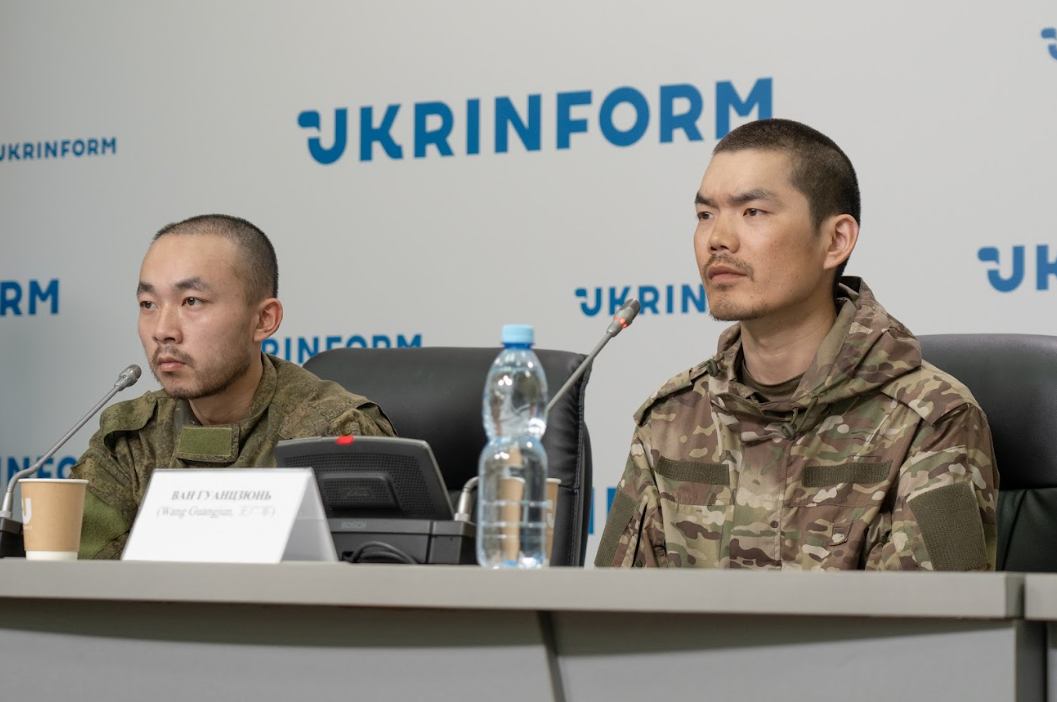
Trump earlier described Russia’s deadly attack on Sumy — which struck a crowded civilian area with cluster munitions, killing two children — as “terrible,” but suggested it was carried out by “mistake.”
The U.S. president did not clarify the basis for his claim.
Ukraine agreed to a U.S.-proposed 30-day ceasefire on March 11, but Moscow rejected the proposal unless it included severe restrictions on Ukraine’s military, including halting foreign aid.
Russia has continued to issue maximalist demands while escalating strikes on Ukrainian cities.
Trump, who has sought to broker a ceasefire between Kyiv and Moscow, said on April 7 he was “not happy” with Russia’s intensified bombardments across Ukraine.
NBC News reported on March 30 that Trump was “pissed off” at Putin’s personal animosity toward Zelensky, while the Telegraph wrote on March 23 that he was increasingly angry over Russia’s refusal to de-escalate the war.
Despite expressing frustration, Trump has so far avoided imposing any major sanctions or taking punitive action against Moscow.
‘Panic, screams, dead everywhere’ — Sumy in shock after double-tap missile attack kills 35Valeriia Maksimova and her husband woke up to the first explosion in central Sumy at around 10 a.m. Their house was damaged by the blast wave. The 38-year-old rushed to the kitchen to start clearing the rubble when the second explosion struck, throwing her three meters away intoThe Kyiv IndependentAsami Terajima
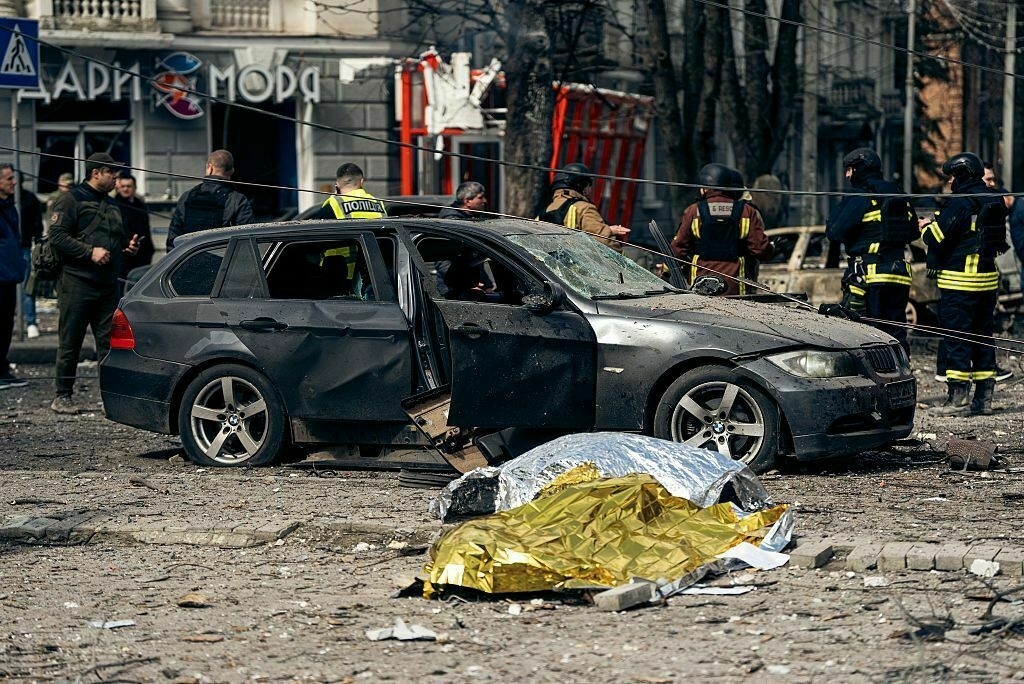
-
Europe's overall Ukraine aid outpaces US by $26 billion, report says
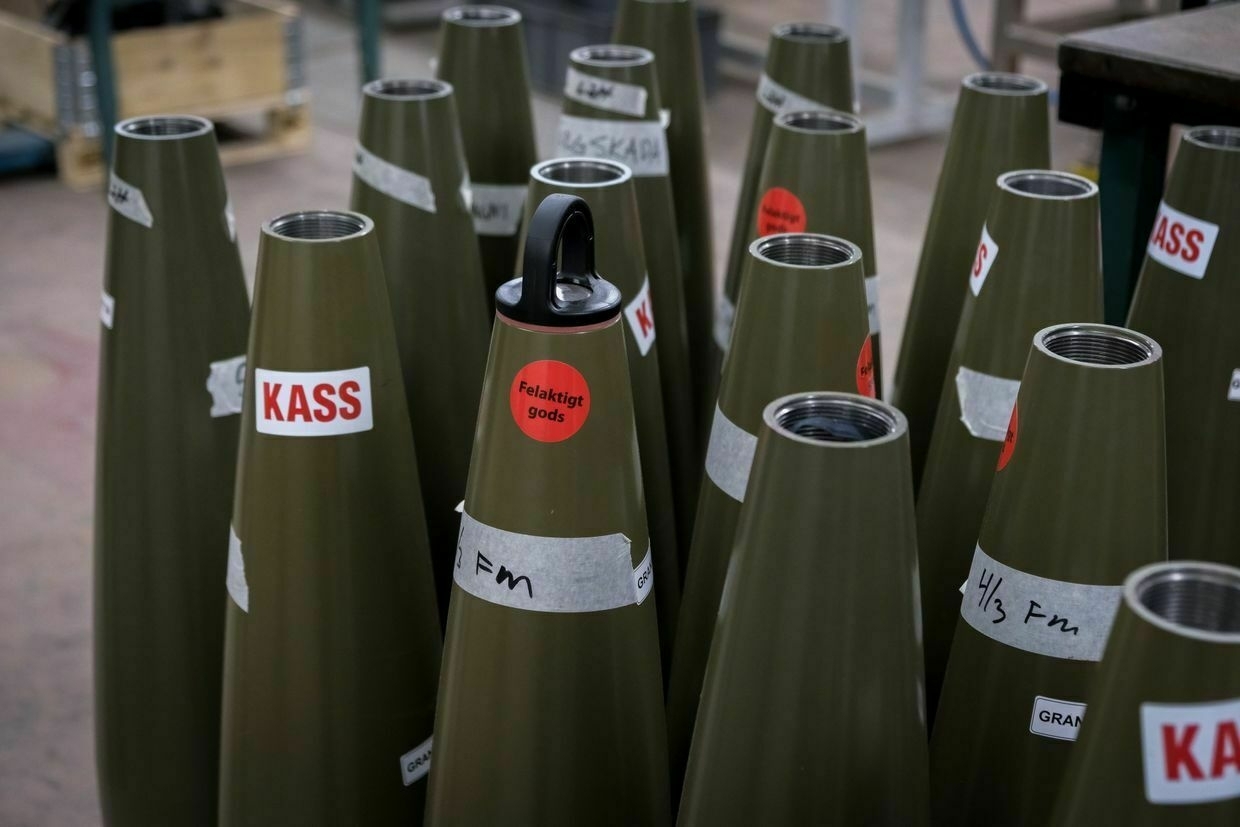
Total assistance allocated by Europe to Ukraine since 2022 stands at 138 billion euros ($157 billion), 23 billion euros ($26 billion) more than the U.S., according to an April 15 report by the Kiel Institute for the World Economy’s Ukraine Aid Tracker.
The U.S. still holds an edge in terms of military aid — its 65 billion euros ($74 billion) total leads Europe by 1 billion euros ($1.1 billion) — but the gap is narrowing, as Washington has not allocated a new aid package since Jan. 9, still under the Biden administration.
U.S. President Donald Trump has yet to provide fresh aid for Ukraine as he seeks to broker a ceasefire and restore ties with Moscow.
The U.S. president partially justified his reluctance to provide new aid by claiming that Europe has donated considerably less assistance to Ukraine while putting the U.S. aid at $350 billion, claims refuted by the Kiel Institute’s report.
In March, the new administration even briefly paused all military and intelligence assistance previously approved by Biden to pressure Kyiv into accepting a mineral resources deal.
As a result, U.S. assistance to Ukraine has stalled since Trump took office, while Europe has steadily maintained its support. Ukraine previously experienced such a long gap in new U.S. aid allocations in early 2024 when a Trump-aligned wing of the Republican Party blocked the assistance in Congress.
Researchers highlighted several recent European aid packages, including Sweden’s largest assistance tranche to date worth $1.6 billion and new support from Germany, the U.K., Norway, and Denmark.
Speaking at the 27th Ramstein-summit format on April 11, U.K. Defense Secretary John Healey announced that the allies — not including the U.S. — had committed more than 21 billion euros ($23.8 billion) in new security assistance to Kyiv.
Ukraine has ramped up calls for new aid, particularly air defense, as Russia continues in its unrelenting attacks against Ukrainian cities and rejects a temporary truce backed by Kyiv and Washington in March.
“The recent pause in U.S. aid raises the pressure on European governments to do more, both in financial and military assistance,” Taro Nishikawa, project lead of the Ukraine Support Tracker at the Kiel Institute, said in a statement.
Researchers also highlighted the disparity between various European countries. Some of the larger Western economies, such as France, Italy, or Spain, have allocated notably smaller portions of their GDP than the Nordics and the Baltics, the report shows.
Ukraine war latest: Ukraine developing strategic-level air defense system; Russia intensifies assaults against Kharkiv OblastKey developments on April 14: * Ukraine developing strategic-level air defense system, foreign minister says * Russia tries to land troops, break through Ukrainian defenses near Vovchansk in Kharkiv Oblast, military says * Death toll in Russian April 13 missile strike on Sumy rises to 35 * EU s…The Kyiv IndependentThe Kyiv Independent news desk
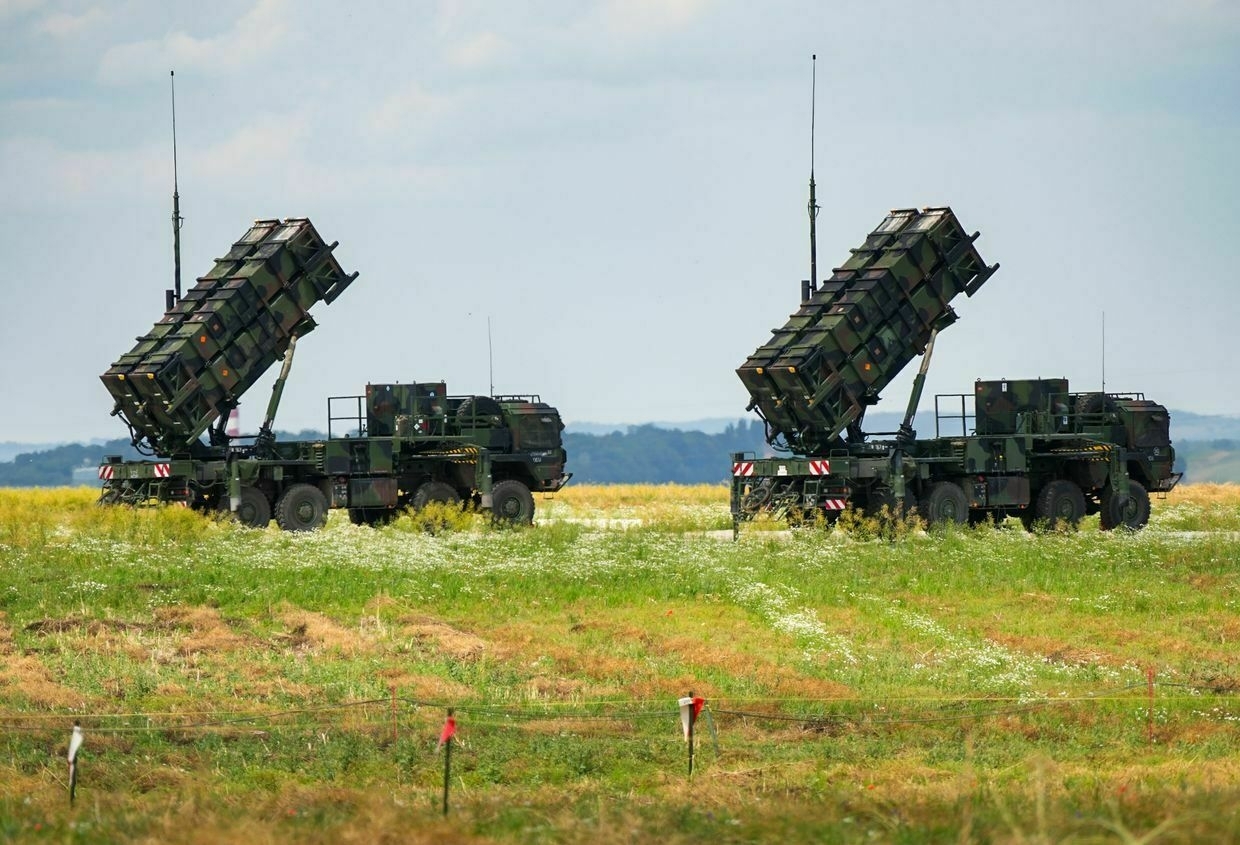
-
US lawmakers push new aid for Ukraine, tougher sanctions on Russia, Reuters reports
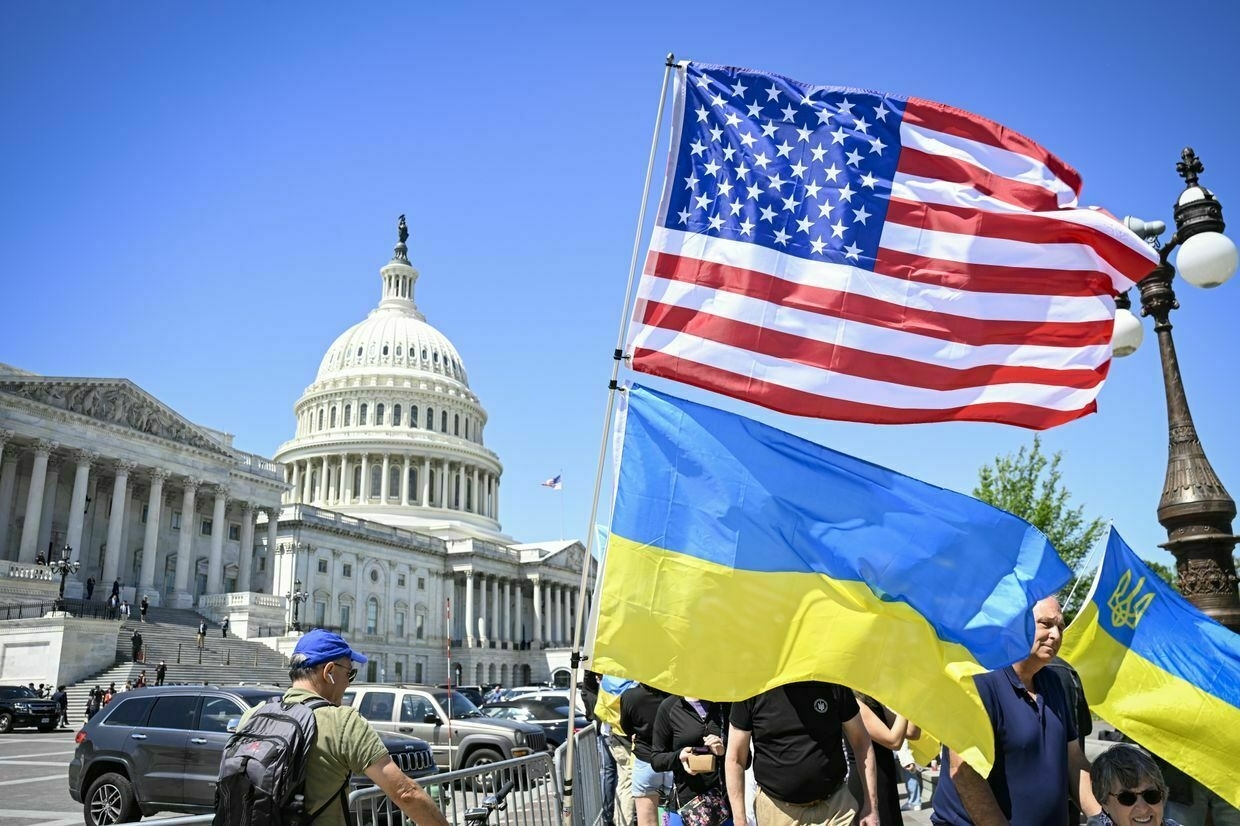
Democrats in the U.S. House of Representatives introduced new legislation on April 15 to boost support for Ukraine in its war with Russia, in what sources familiar with the effort told Reuters was another attempt to press the Trump administration for stronger backing of Kyiv.
Representative Greg Meeks, the top Democrat on the House Foreign Affairs Committee, filed the Ukraine Support Act, which would provide funding for Ukraine’s security and reconstruction efforts and impose sweeping sanctions on Russia.
According to a copy of the bill seen by the news agency, the legislation lays out significant financial and diplomatic measures to counter Russia’s aggression.
The bill has not yet been made public but comes just two weeks after Senate Republicans and Democrats introduced a separate package that would sanction Russia if it refuses to engage in good-faith peace negotiations with Ukraine.
Congressional aides involved in drafting the House bill said they hope the measure will influence the final Ukraine-related legislation that emerges from Congress. “This bill obviously will be part of the legislative conversation,” one aide said.
Lawmakers’ push to advance Ukraine support legislation gained renewed urgency after Russia launched a missile strike on Sumy on April 14, killing 35 people and injuring 117 during Palm Sunday services.
Moscow claimed it targeted Ukrainian military leadership. The attack resulted in dozens of civilian casualties.
The House bill includes three main sections: support for Ukraine and NATO, including the creation of a special coordinator for Ukraine’s reconstruction; provisions for security assistance such as direct loans and military financing; and harsh sanctions on Russia targeting its financial sector, energy and mining industries, and key officials.
Trump, meanwhile, has continued to blame both his predecessor and President Volodymyr Zelensky for “allowing this travesty to begin.”
“The War between Russia and Ukraine is Biden’s war, not mine. I just got here, and for four years during my term, had no problem in preventing it from happening,” Trump posted on Truth Social.
Ukraine war latest: Ukraine developing strategic-level air defense system; Russia intensifies assaults against Kharkiv OblastKey developments on April 14: * Ukraine developing strategic-level air defense system, foreign minister says * Russia tries to land troops, break through Ukrainian defenses near Vovchansk in Kharkiv Oblast, military says * Death toll in Russian April 13 missile strike on Sumy rises to 35 * EU s…The Kyiv IndependentThe Kyiv Independent news desk
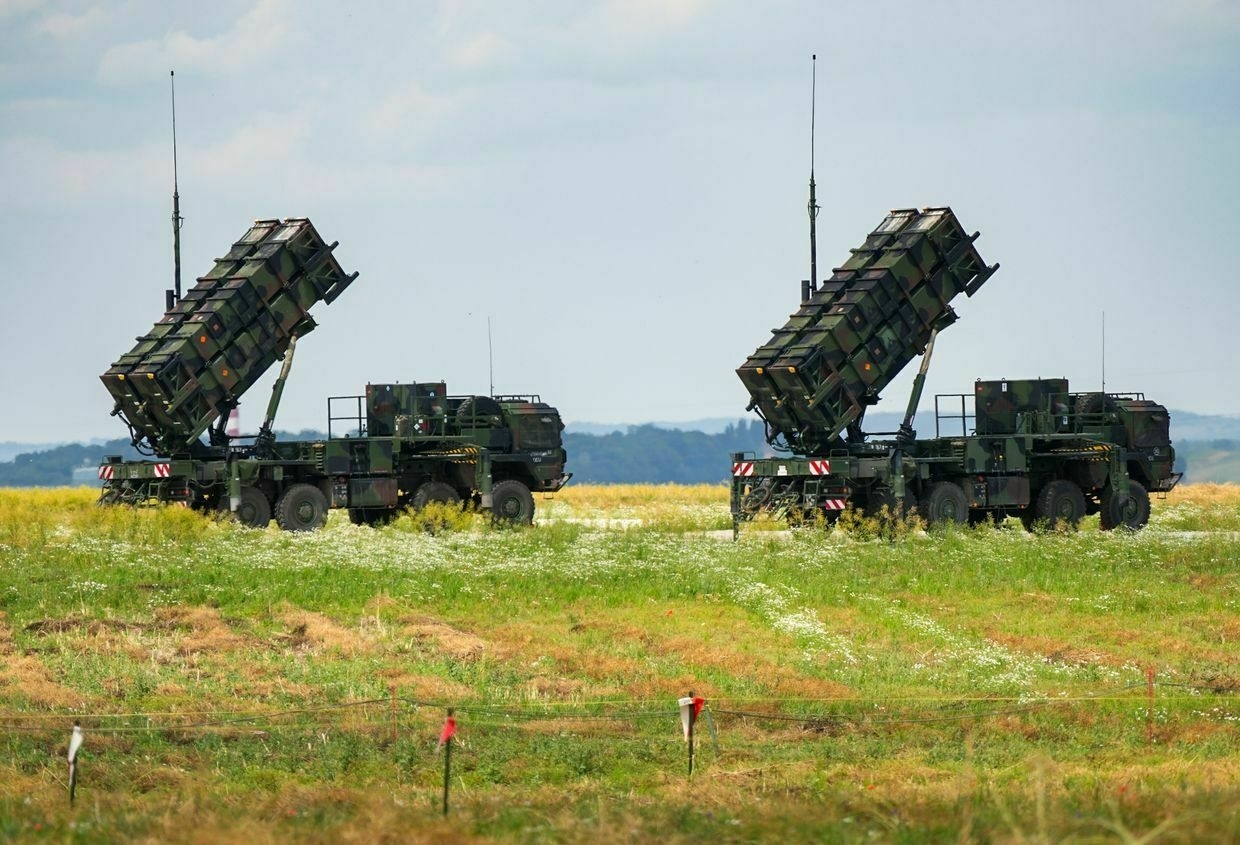
-
All the president's men: Inside the closed world of Putin's key advisors
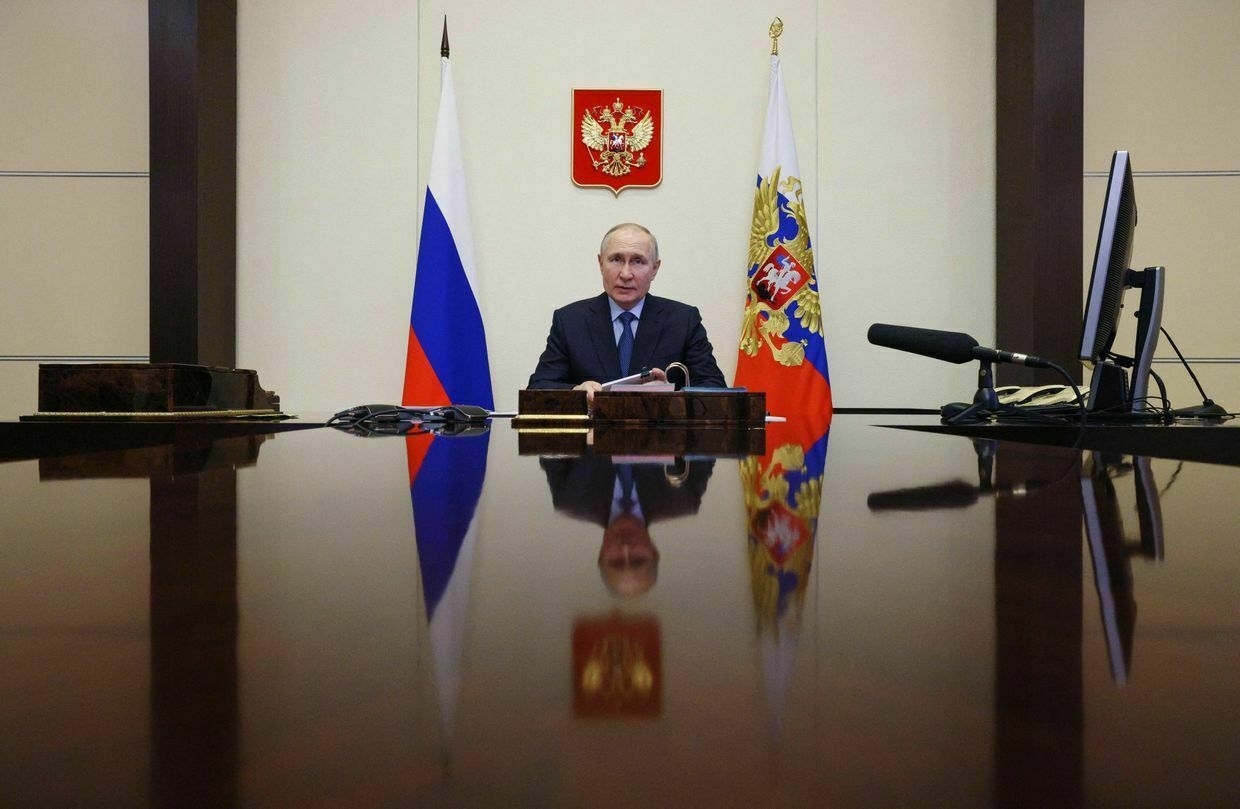
In Russian politics, all eyes are focused on one man: Russian President Vladimir Putin. But as ceasefire talks continue, the world’s attention has also been drawn to those sent forward to do the Kremlin’s bidding — whether at the negotiating table in Saudi Arabia or in the backrooms of Washington D.C.
Foreign Minister Sergey Lavrov and former Russian Ambassador to the U.S. Yuri Ushankov, leading the talks in Saudi Arabia, are both savvy political operators who possess the Kremlin’s trust and confidence.
Meanwhile, Russia’s Direct Investment Fund CEO Kirill Dmitriev had little public spotlight prior to being catapulted to holding talks with U.S. President Donald Trump’s envoys in Washington.
All of these men have access to the Kremlin’s most exclusive power networks. These are groups based on personal relationships and proximity to Putin, bound with a tightly woven worldview. But that does not mean Putin’s court is peaceful or effective.
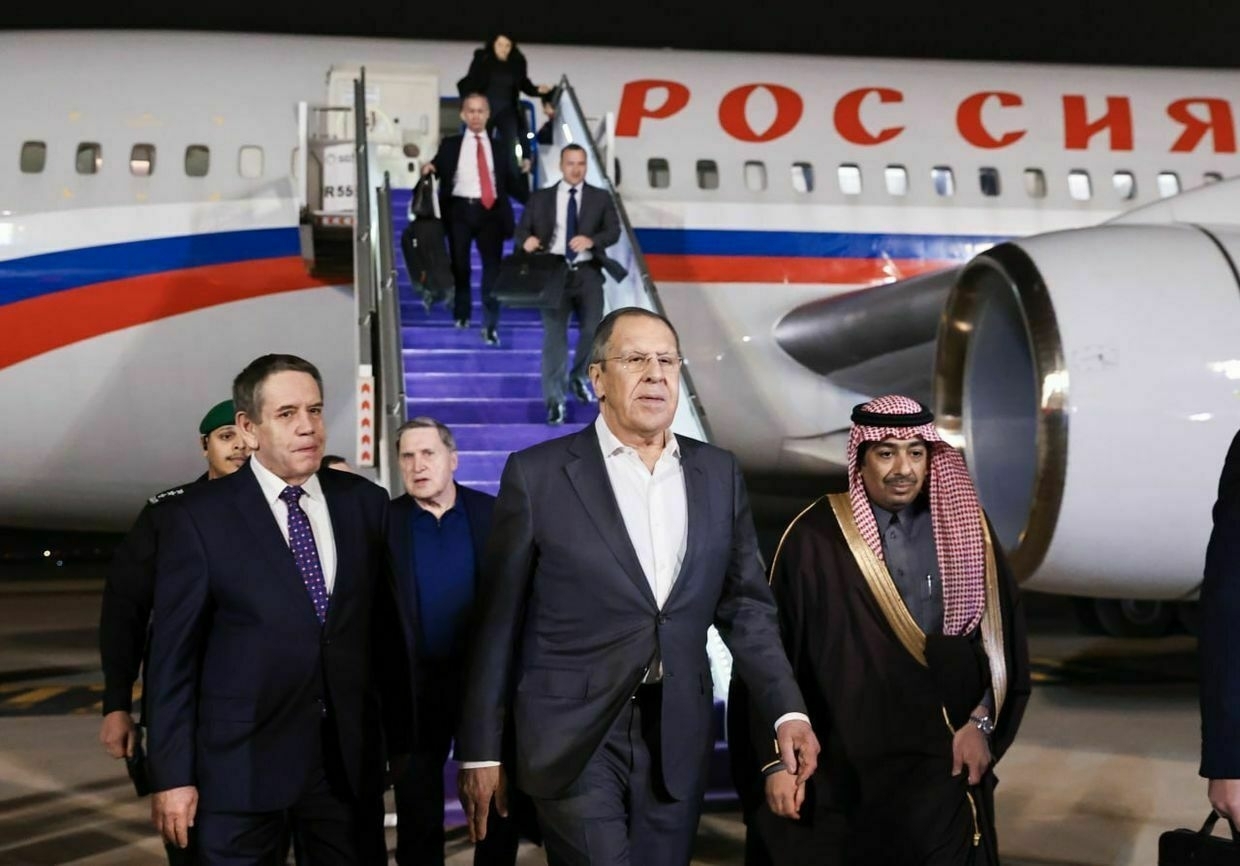
The Russian delegation, led by Foreign Minister Sergey Lavrov (front), arrives in Riyadh, Saudi Arabia, to meet with their American counterparts on Feb. 17, 2025. (Russian Foreign Ministry / Handout / Anadolu via Getty Images) Russian news outlet Agenstvo reported in early April that when Lavrov and Ushankov arrived in Saudi Arabia for talks on Feb. 18, they were surprised to see that they were not the only Russian negotiating team. Dmitriev and his team were also present and seen talking with other officials — although Dmitriev was ultimately not given a seat at the table.
While Russia’s elites are keen to mimic Putin’s ideology, they are ultimately forced to play a political guessing game and are prone to squabble among themselves. This Kremlin can exploit this — and should peace talks fail due to a lack of Russian commitment, there would be plenty of available scapegoats.
“If different sides dislike each other, they’ll constantly try to outdo one another, believing that they’ve read these signals of Putin. That gives Putin plausible deniability (if something goes wrong),” says Stephen Hall, assistant professor at the University of Bath.
“It’s divide and conquer."
Who is Kirill Dmitriev, Putin’s Trump-whispererKirill Dmitriev, head of Russia’s sovereign wealth fund, has become a key figure in the Kremlin’s outreach to the Trump administration. Russian President Vladimir Putin appointed the 49-year-old Kyiv native as special envoy for economic affairs in an attempt to interest Washington in joint economic…The Kyiv IndependentMartin Fornusek
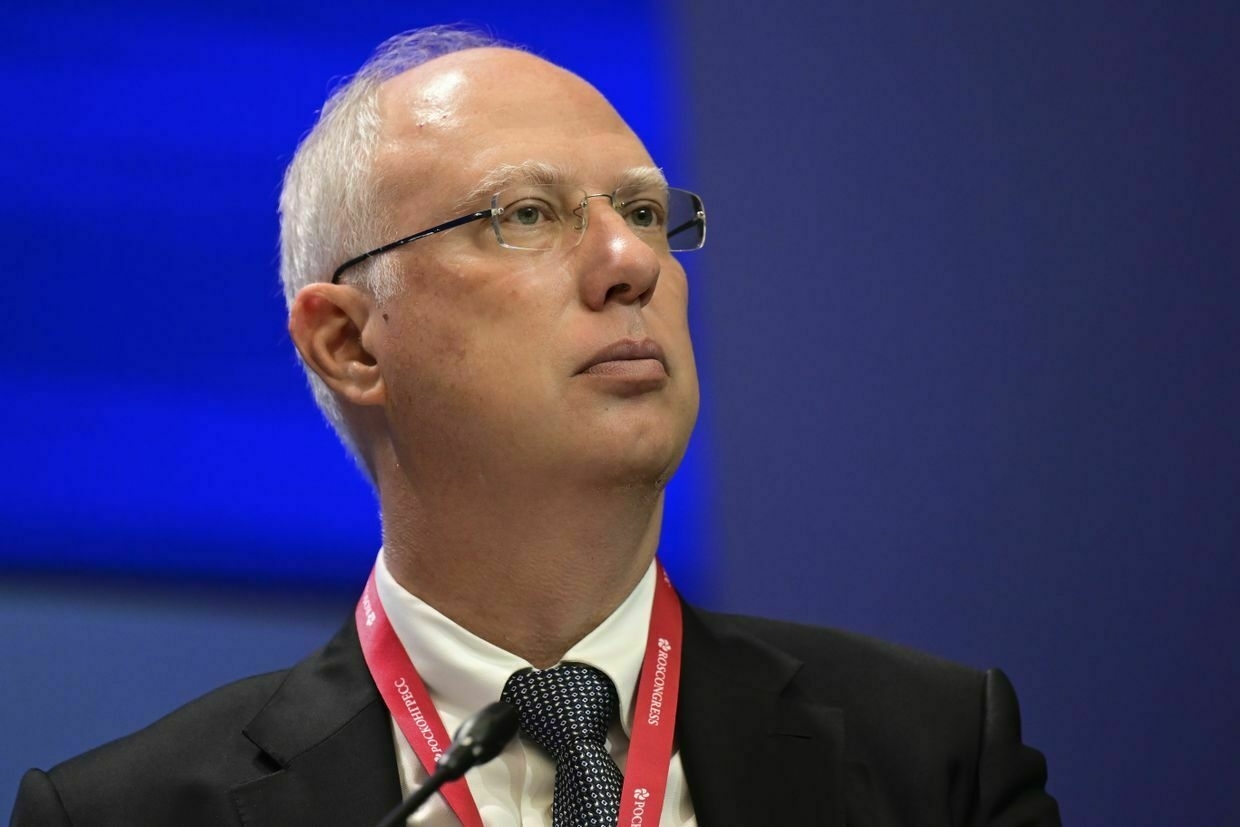
Different but the sameThe men surrounding Putin can be broadly split into several key groups. Most infamous are the so-called siloviki: men with a background in either the military or the state security services.
These include officials such as Alexander Bortnikov, director of Russia’s Federal Security Service (FSB), Sergey Naryshkin, the head of the country’s Foreign Intelligence Service, and Putin’s aide Nikolai Patrushev, who led the FSB prior to Bortnikov.
Most of those at the top have been close to Putin for a number of years and, in many cases, first met the president when he was still working for the Soviet Union’s state security service, the KGB.
“They’re concerned about securitization and see Russia as a besieged fortress,” says Mikhail Suslov, an associate professor at the University of Copenhagen. “I think this is something which sits so deeply in their mind that it becomes their second nature."
Then, there are the technocrats: men with a background in finance or business who are often more keen to maintain stability and the status quo. Prime Minister Mikhail Mishustin, best known for his under-the-radar presence and his long-term role managing Russia’s tax system, falls into this category.
“What they care about is a stable and straightforward international world order that provides them with the possibility to stay in power for as long as possible. They’re rational: they’re not religious, they’re not about security, they’re about doing business as usual,” says Suslov.
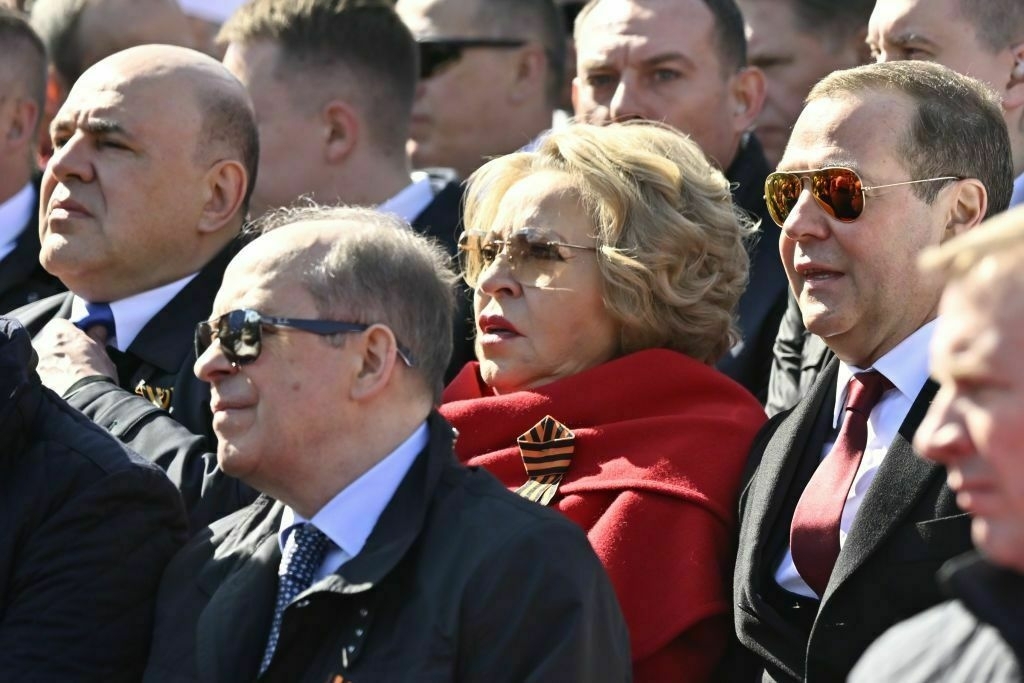
Russian Prime Minister Mikhail Mishustin, Deputy Chairman of the Security Council of Russia Dmitry Medvedev, Russian Federal Security Service (FSB) Director Alexander Bortnikov and Russian Federation Chair of the Federation Council Valentina Matviyenko attend ceremonial soldiers parade during 78th anniversary of the Victory Day in Red Square in Moscow, Russia on May 9, 2023. (Sefa Karacan/Anadolu Agency via Getty Images) But these distinctions only go so far. Putin’s inner circle is a uniform group. With the exception of a few figures such as Valentina Matviyenko, chairwoman of Russia’s Federation Council (Senate), and Central Bank Chief Elvira Nabiullina — neither of whom is considered a true insider — they are almost exclusively men, and most are close to the president in age.
More importantly, Putin’s inner circle adheres to a similar conservative, anti-Western worldview. Rather than simply rejecting or hating the West, they believe that the West has cheated Russia, says Suslov.
“That’s a feeling of injustice, the feeling that the West has treated Russia unfairly, that is absolutely common,” says Suslov. “To a very large extent, that drives their perception of the world and their decisions."
In this warped reality, Russia has the right to all post-Soviet republics, among them Ukraine, which is seen as a battleground between Russia and the West.
These views are a direct projection of Putin’s own speeches and writings, while Putin himself also cherry picks similar phrases and sentiments from the writings of those close to him."
Kremlin technocrats in particular are more likely to see that Russia needs more connection with the West and the world at large to fuel areas such as the country’s tech industry, says Hall.
But while men like Mishustin are more dove-like in their outlook, they don’t necessarily have the president’s ear. And in Moscow, ultimately, it is only proximity to the president that truly matters.
“In that close group, I think we’re seeing hawkish hawks and hawkish doves rather than any real doves right now,” says Hall.
A disappearing circleThe result is that the Russian president is surrounded by a small group of people who reflect his own life experiences and ideology — and are highly motivated not to challenge that worldview and lose the president’s favor.
"(People close to Putin) don’t want to give him information that doesn’t fit into his perception of reality. That seems to have been quite clear for quite a long time,” says Hall. “You don’t go to the tsar with bad news. You don’t tell him what he doesn’t want to hear."
This dynamic leaves Russia’s most powerful men trapped in a feedback loop. Putin is not a weak or nameless dictator who can be bent to the whims and opinions of his advisors. Neither is Putin’s inner circle incapable of forming opinions of their own: when they tell the Russian state press that Western powers are conspiring to bring Russia down, it is likely they believe it.
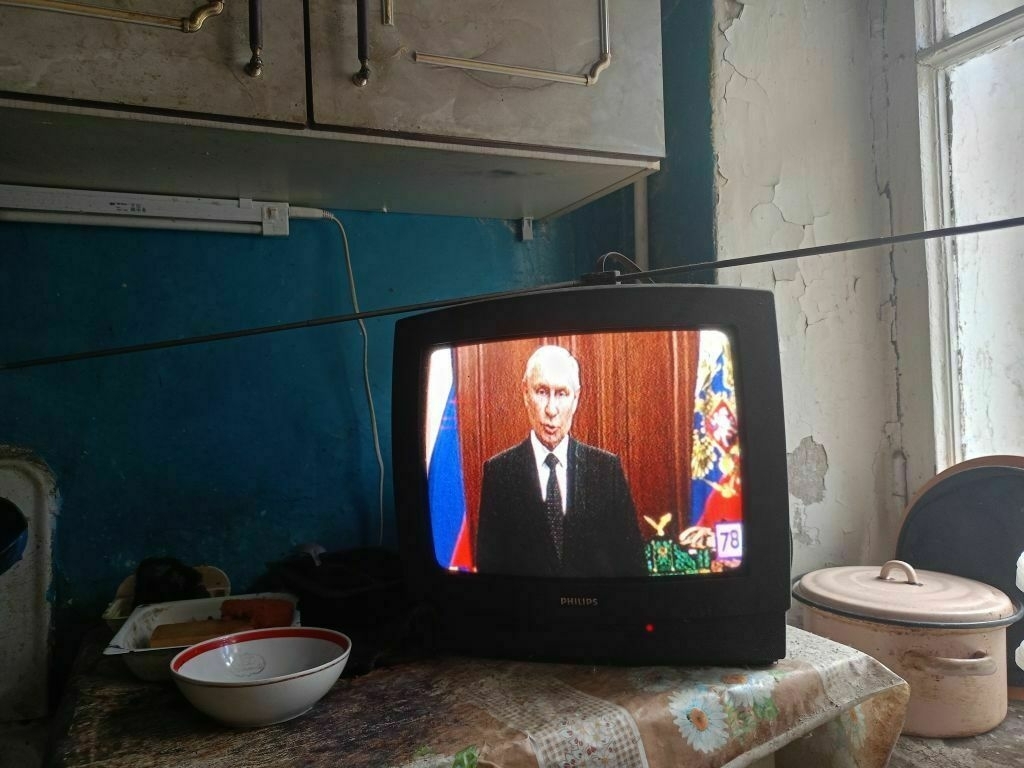
Russian President Vladimir Putin addresses the Russian public, Russia’s Armed Forces, and law enforcement amid the Wagner Group’s armed rebellion on June 24. (Photo by Artem Priakhin/SOPA Images/LightRocket via Getty Images) But, with nothing and no one to question the status quo, these two groups continually reinforce each other’s beliefs.
“This is a mutual, two-way process. Putin is definitely not a political thinker. He’s tapping all the time into a pretty fixed set of intellectuals around him,” says Suslov. “At the same time, people around him are trying to guess what Putin wants them to say."
This dynamic also pushes each group towards embracing ever more extreme declarations and viewpoints as courtiers battle to grab the president’s attention. Anti-Western sentiments spill easily into the realm of conspiracy theories. Bortnikov, for example, has publicly and repeatedly accused the West of trying to destabilize Russia, including claims that the United States aided the terrorists who attacked Moscow’s Crocus City Hall in March 2024, killing 145.
“When Putin makes a decision that tends to be final — but like any leader, he’s always open to being pushed towards a certain point,” says Hall. “So you come up with something that fits with his narrative, and you get the ear of the tsar for a while."
New bloodWith little in the way of fresh blood on the horizon and an increasingly small number of trusted confidantes, political turnover is very low.
Each promotion or fall from grace is in itself a major event.
Patrushev, a long-term Putin ally, lost his position as secretary of Russia’s Security Council in a seeming fall from grace during a cabinet reshuffle in May 2024. He now heads the newly formed Maritime Board of Russia, a position lacking the clout and prestige of his former role.
Meanwhile, the rise of Dmitriev, who has found himself at the heart of talks with the United States, is another tectonic shift and a signal that the Kremlin is open to bringing in newer, younger technocrats.
The 49-year-old investment banker is well-versed in social media and Trump-speak. He decries media outlets as “pushing fake, negative narratives about Russia to undermine peace” and is excruciatingly unsubtle in his heavy-handed praise for Donald Trump.
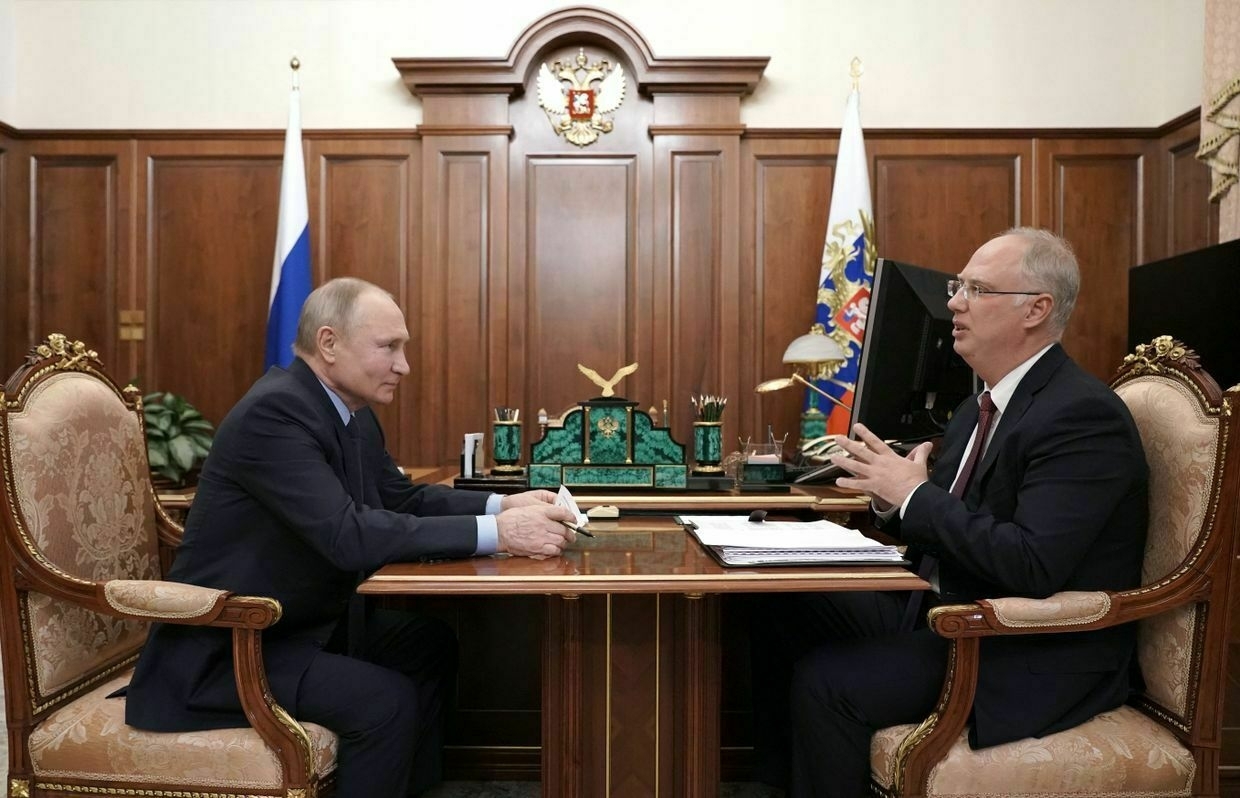
Russian President Vladimir Putin meets with the Russian Direct Investment Fund (RDIF) CEO Kirill Dmitriev in Moscow on April 2, 2021. (Alexey Druzhinin/SPUTNIK/AFP via Getty Images) Yet even newcomers to the ranks of the elite come from tried-and-tested channels. Dmitriev’s star truly began to rise when he married his wife, Natalia Popova — a close friend of Putin’s daughter, Katerina Tikhonova. While Dmitriev may have made his mark in finance and technology, personal relationships and patronage truly sealed the deal.
New faces are remarkable in this closed world, but wider innovation remains lacking. Other upcomers are also treading familiar paths.
Forty-two-year-old Maxim Oreshkin, deputy chief of staff of the Presidential Executive Office, earned his stripes like a fleet of technocrats before him in the Russian Finance Ministry. Alexey Drobinin, a rising star in Russia’s Foreign Ministry and director of Foreign Policy Planning, is making his name known with screeds on beloved Kremlin topics such as traditional values and “multipolar worlds."
“They are trying to bring a bit of new blood into the Kremlin. The Kremlin think tanks around the Valdai Club, for example, have a whole galaxy of people who are around the age of 40 and slightly older,” Suslov says.
“This is the beginning of the new political elite who will probably dominate the Russian international relations, and especially expert think tanks, in the years to come."
A disunited frontFor negotiators, this closed Kremlin echo chamber has consequences. It adds uncertainty as to which information or propositions may make their way back to Putin himself.
“I don’t necessarily think there is an awful lot of information leaking its way up to Putin because how can it?” says Hall.
“We’ve seen enough times that Putin believes that Russia is the third biggest economy in the world. We’ve seen that he believes that Ukrainian deaths are astronomical, but Russian deaths are very few. I don’t think he’s receiving the information. It would make it very hard to see a viable reality in terms of negotiation."
Yet such concerns also assume that the Kremlin is genuinely looking for peace.
The uniform ideology in Moscow corridors or power should ensure a united front at the negotiating table. But reports that different Russian negotiators have been given different information or even pitted against each other suggest that there are no intentions of seriously using such a front.
-
Ukraine war latest: Ukraine developing strategic-level air defense system; Russia intensifies assaults against Kharkiv Oblast
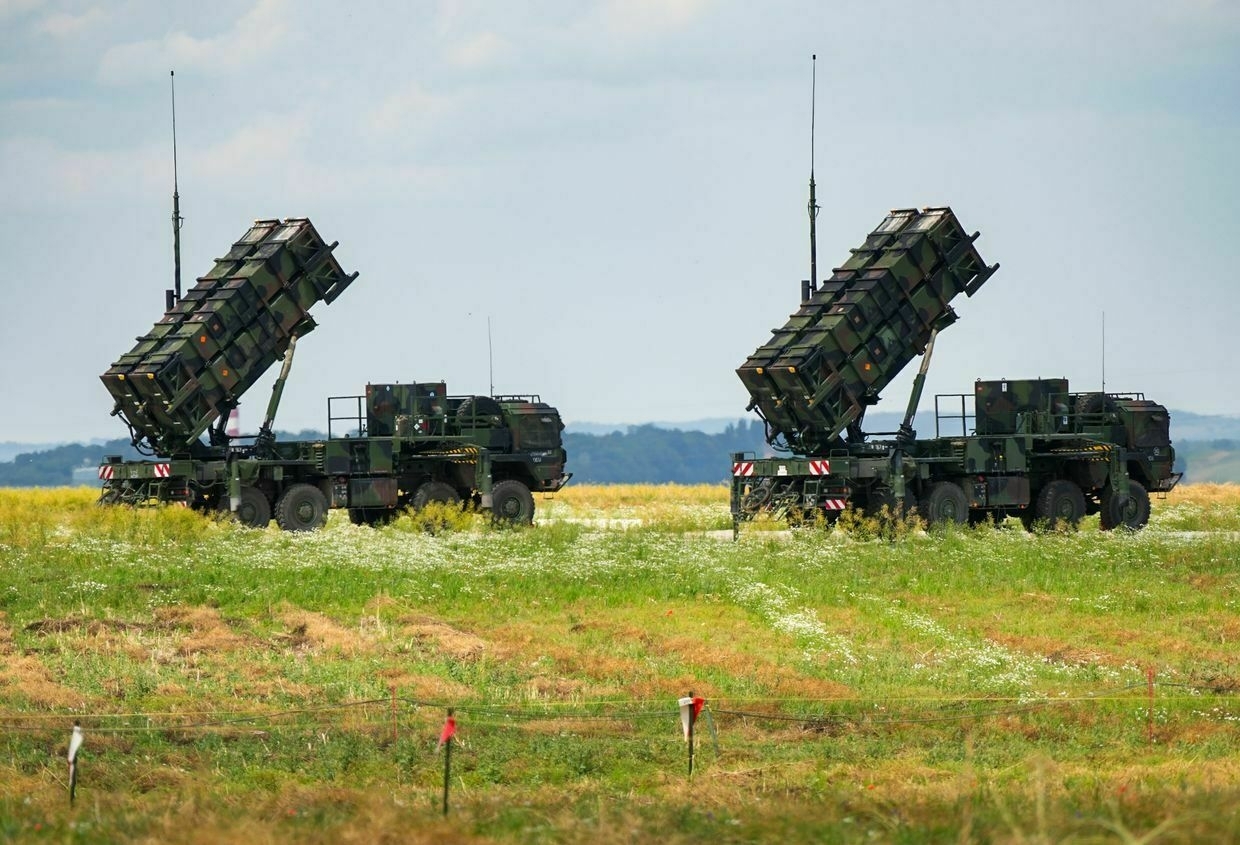
Key developments on April 14:
- Ukraine developing strategic-level air defense system, foreign minister says
- Russia tries to land troops, break through Ukrainian defenses near Vovchansk in Kharkiv Oblast, military says
- Death toll in Russian April 13 missile strike on Sumy rises to 35
- EU secures two-thirds of 2 million rounds for Ukraine, Kallas says
- Merz signals Ukraine could use Taurus missiles to target Crimea, Kerch Bridge
- Ukraine ready to buy 10 Patriot systems for $15 billion, Zelensky says
Ukraine is designing its own strategic-level air defense system, Foreign Minister Andrii Sybiha announced on April 14 during a speech at the EU Foreign Ministers Council meeting.
Since the beginning of the full-scale invasion, Ukrainian officials have repeatedly urged Western allies to increase air defense support, warning that current supplies are not enough to counter the intensity of Russian attacks.
During the meeting, Sybiha called on allies to strengthen Ukrainian air defenses and provide additional systems, missiles, and spare parts. He also invited EU partners to invest in developing Ukraine’s air defense system, saying it would speed up its implementation.
Sybiha’s speech comes a day after Russia launched two ballistic missiles at the city of Sumy, located in Ukraine’s northeast 30 kilometers (18 miles) from the Russian border. The strike killed over 30 people and injured more than 115.
"(Russian President Vladimir) Putin will move further into Europe and closer to your homes if he is not stopped in Ukraine. This is the reality," Sybiha said.
"And we don't want your countries ever to see cluster ballistic missiles strike residential neighborhoods or playgrounds. That is why we must act now to achieve peace, strengthen Ukraine, and increase pressure on Moscow," the minister added.
The second of the two missiles launched at Sumy on April 13 was loaded with fragments and exploded mid-air to "inflict maximum damage on people on the street," Head of the Sumy City Military Administration Serhiy Kryvosheyenko said following the attack.
In January, President Volodymyr Zelensky said that Ukraine was negotiating with the United States to obtain a license to manufacture air defense systems in the country. Zelensky did not specify what technology was being discussed.
Highly advanced U.S. Patriot systems have played a crucial role in protecting Ukraine's sky. They are capable of downing even the most advanced ballistic missiles, such as Kinzhals.
Russia tries to land troops, break through Ukrainian defenses near Vovchansk in Kharkiv Oblast, military saysRussian forces attempted to break through the Ukrainian defense and land troops near the town of Vovchansk in Kharkiv Oblast, Ukraine's Khortytsia group of forces reported on April 14.
Vovchansk, located just 5 kilometers (3 miles) from the Russian border in Kharkiv Oblast and once home to 17,000 people, has witnessed multiple battles.
Vovchansk endured a Russian occupation until September 2022 when Ukrainian troops liberated the town, only to face heavy fighting again after Russia began a new push in May 2024, forcing many residents to flee their homes.
The Russian military used three armored vehicles and eight motorized vehicles in the recent assault. Ukrainian forces destroyed two Russian armored vehicles and six motorized vehicles, according to the report.
"The search and destruction of the remnants of the enemy's assault groups continues," Khortytsia said.
Maksym Komarenko, deputy commander of the 58th Separate Infantry Brigade's rifle battalion, confirmed to Suspilne that Russia had increased the number of attacks in the Kharkiv sector of the front line.
"An infantry assault is always accompanied by something. Now the number of air raids has increased, and the number of drones flying at our positions and the settlements that precede Kharkiv has increased," Komarenko said.
Previously, Khortytsia said Russian forces were regrouping and preparing for a renewed assault on Kharkiv Oblast.
In an official statement, Khortytsia reported that Russian troops are actively replenishing their units and preparing to resume offensive operations in the region.
The rise and fall of Ukraine’s Kursk gambitAs Ukraine’s seven-month-long incursion into Russia’s Kursk Oblast came to what appears to be its end, Ukrainian soldiers and military experts are questioning the operation’s goal and the long-term effect it will have on the war. Ukraine launched a surprise cross-border incursion into Russia’s Kurs…The Kyiv IndependentAsami Terajima
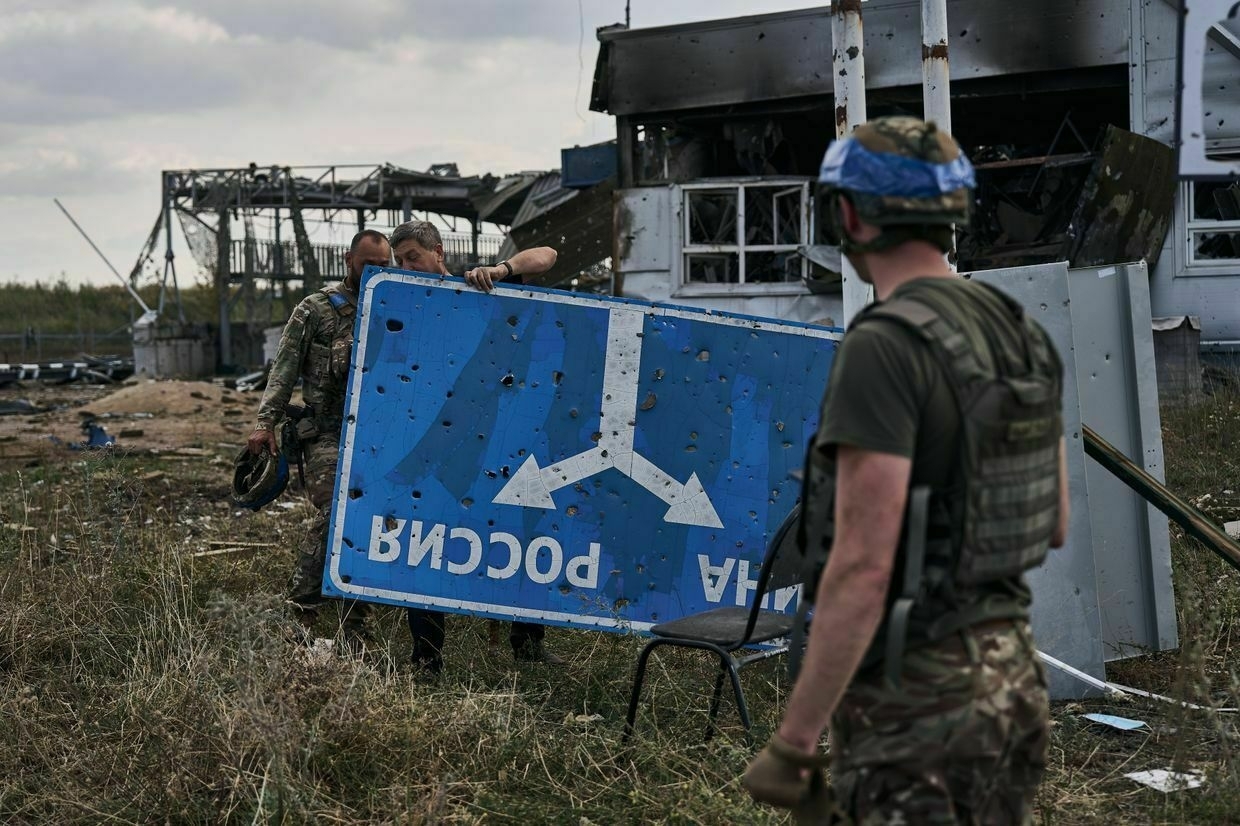
Death toll in Russian April 13 missile strike on Sumy rises to 35The Russian April 13 attack on the city center of Sumy killed 35 people, Prosecutor's Office of Sumy Oblast reported on April 14.
The attack occurred on Palm Sunday and is one of the deadliest on Sumy.
Sumy, a city close to the Russia-Ukraine border, has been the target of constant strikes since the onset of Russia's full-scale invasion in February 2022. Russia used cluster munitions in the attack, outgoing U.S. Ambassador to Ukraine Bridget Brink said on April 13.
An 11-year-old boy and a 17-year-old man are among the killed, the report read.
One hundred twenty people, including 105 adults and 15 children, also sought medical assistance. Forty-three victims, nine of whom are children, are currently undergoing inpatient treatment, according to Sumy City Council.
European leaders widely condemned the attack. President Volodymyr Zelensky thanked those who expressed solidarity but emphasized that condemnation alone is not enough.
The missile strike occurred amid ongoing diplomatic efforts to reach a ceasefire. Russia has refused to join a U.S.-proposed 30-day full truce and has continued attacks despite partial agreements to limit strikes on infrastructure and the Black Sea.
‘Putin believes he has the upper hand’ — Ukraine braces for a new Russian spring offensiveIn a way unseen since the start of the full-scale invasion, the daily grind of the front line in Russia’s war against Ukraine has taken the back seat in world headlines. The dizzying U.S. President Donald Trump-led attempts to negotiate peace in the world arena dominate the news cycleThe Kyiv IndependentFrancis Farrell
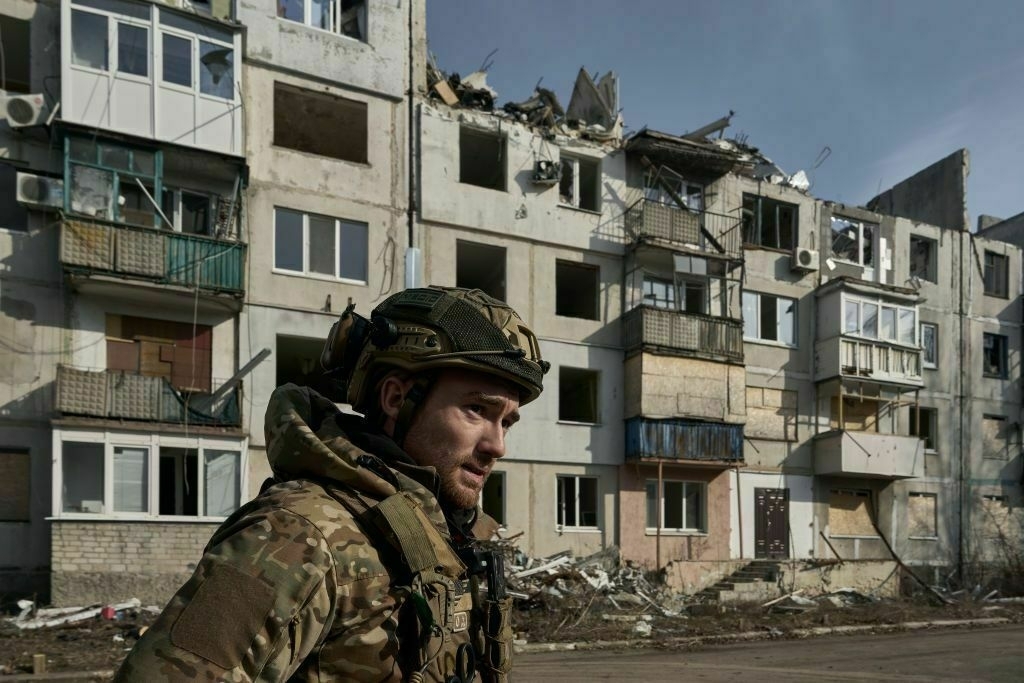
EU secures two-thirds of 2 million rounds for Ukraine, Kallas saysThe European Union has secured two-thirds of the 2 million artillery rounds pledged to Ukraine, EU foreign policy chief Kaja Kallas said on April 14.
"I'm happy to see we already have two-thirds of my ammunition initiative together," Kallas told reporters ahead of a meeting of EU foreign ministers in Luxembourg, referring to an initiative to provide Ukraine with 2 million high-caliber rounds worth 5 billion euros ($5.7 billion).
The initiative seems to be progressing, as Kallas said on April 3 that the EU had obtained only around half of the needed amount from its members.
The 2 million shells are part of a broader proposal initially suggested by Kallas for a 40-billion-euro ($45.6 billion) defense fund for Ukraine. This more ambitious plan has yet to gain full consensus among EU leaders.
The EU foreign policy chief stressed that the European bloc needs to do more, noting that European assistance commitments for this year are already greater than for 2024.
"European countries have already committed to 23 billion euros ($26 billion), which is more than last year," Kallas said. "But we also need to put pressure on Russia so that they would stop this war."
Speaking ahead of the EU summit, Kallas emphasized the urgency of support, citing ongoing civilian casualties from Russian attacks.
"It's been a month since Ukraine agreed to an unconditional ceasefire. We haven't seen the same from Russia," she said. The comments come shortly after Russia launched a deadly missile attack against the Ukrainian city of Sumy on Palm Sunday on April 13, killing over 30 people and injuring over 100.
Kallas noted that the EU foreign ministers would discuss the consequences for Russia after its latest attacks on Ukrainian civilians over the weekend.
"To want peace, it takes two. To want war, it takes only one," she said. "Russia clearly wants war. Everyone who wants the killing to stop must apply maximum pressure on Russia."
Inside Ukraine’s desperate race to train more soldiersNew recruit Vitalii Yalovyi knew one thing after completing the Ukrainian military’s boot camp: He was not prepared for war. The 37-year-old felt physically unfit, forcing him to miss some courses during the month-long training. His leg was still hurting from long daily walks at a training center i…The Kyiv IndependentAsami Terajima
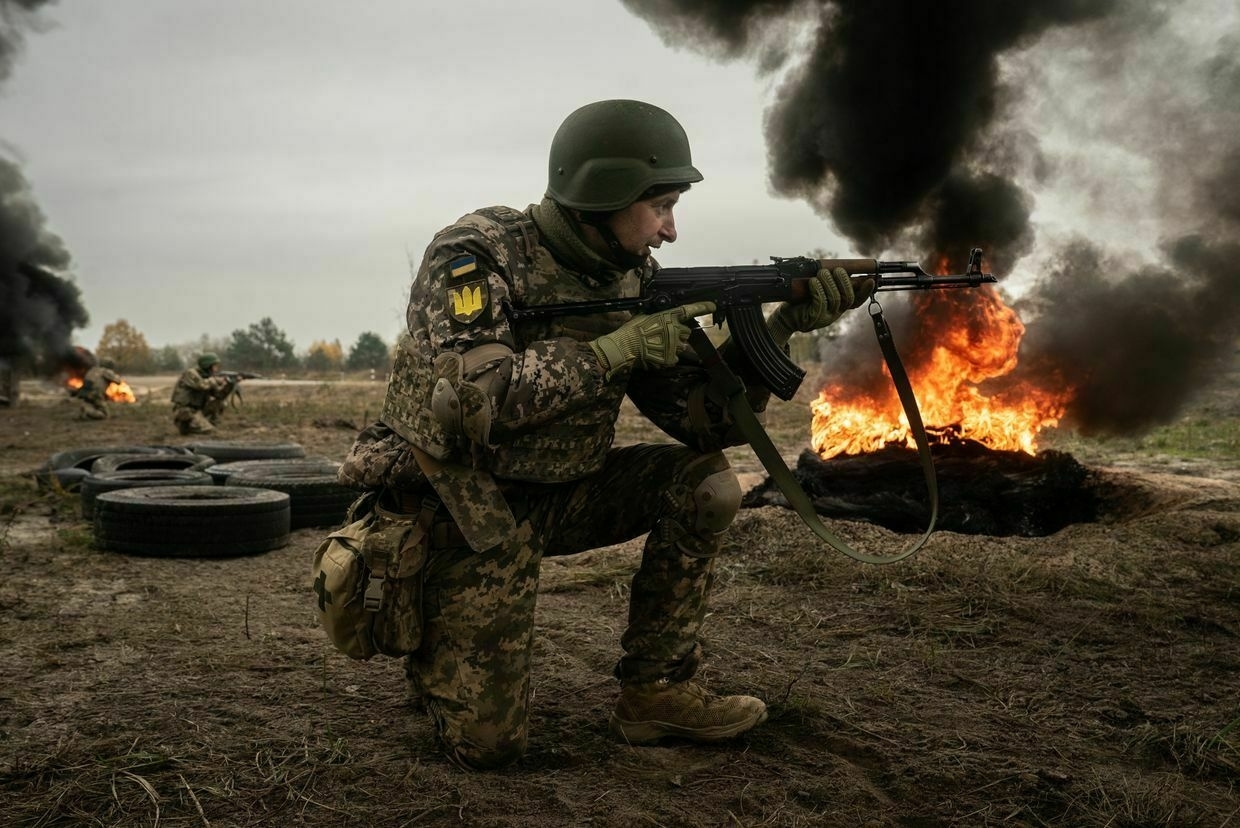
Merz signals Ukraine could use Taurus missiles to target Crimea, Kerch BridgeFriedrich Merz, Germany's chancellor-in-waiting, suggested on April 13 that long-range Taurus missiles, if delivered to Ukraine, could be used to target strategic Russian military infrastructure in occupied Crimea, including the Kerch Bridge.
The 19-kilometer-long (12-mile) Crimean (Kerch) Bridge, constructed following Russia's illegal occupation of Crimea in 2014 and completed in 2018, serves as a vital supply route for Russian forces. The bridge has been targeted by Ukraine multiple times, suffering heavy damage in strikes in October 2022 and July 2023.
In an interview with ARD's Caren Miosga, Merz emphasized the need to support Ukraine in moving from a reactive to a proactive stance on the battlefield, saying Kyiv must be equipped to "shape events" and "get ahead of the situation."
"If things continue as they are, if, for example, the most important land connection between Russia and Crimea is destroyed, or if something happens on Crimea itself, where most of the Russian military logistics are located, then that would be an opportunity to bring this country strategically back into the picture finally," Merz said.
While outgoing Chancellor Olaf Scholz has repeatedly blocked the delivery of Taurus missiles over his concerns about escalation, Merz has long criticized that stance.
With Merz poised to take office following his Christian Democrats' election win, the decision to supply Taurus missiles could soon return to the political agenda. It remains uncertain whether his future coalition partners from the Social Democrats will back the move.
Merz also clarified that he was not calling for direct German involvement in the war but rather for arming Ukraine with the capability to take the initiative.
The German politician has previously voiced support for supplying Taurus missiles to Ukraine, stressing that such a step must be coordinated with European allies.
"Our European partners are already supplying cruise missiles," he reiterated on April 13, citing British, French, and U.S. efforts. "If it is coordinated, then Germany should participate in it."
Ukraine ready to buy 10 Patriot systems for $15 billion, Zelensky saysUkraine is ready to purchase 10 U.S.-made Patriot air defense systems for $15 billion to shield densely populated cities from ongoing Russian missile and drone attacks, President Volodymyr Zelensky said in an interview with CBS News released on April 13.
Zelensky said he had made the offer directly to U.S. President Donald Trump and previously raised it with former President Joe Biden's administration.
"I told President Trump very clearly what we can do," Zelensky said.
Ukrainian officials have repeatedly urged Western allies to increase air defense support, warning that current supplies are not enough to counter the intensity of Russian attacks.
"There is the Patriot system, and you have many of them. You also have production capacity. There are a few steps to protect Ukraine. Step number one: one system costs $1.5 billion — we are ready to buy it."
Zelensky said Ukraine is ready to purchase 10 Patriot systems.
"That's $15 billion. We are ready to pay it. We will find the money and pay for everything," he added.
While Kyiv and Moscow agreed to a U.S.-brokered partial ceasefire on March 11, Russian attacks against Ukrainian cities did not abate in the month that followed.
Russia launched 70 missiles, 2,200 Shahed-type drones, and 6,000 guided aerial bombs over the past 30 days, Ukraine's Foreign Minister Andrii Sybiha said on April 11. A Russian attack on Sumy on April 13 killed at least 35 people and injured 119. Another Russian strike on Kryvyi Rih on April 4 killed 20 people, including nine children, and injured over 70.
Ukraine has already agreed to accept a complete ceasefire on all hostilities as soon as Russia abides by the same terms. Russia continues to refuse.
Note from the author:
Ukraine War Latest is put together by the Kyiv Independent news desk team, who keep you informed 24 hours a day, seven days a week. If you value our work and want to ensure we have the resources to continue, join the Kyiv Independent community.
-
Ukraine denies 100,000 troop casualty claim, reveals true war toll
In a recent CBS News 60 Minutes interview, Ukrainian President Volodymyr Zelensky was said to discuss the death toll of Ukrainian troops during the ongoing war. However, according to Presidential Spokesman Sergey Nikiforov, the Ukrainian leader did not mention that 100,000 soldiers had been killed. It was journalist Scott Pelley who quoted this figure off-camera, as reported by Liga.net.
President Zelensky emphasized, "Our people are paying the highest price," with his spokesperson highlighting the grim reality. "There is no higher price. We have given all our money—everything we possess financially. But most importantly, we have given [lives] of our people," Zelensky stated in his CBS interview.
The 60 Minutes segment further reported that Russia continues to bombard Ukrainian cities daily, resulting in 13,000 civilian casualties, including over 600 children. However, journalists did not clarify the source of these numbers.
"1,700 attacks on schools, more than 600 children killed, 780 attacks on medical facilities, 13,000 civilians dead, and up to 100,000 Ukrainian troops lost," the CBS report stated.
Previous figures from former Ukrainian Armed Forces Commander Valeriy Zaluzhnyi, now Ukraine's ambassador to the UK, listed 50,000 troops killed and 300,000 wounded.
As per President Zelensky's data from December 2024, since February 24, 2022, 43,000 Ukrainian soldiers have died in battle, with 370,000 wounded. Russian loses are reported to exceed 750,000, including 198,000 killed and over 550,000 wounded.
On December 5, 2024, journalist Yuriy Butusov claimed that the Ukrainian General Staff had reported 105,000 Ukraine military casualties including those killed and missing at a meeting of the Commander-in-Chief's Headquarters, comprising more than 70,000 confirmed dead and 35,000 missing.
U.S. President Donald Trump stated on December 8 that Ukraine has lost 400,000 troops, while Russian losses stand at 600,000, including both killed and wounded.
President Zelensky reiterated during the same interview that Russian President Vladimir Putin stands no chance of fully occupying Ukraine.
Additionally, Zelensky mentioned he wishes to vividly demonstrate the true face of the war to U.S. President Donald Trump. According to Zelensky, this would help Washington grasp the reality and the stakes involved.


